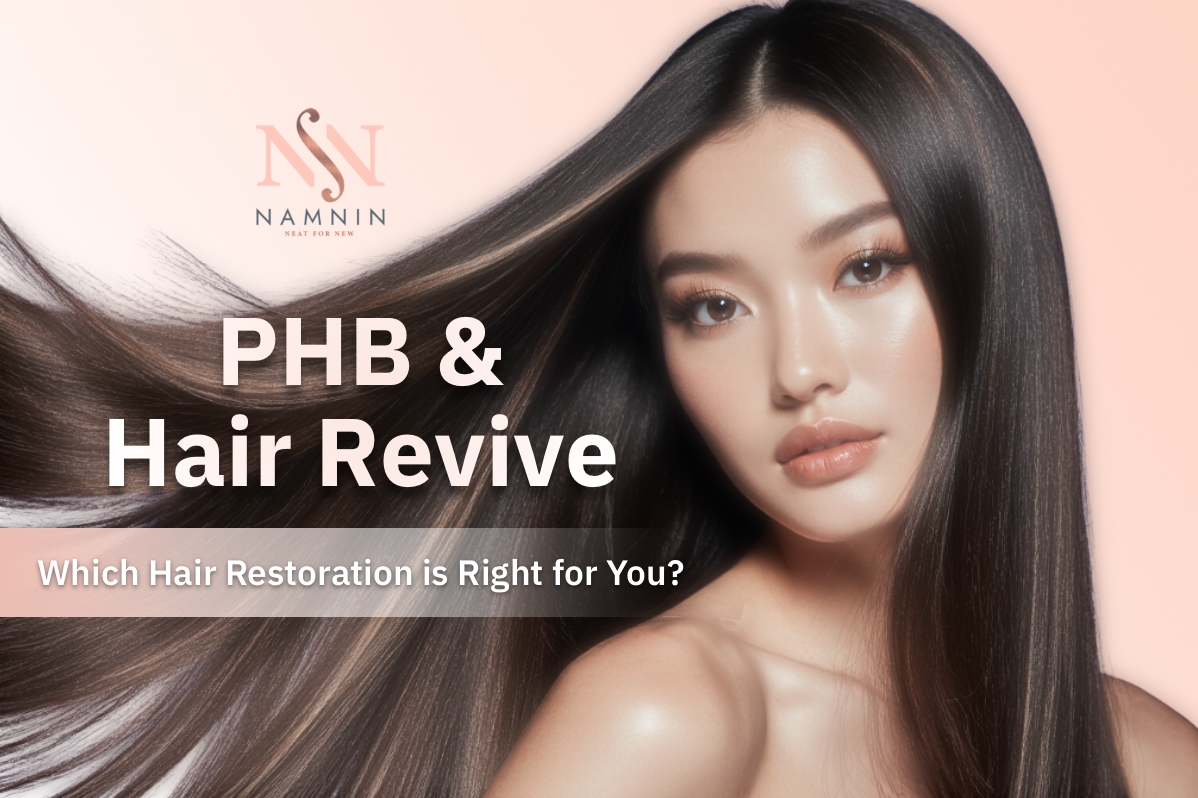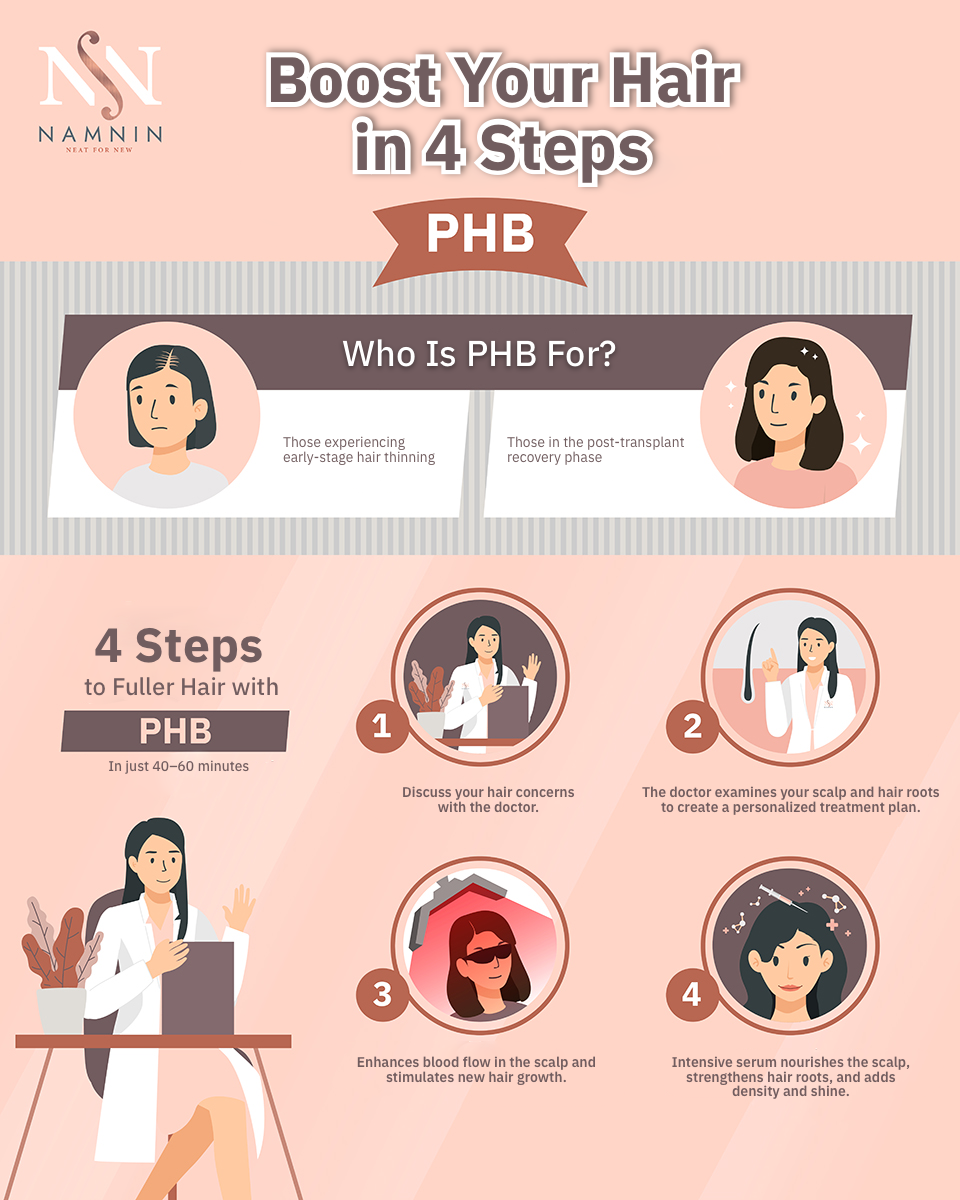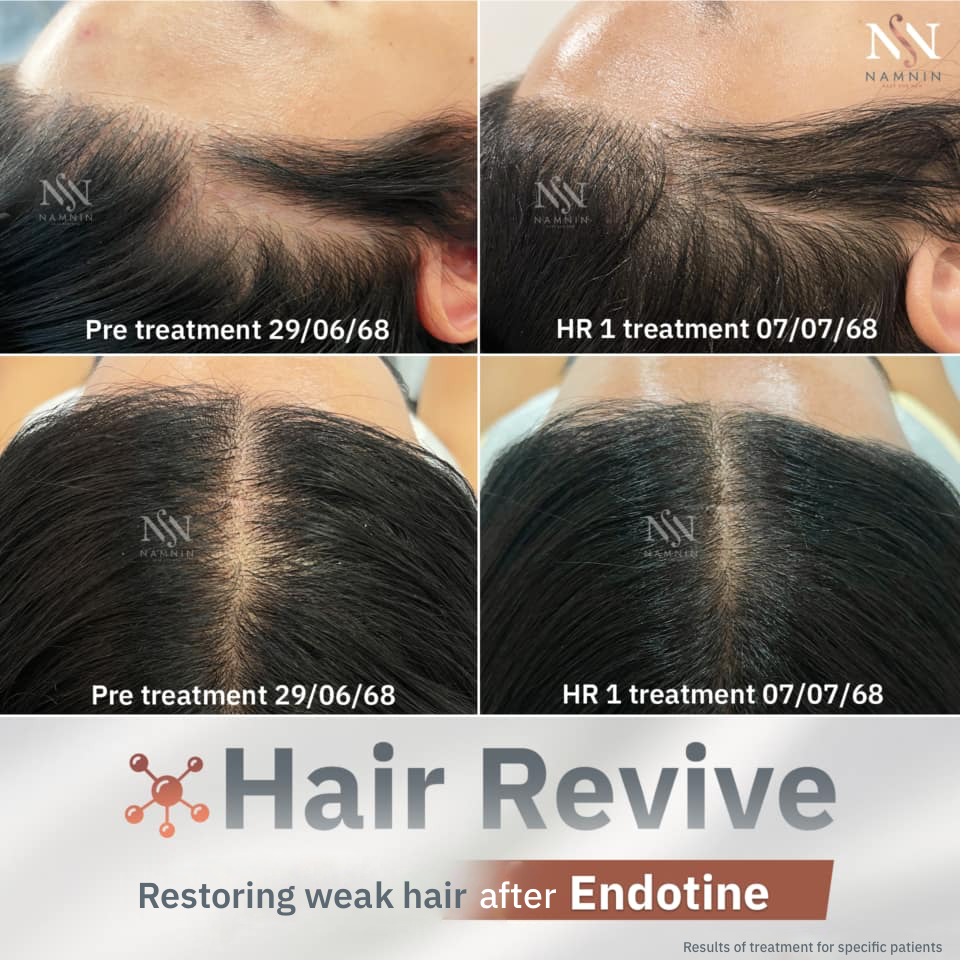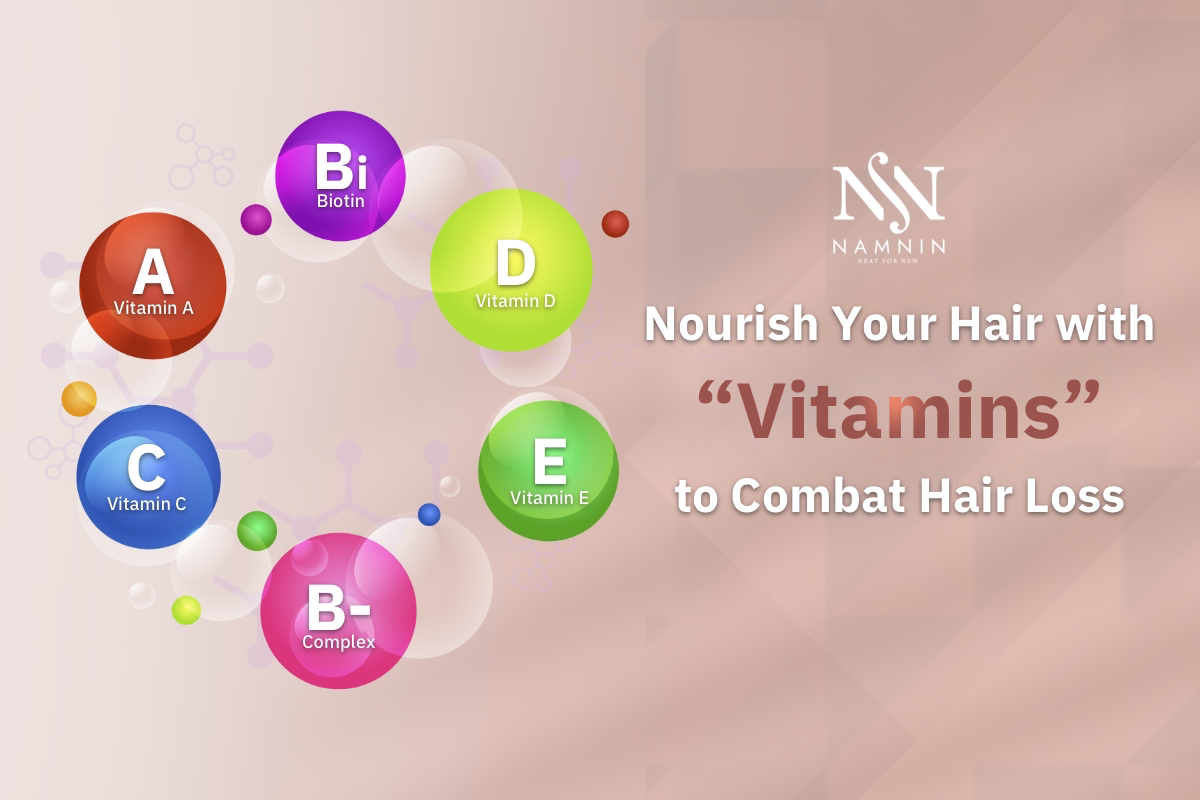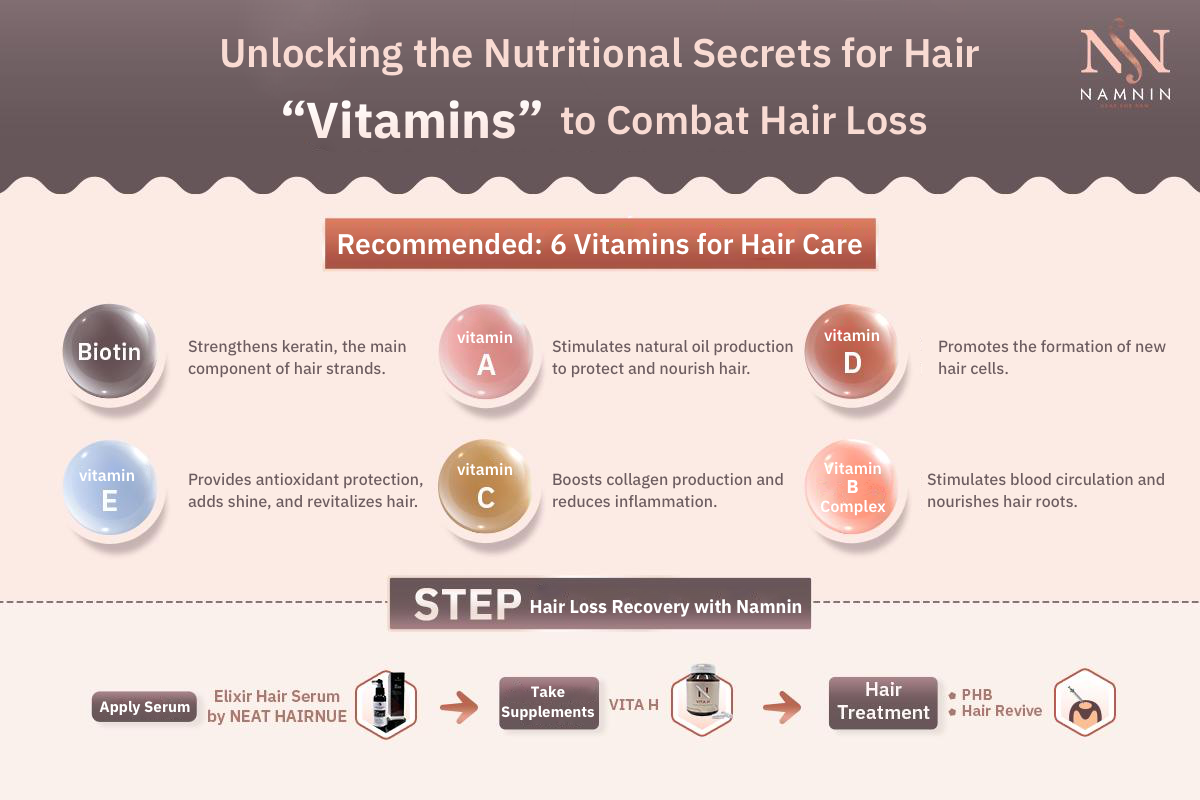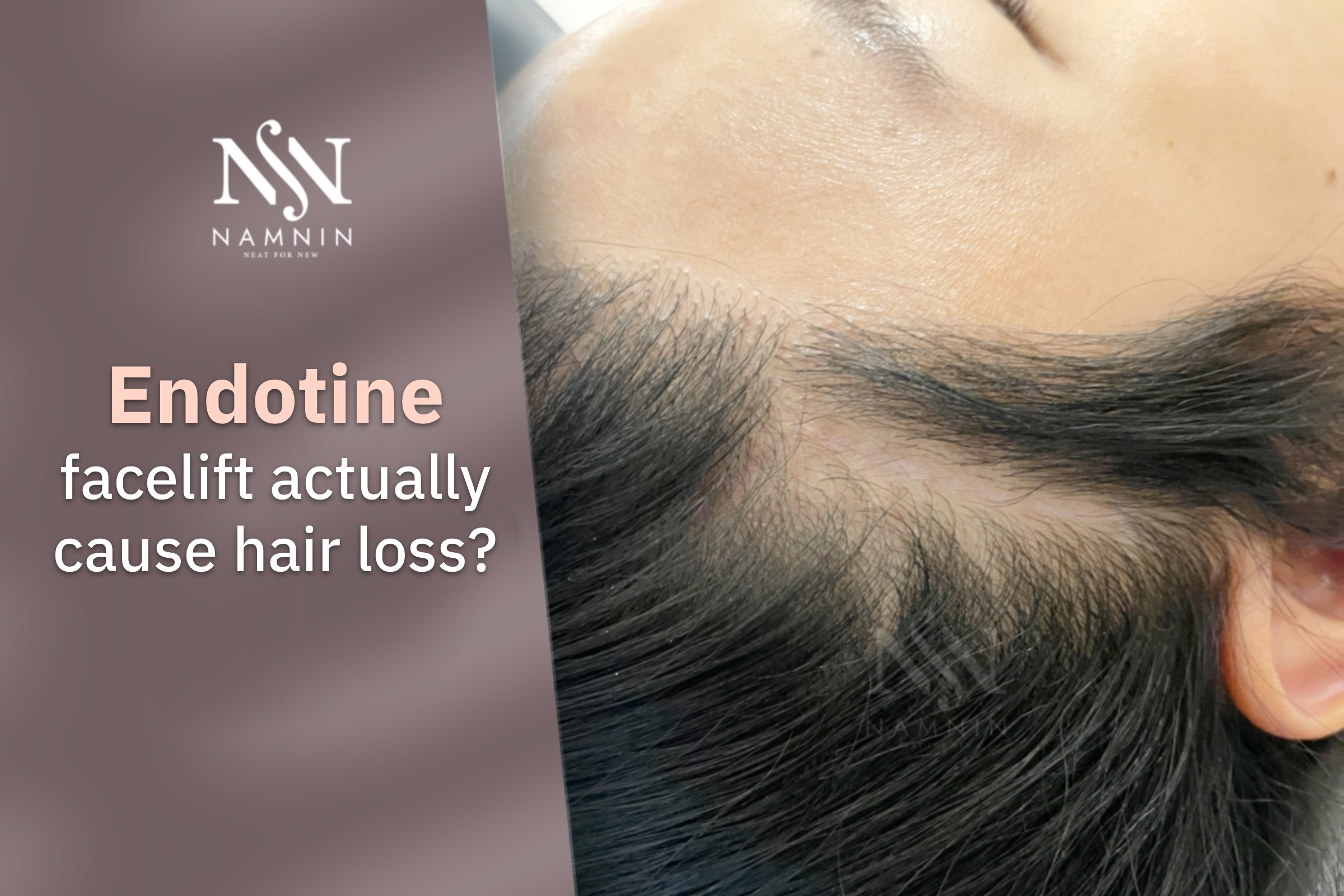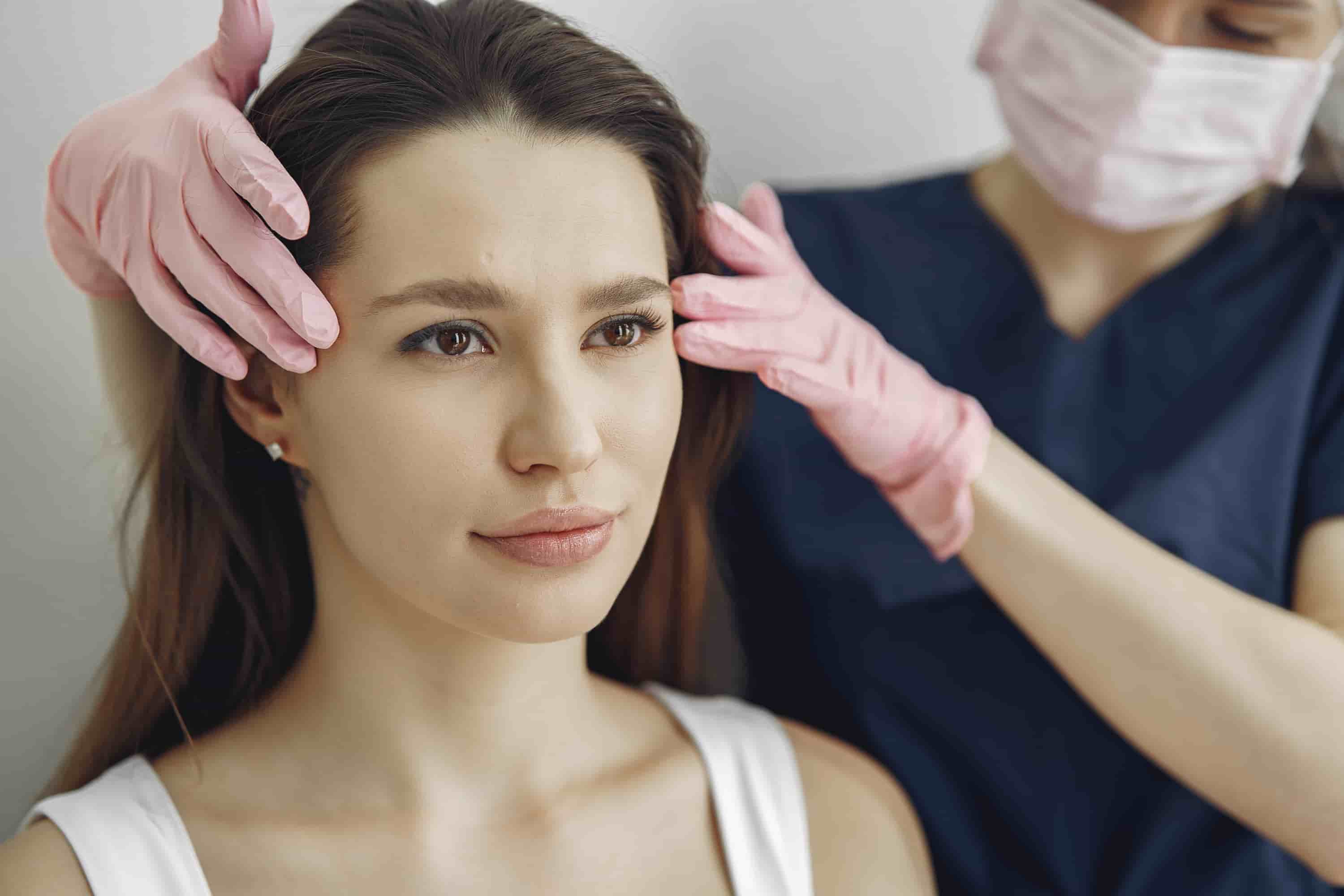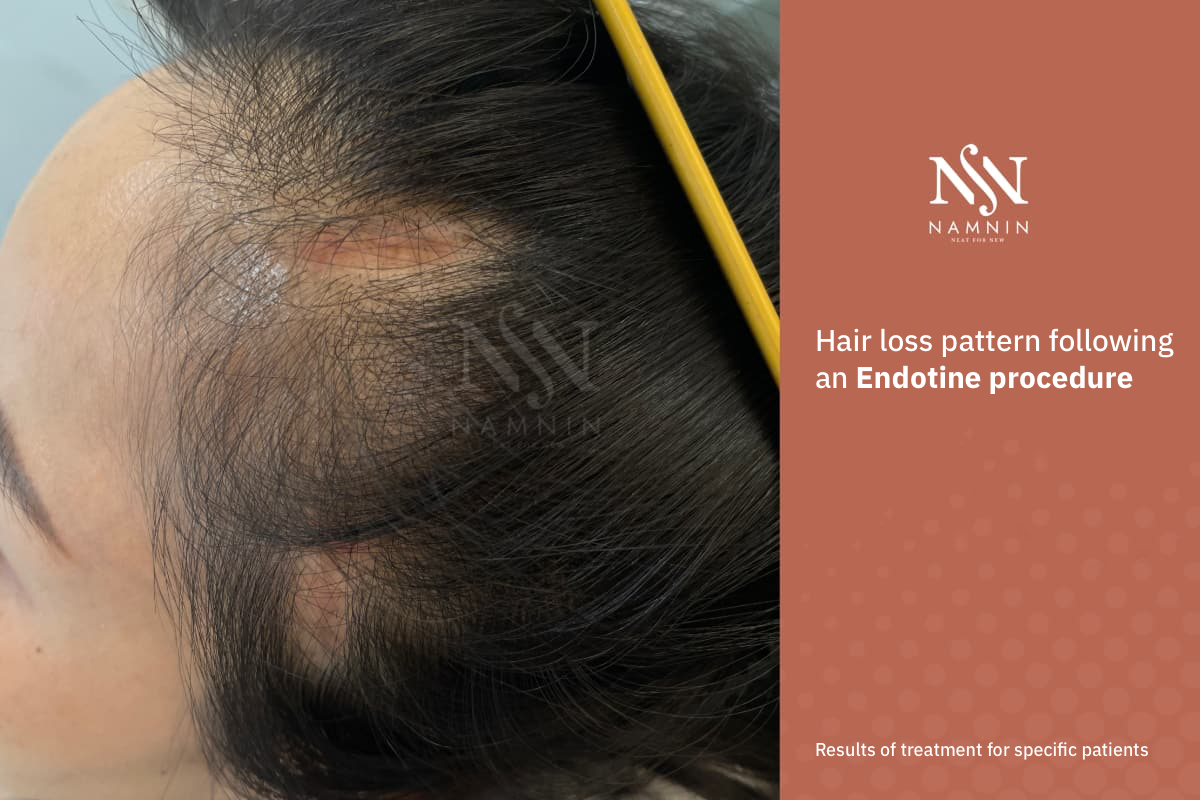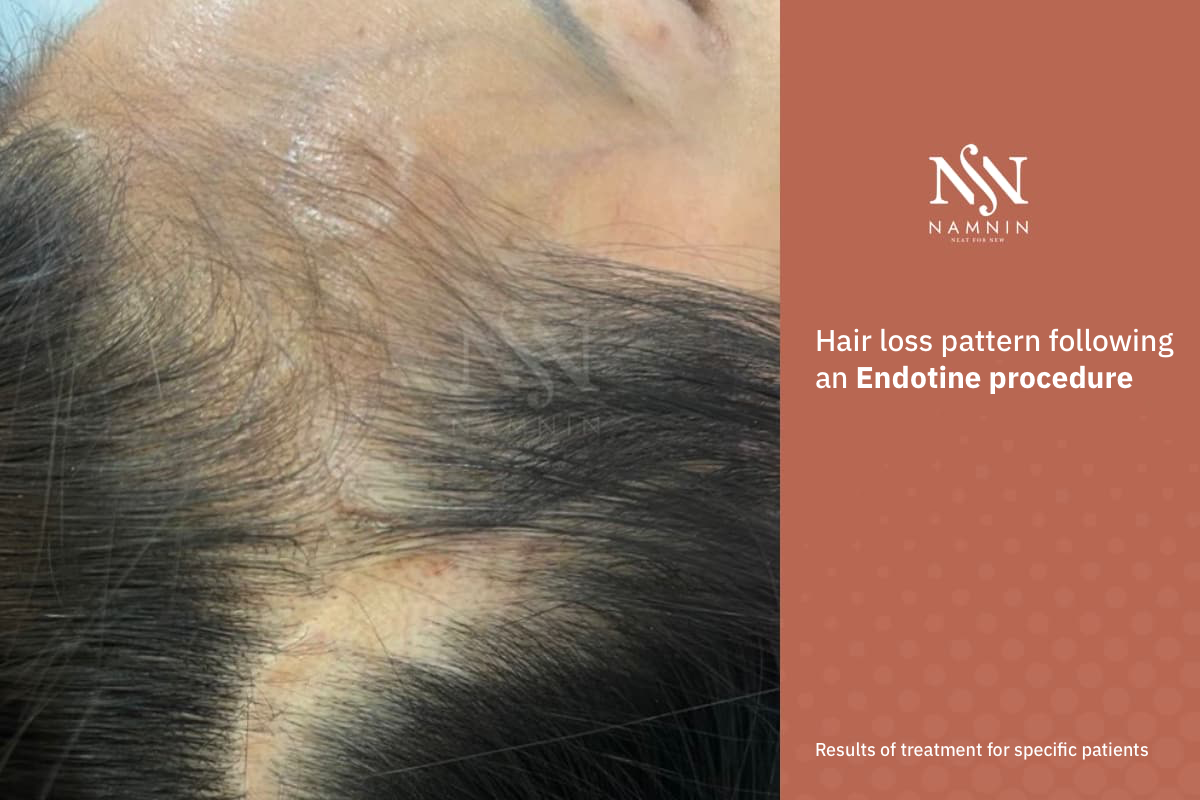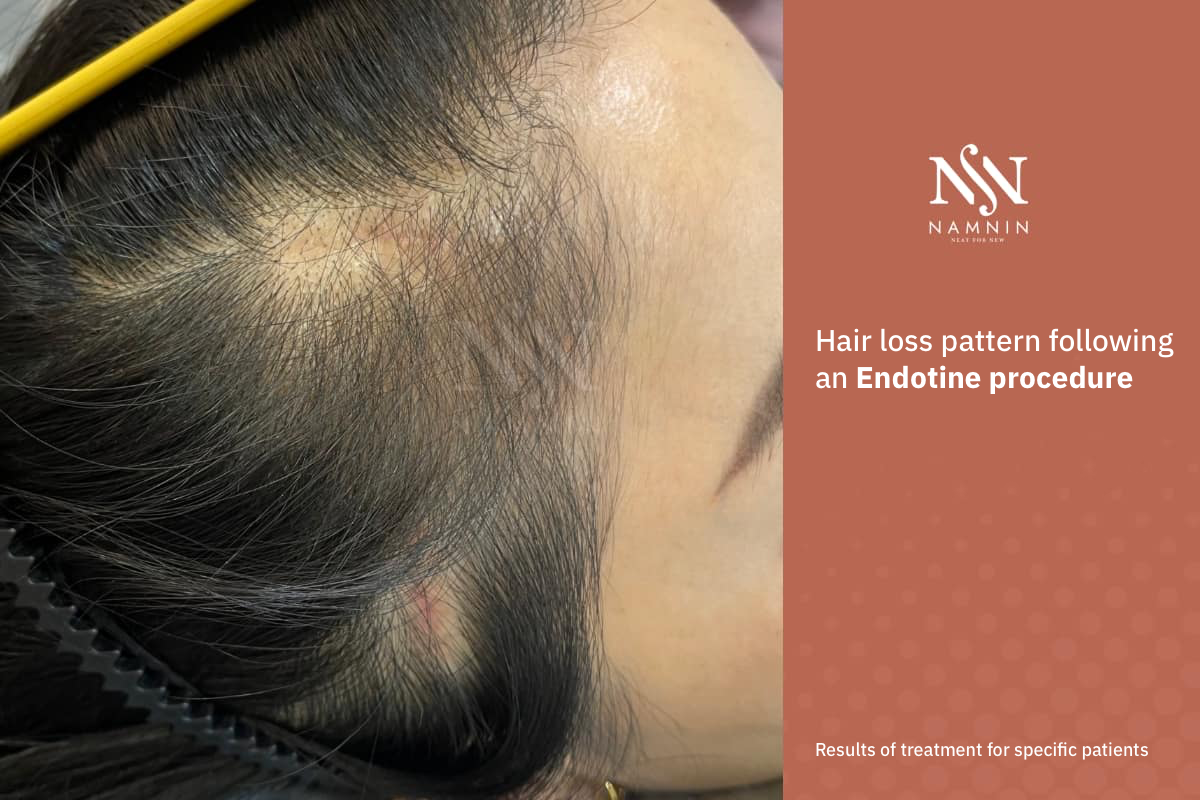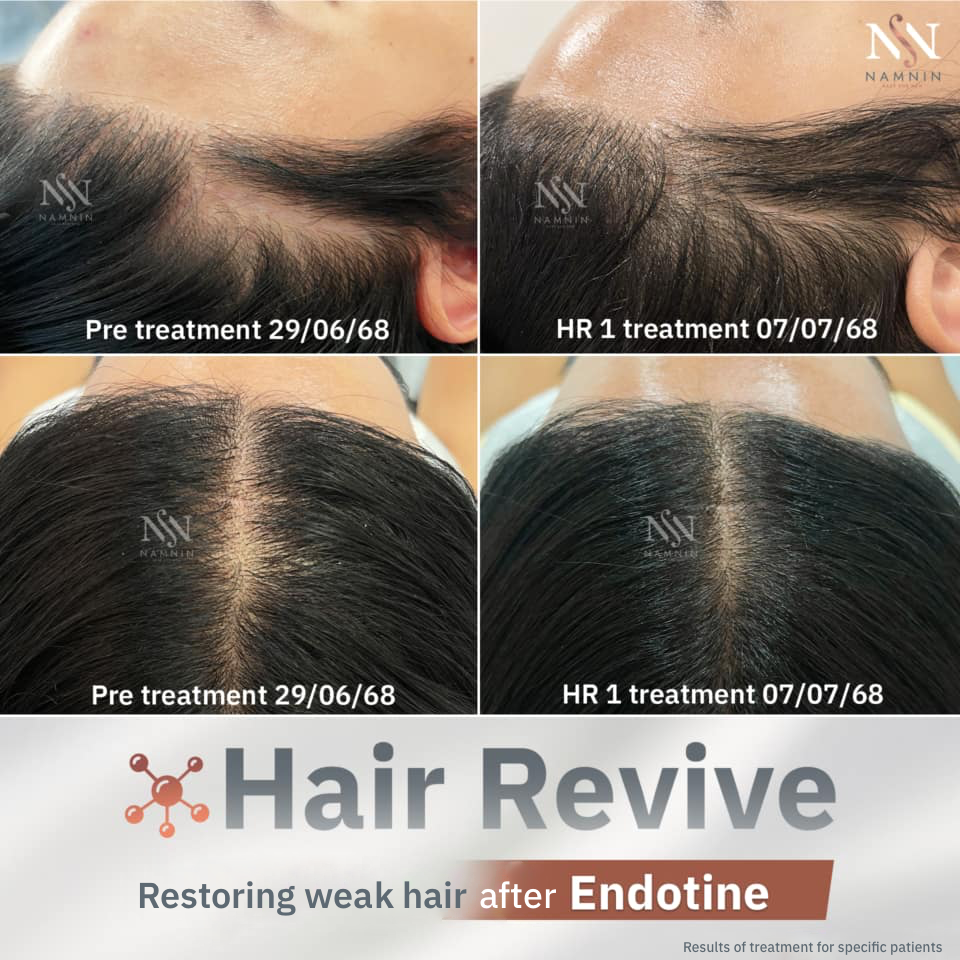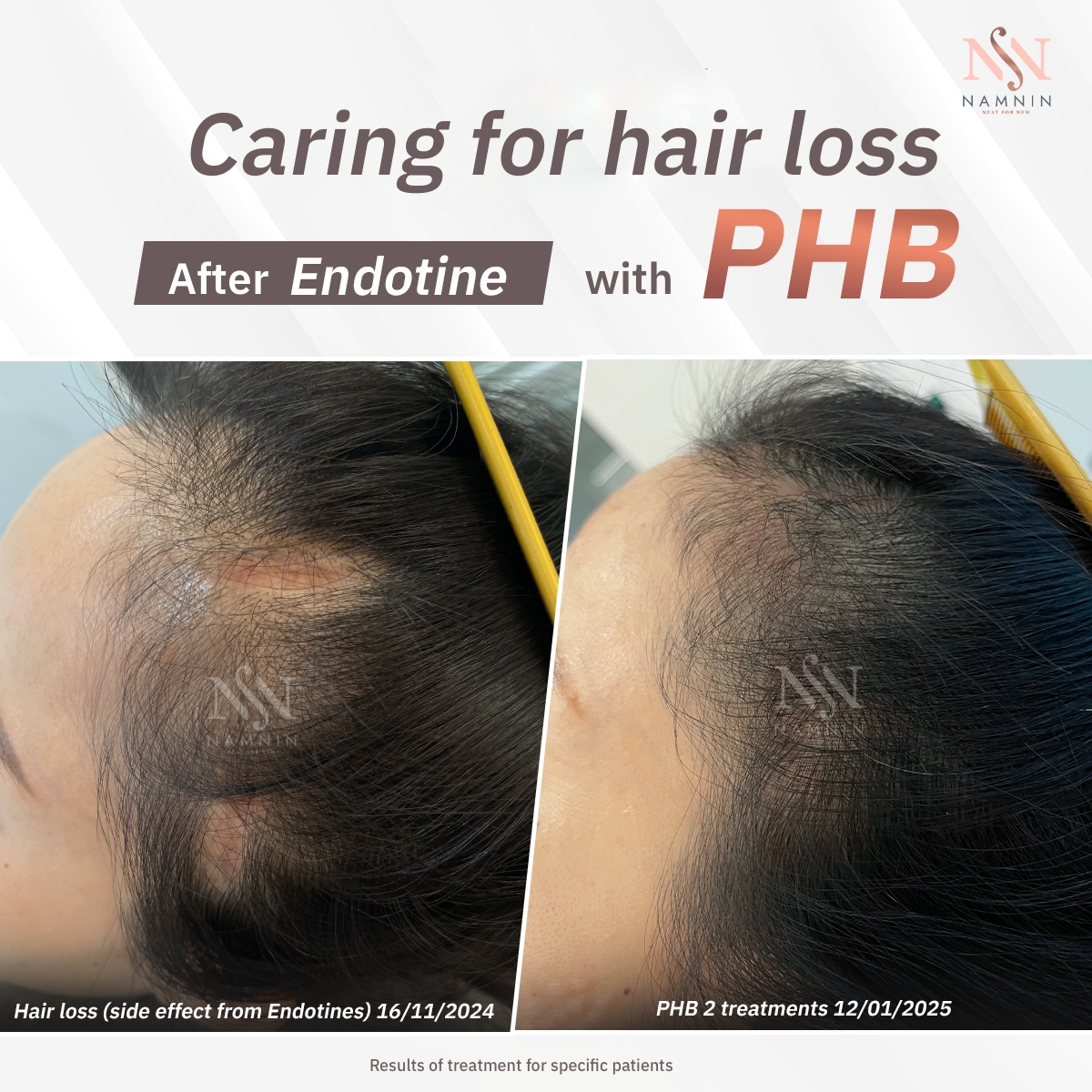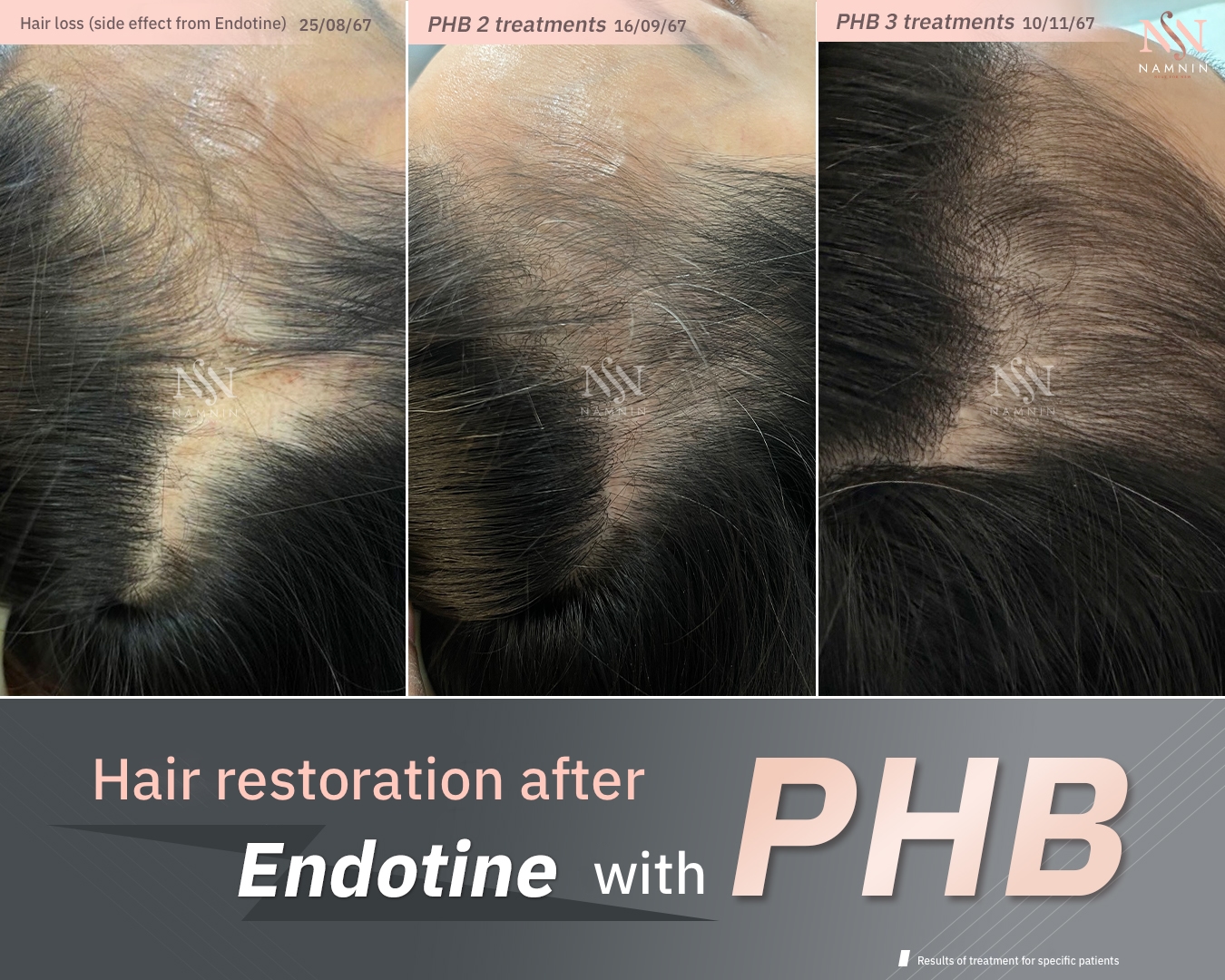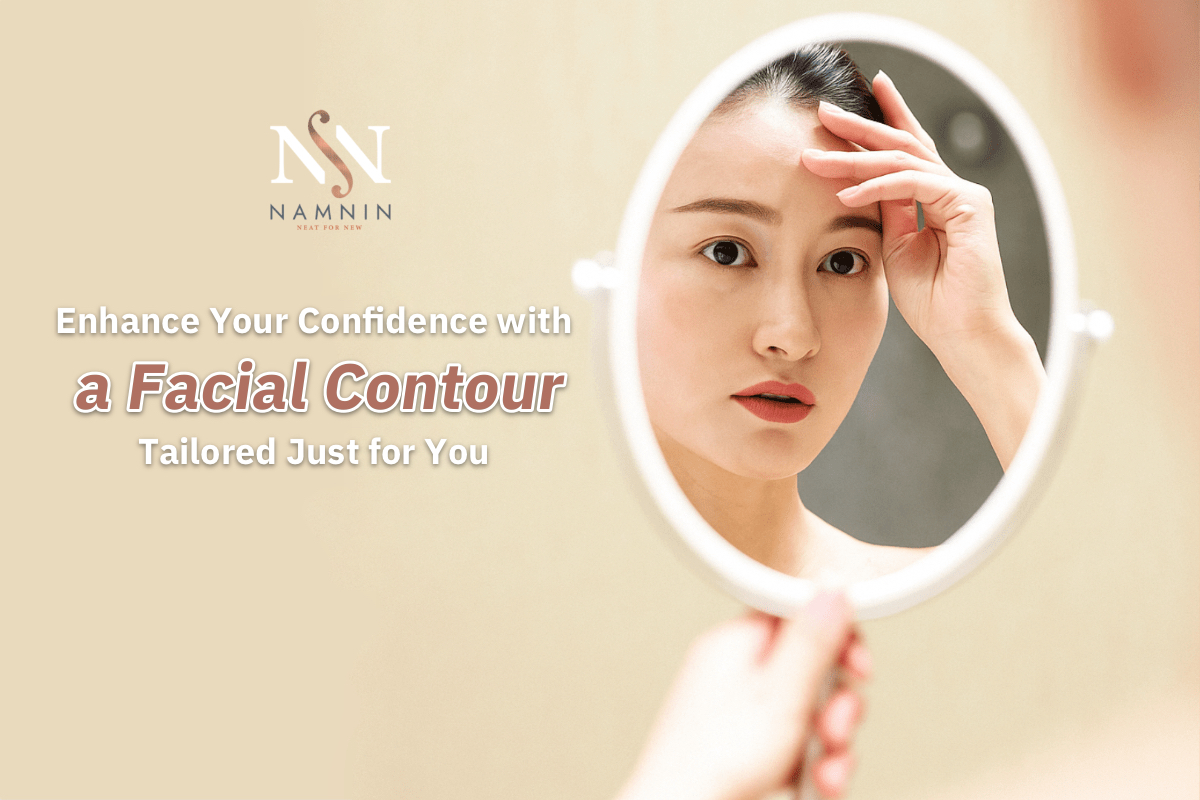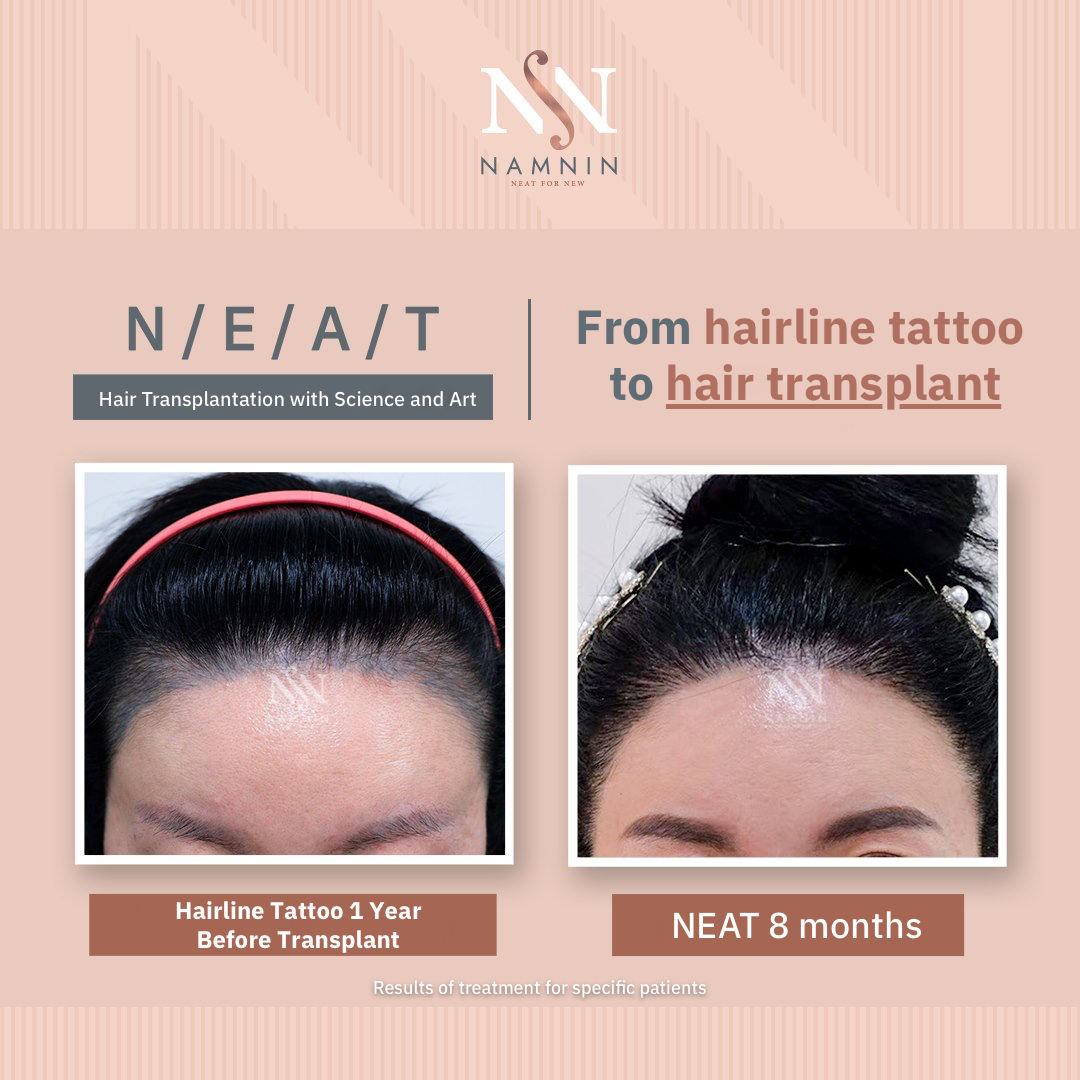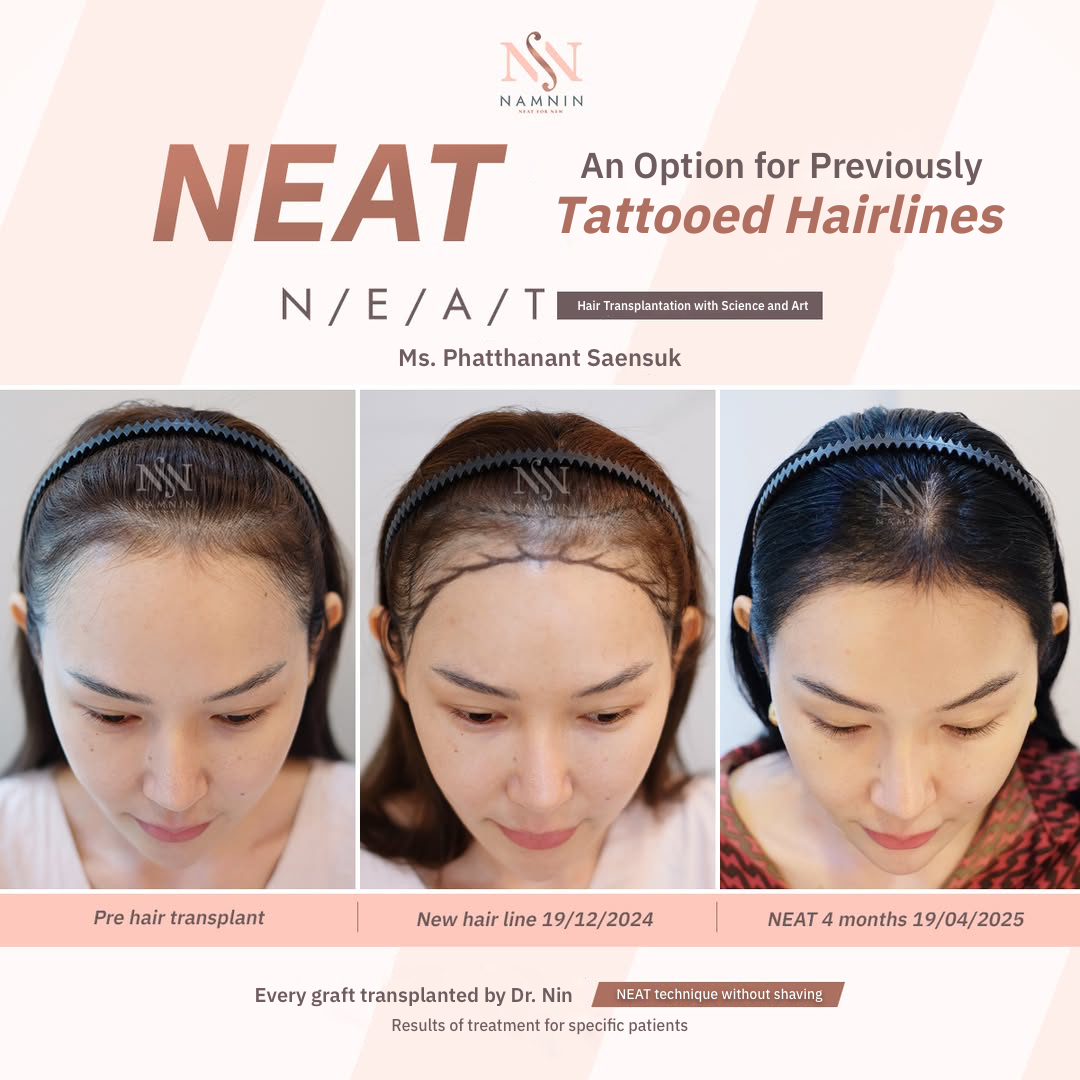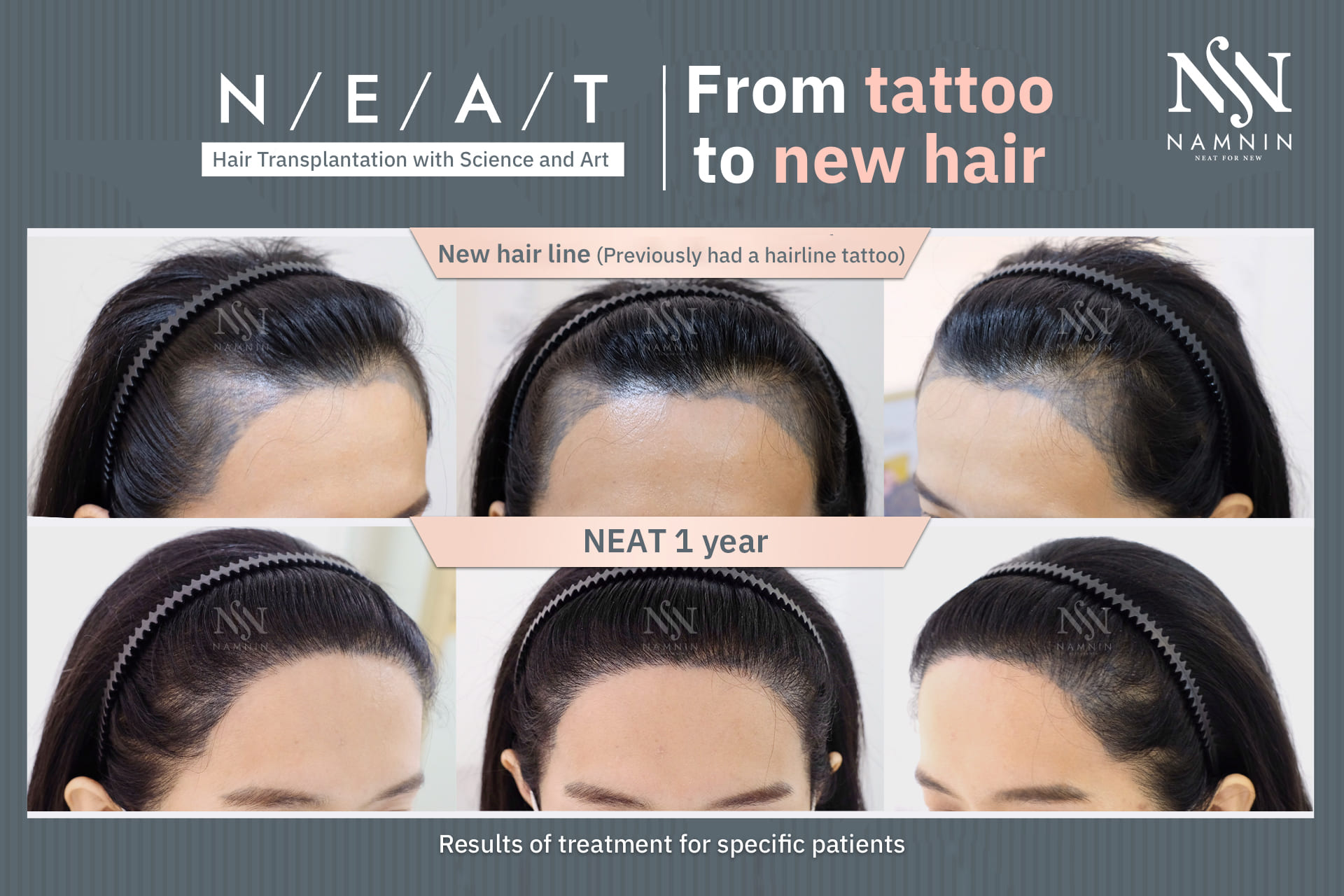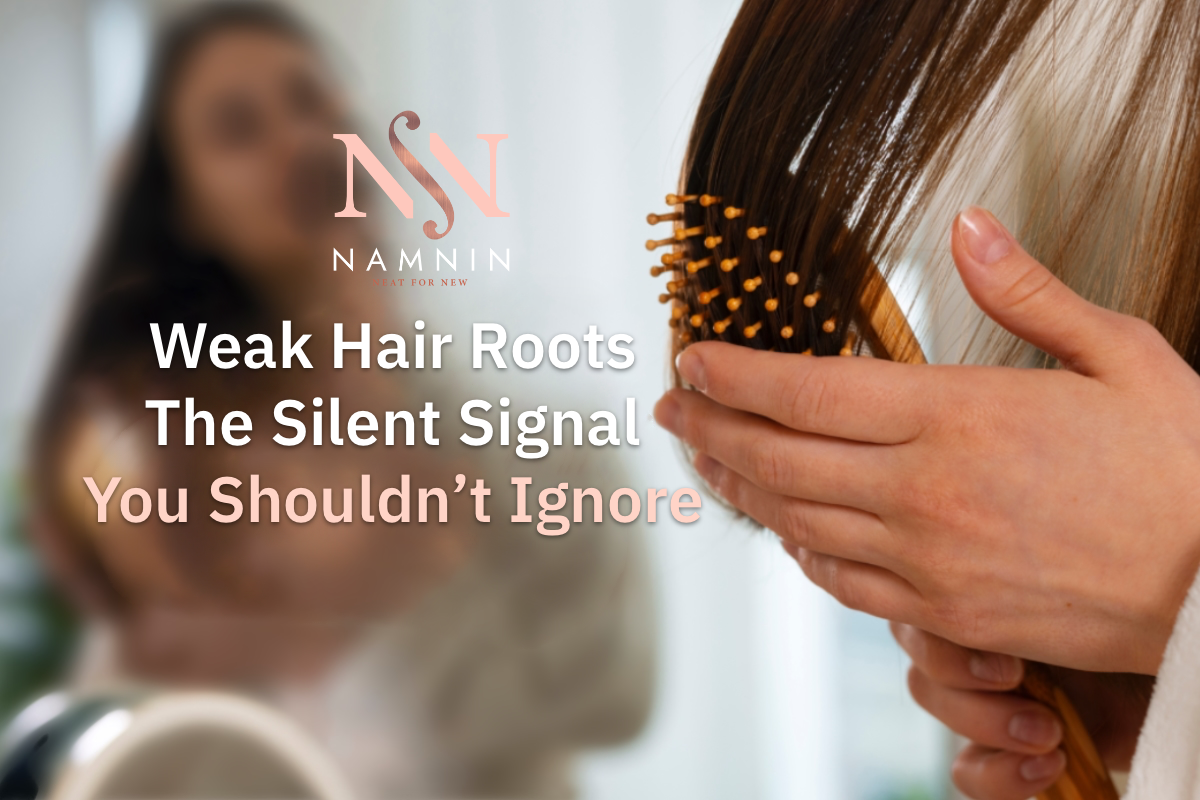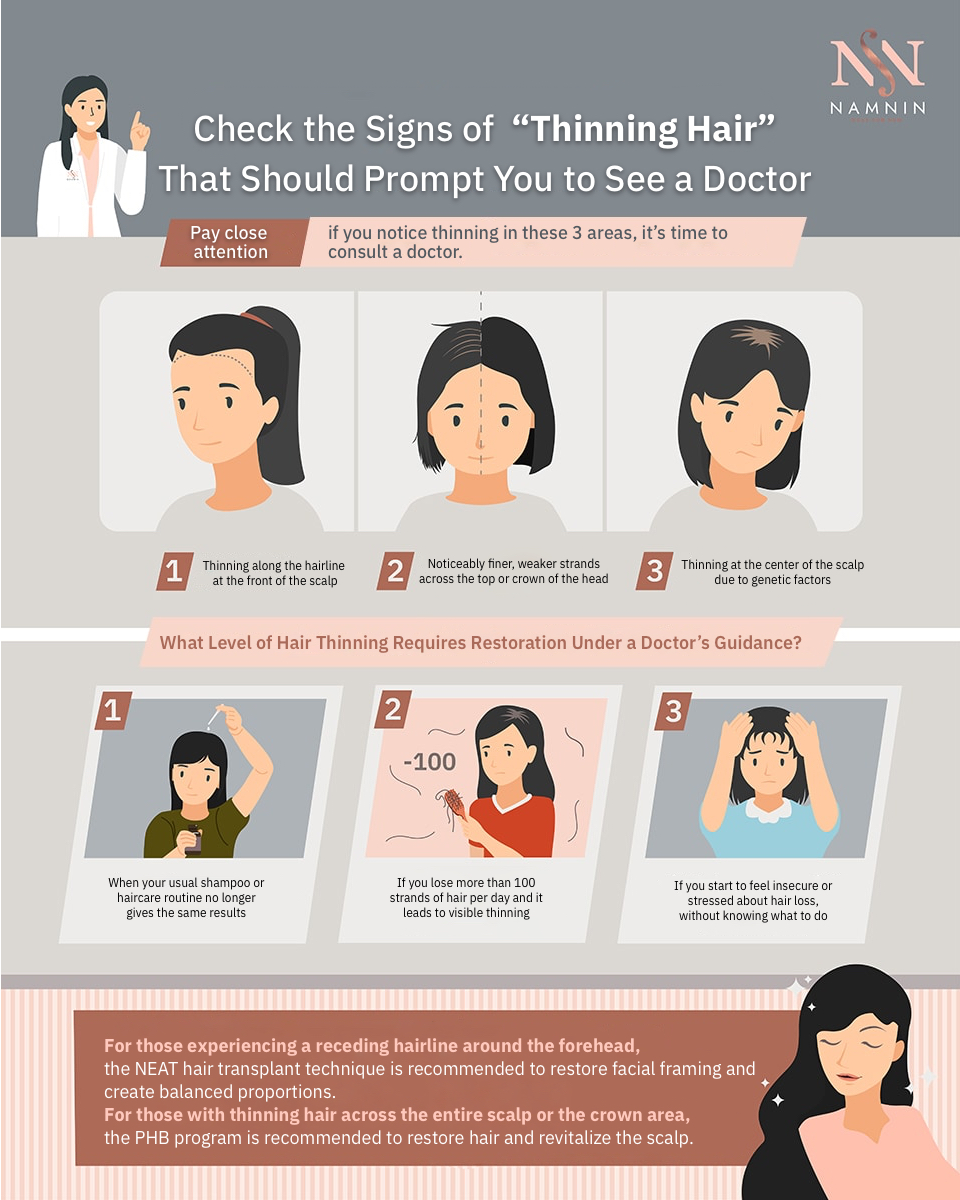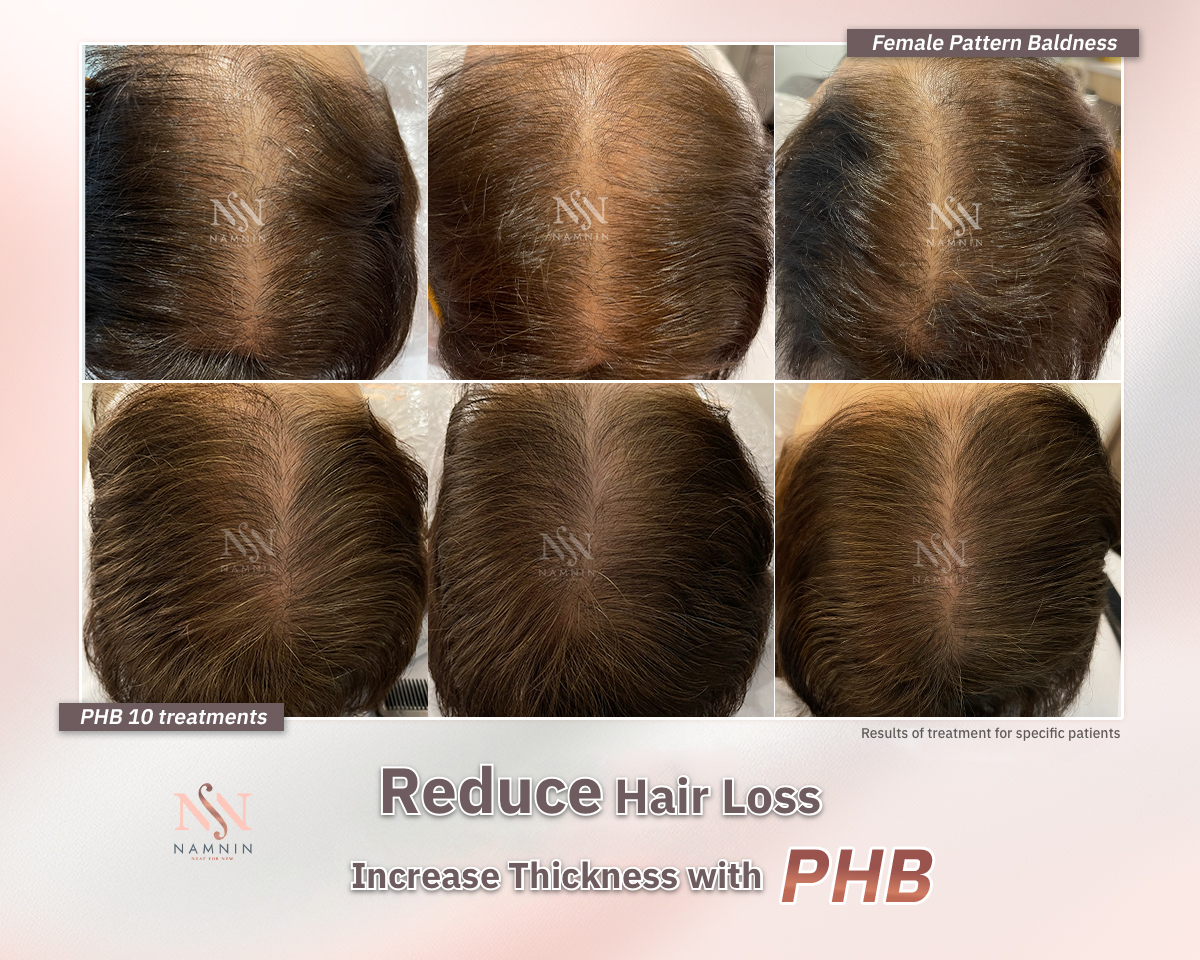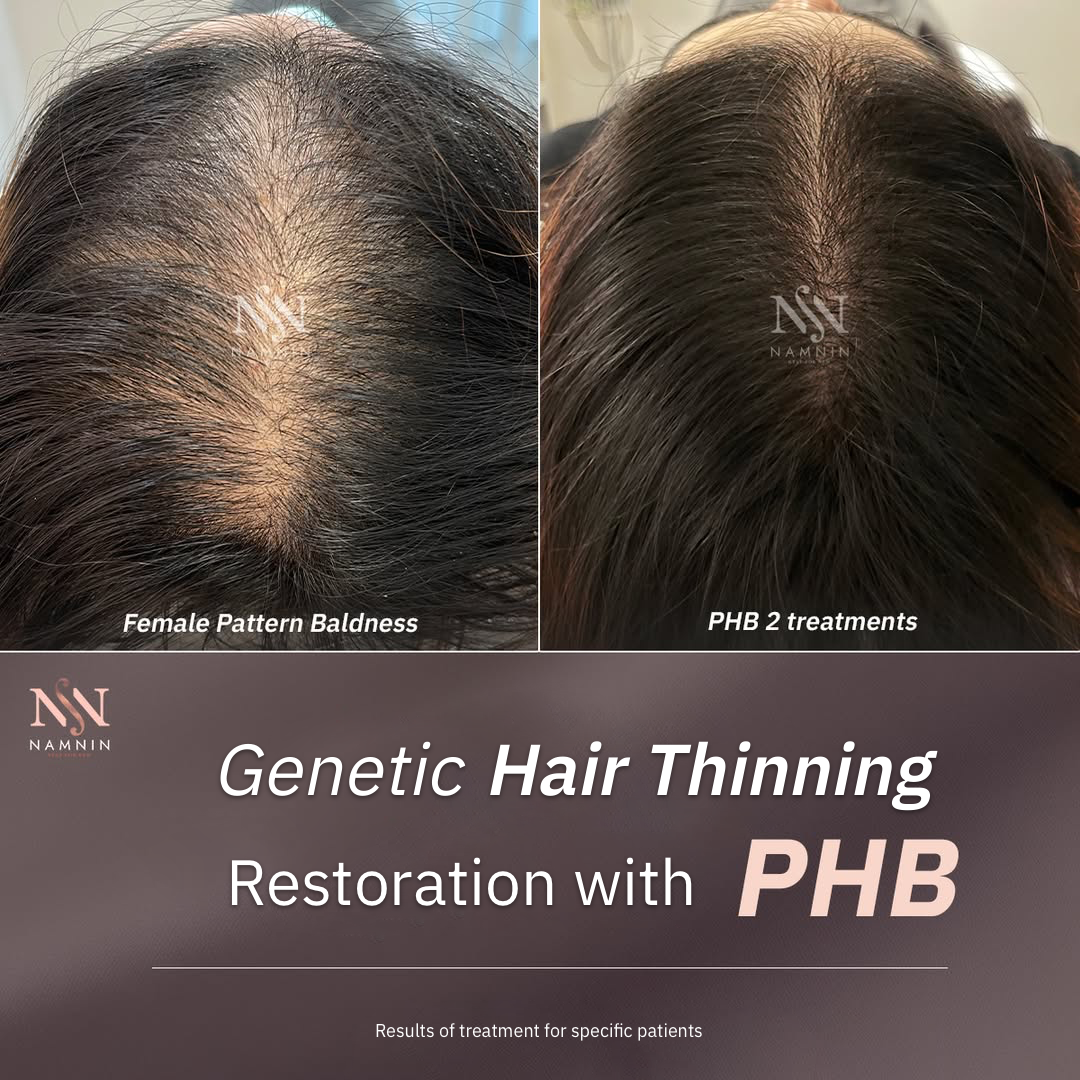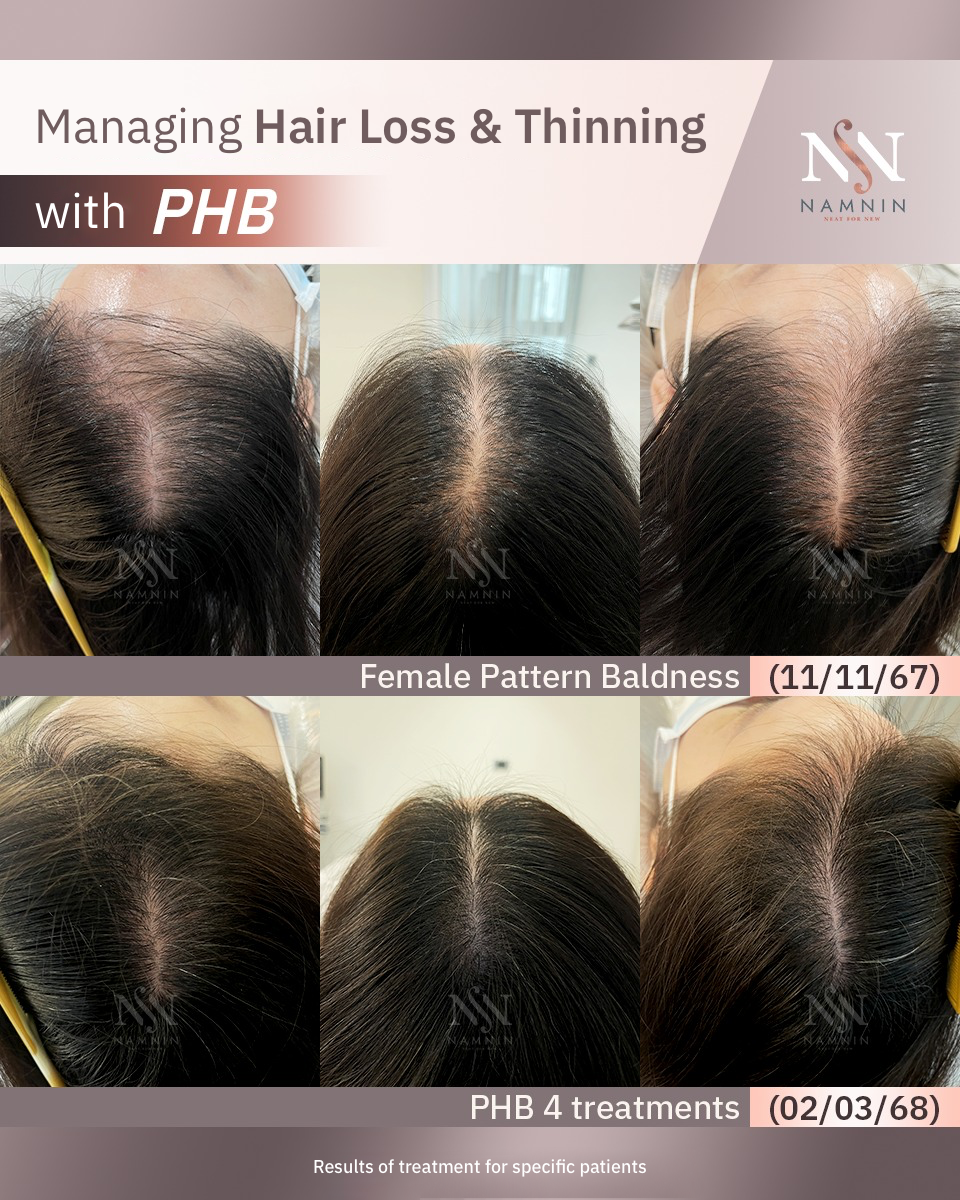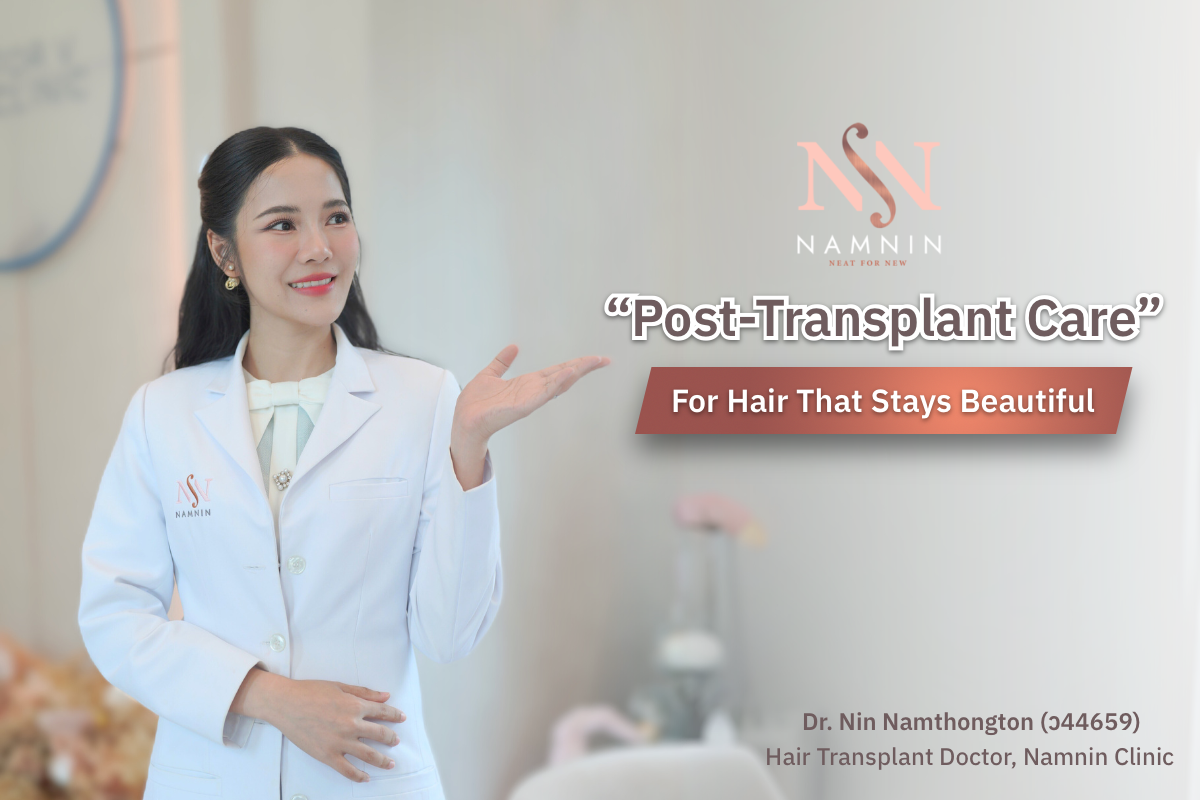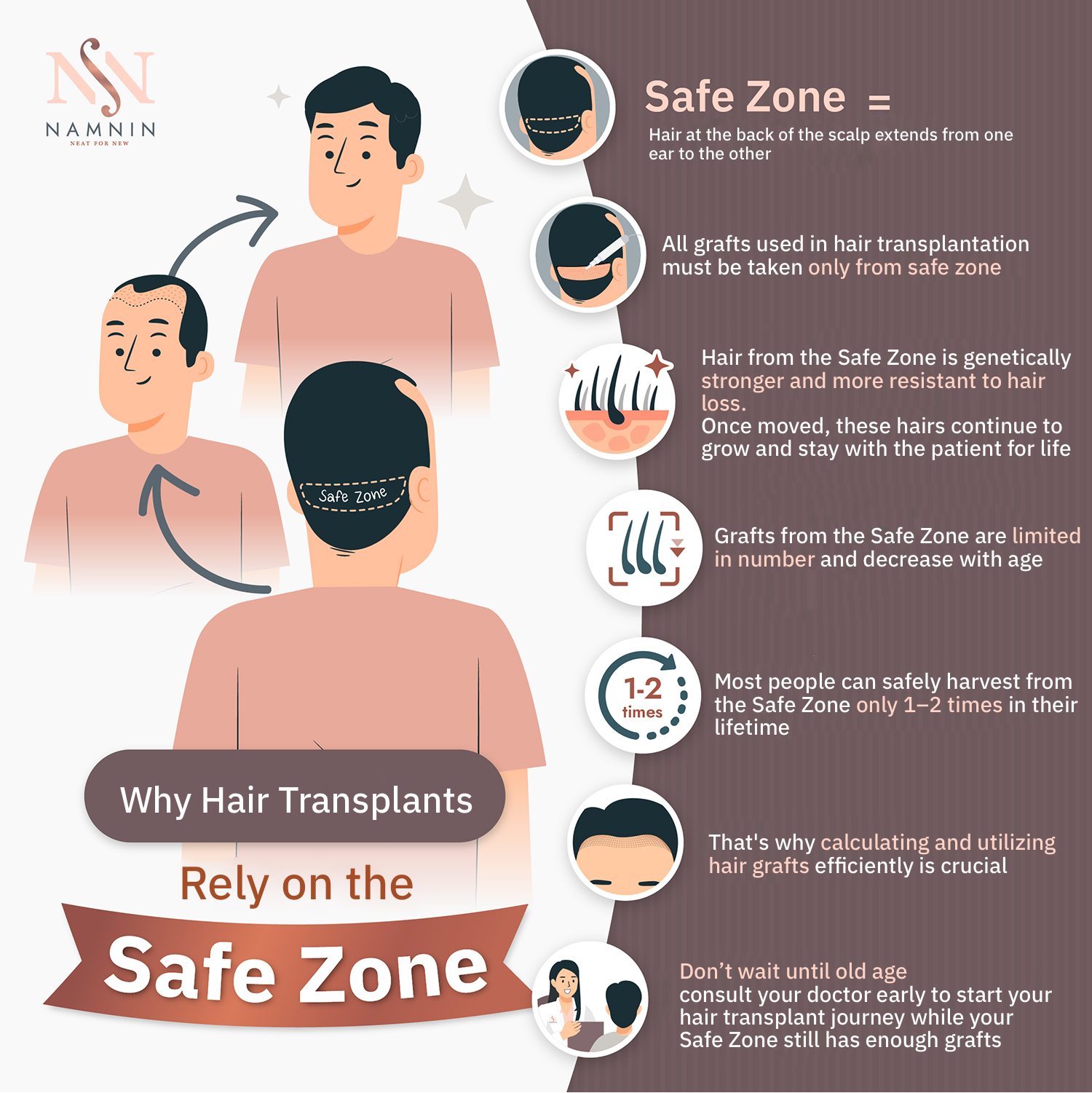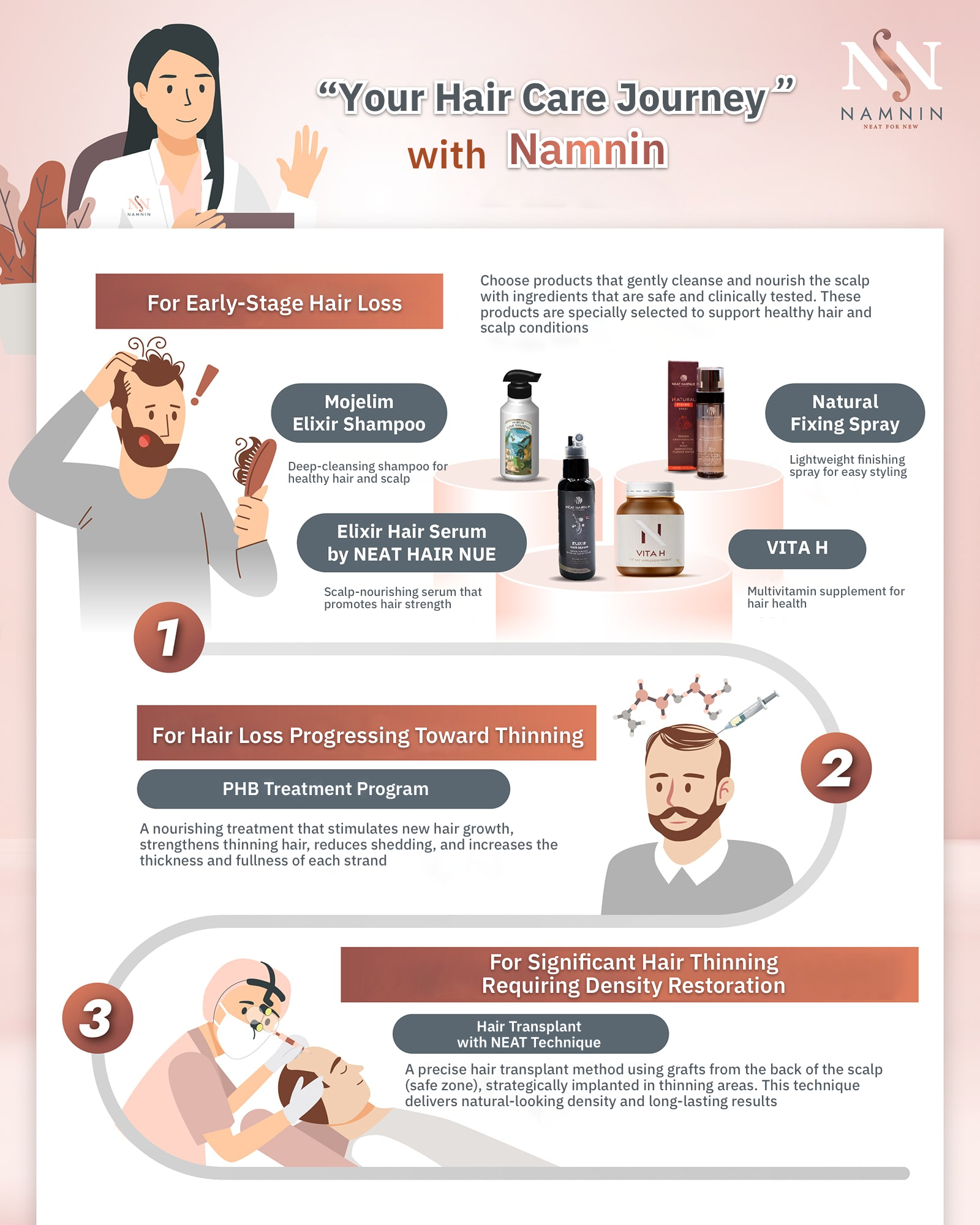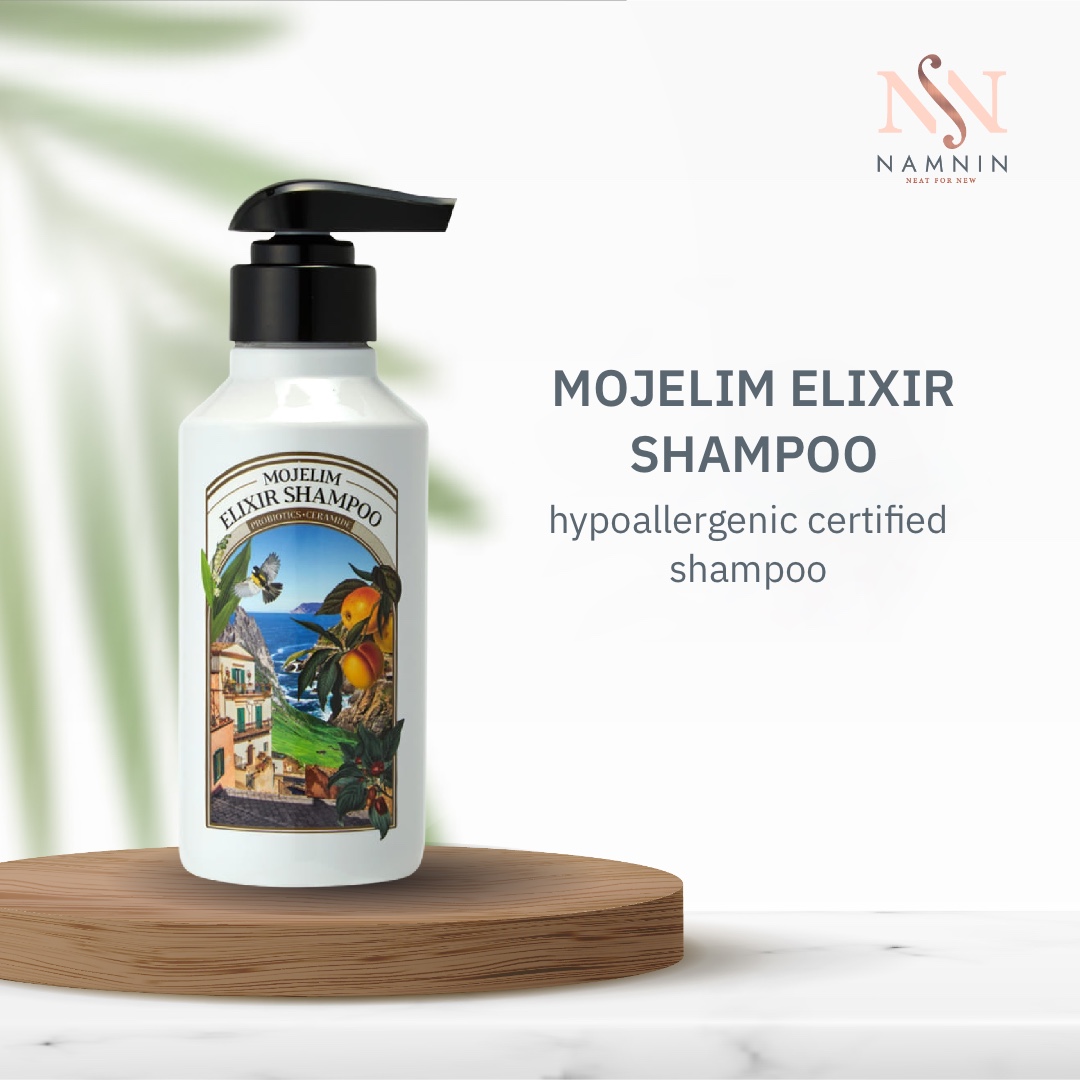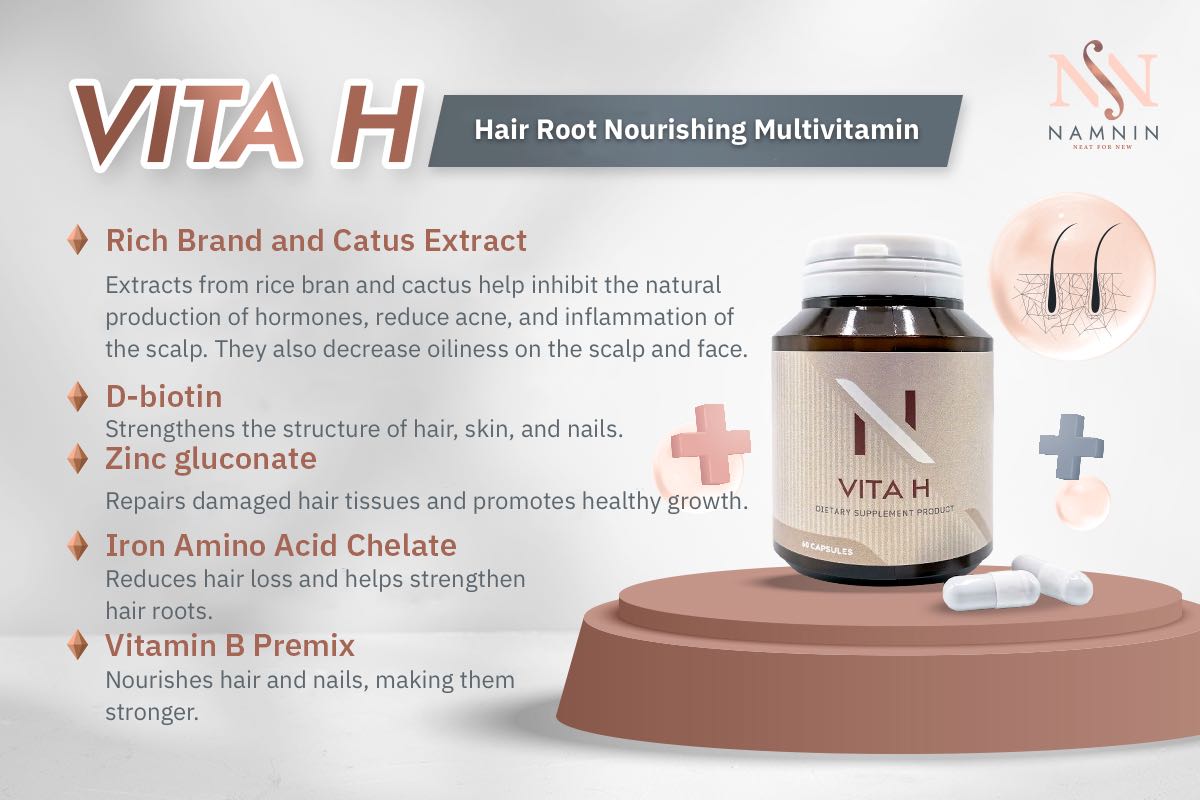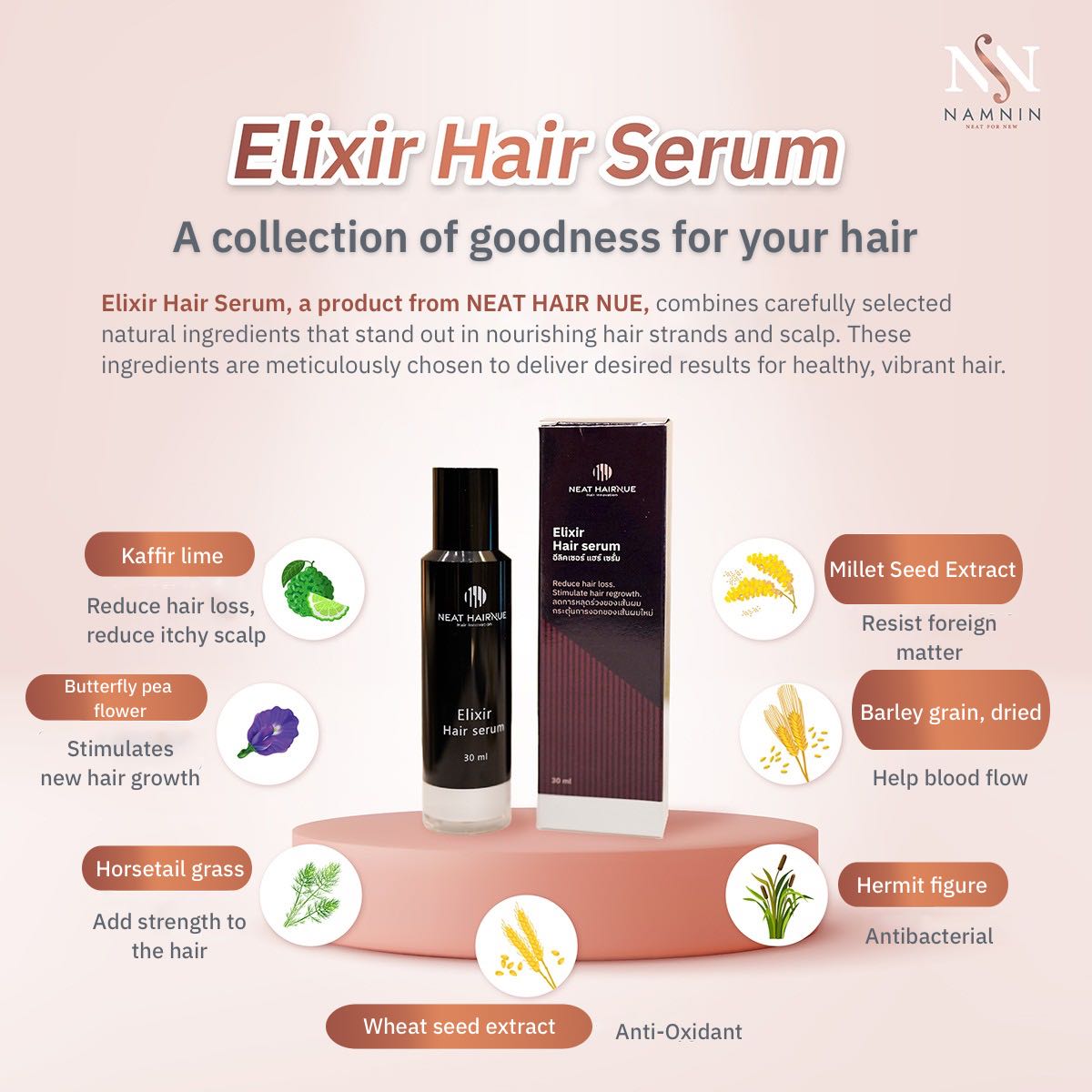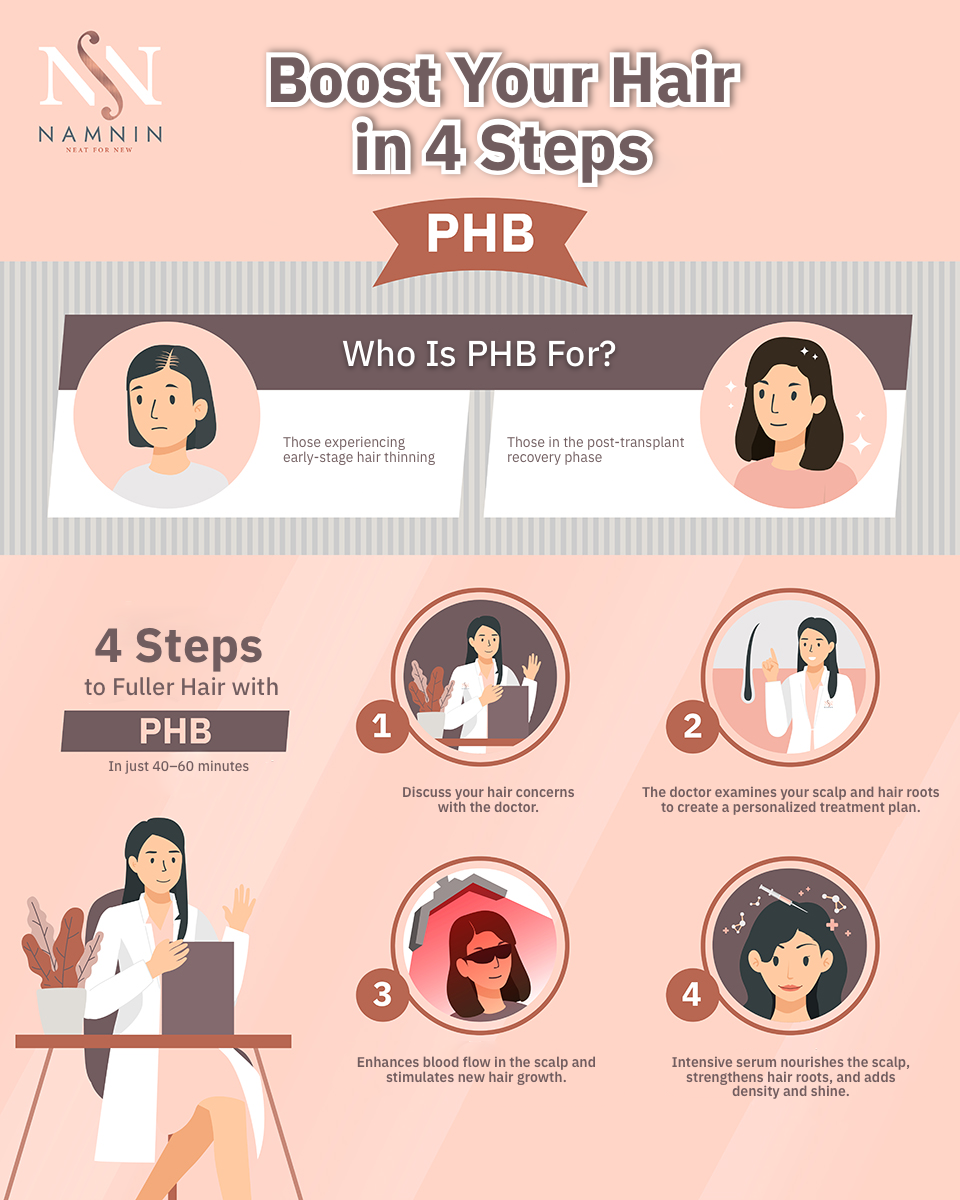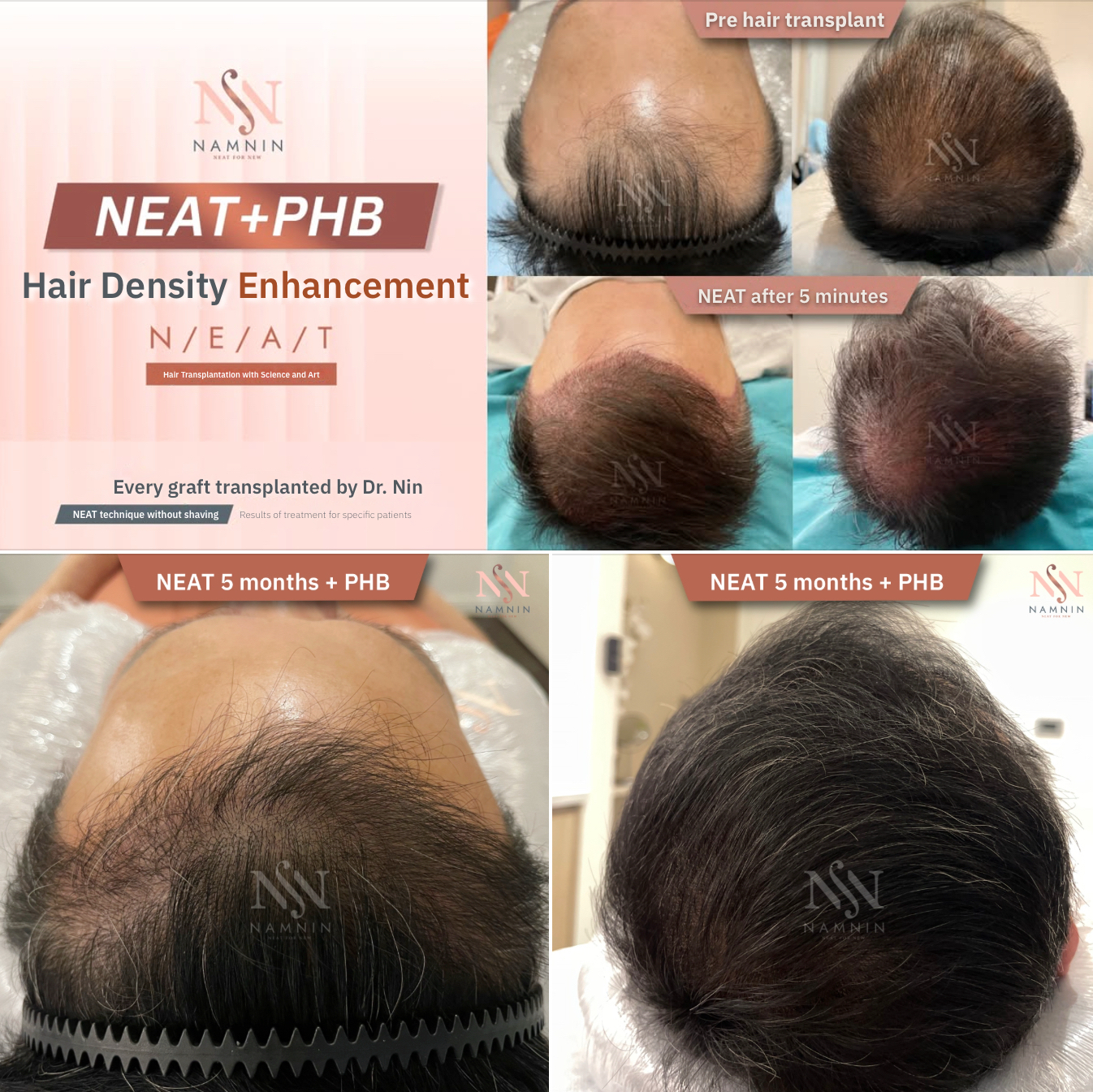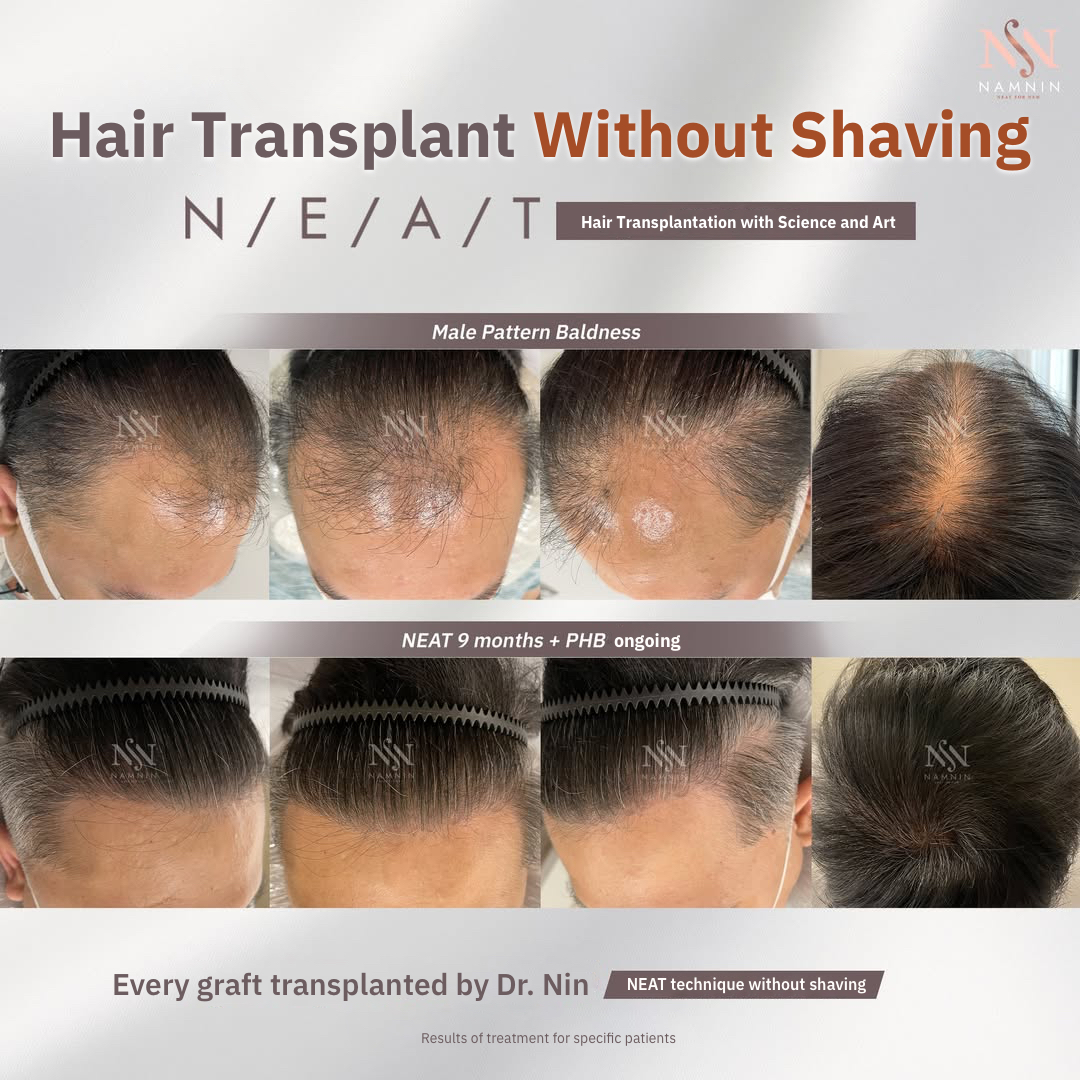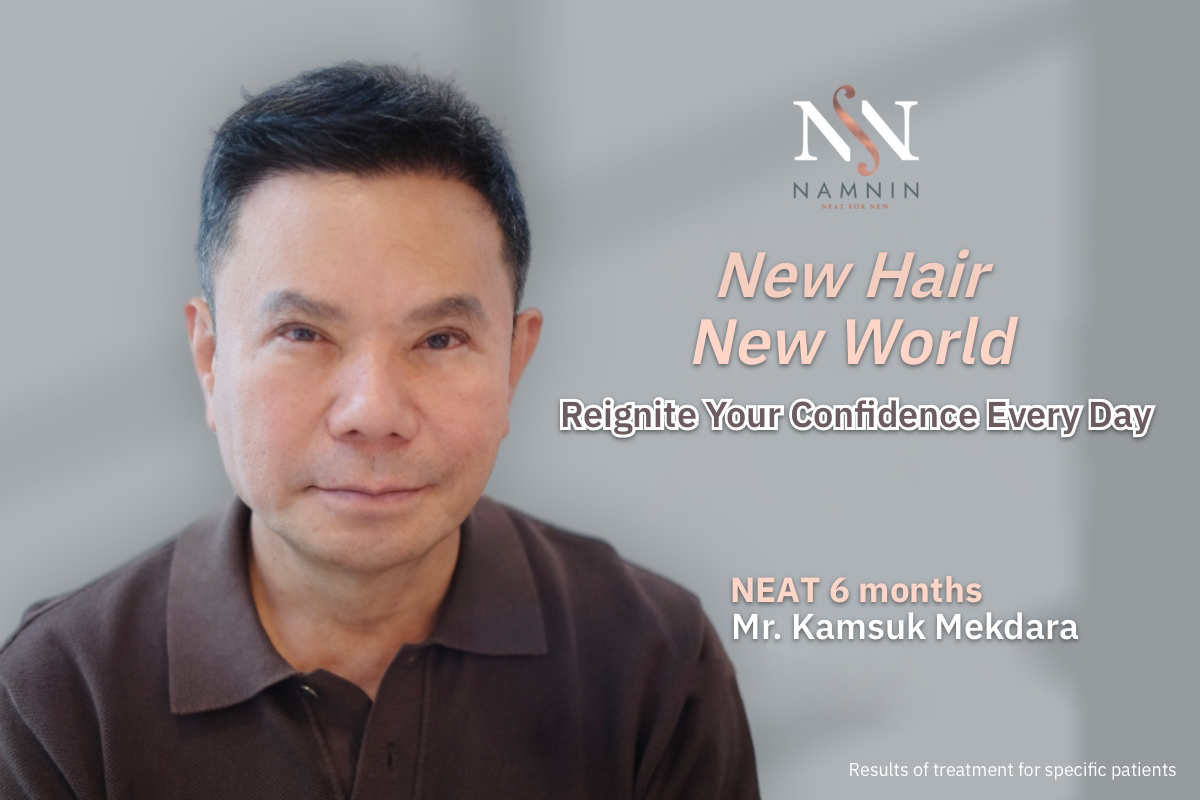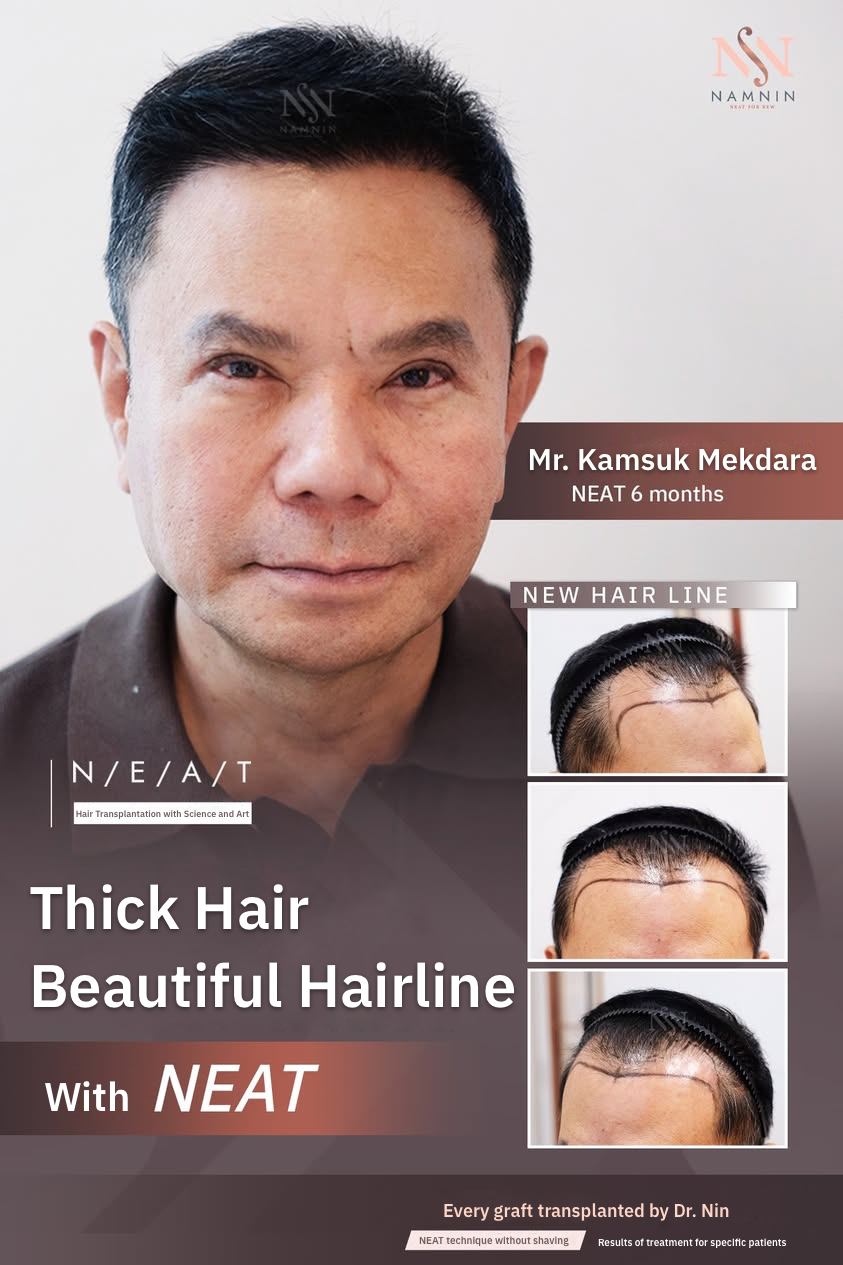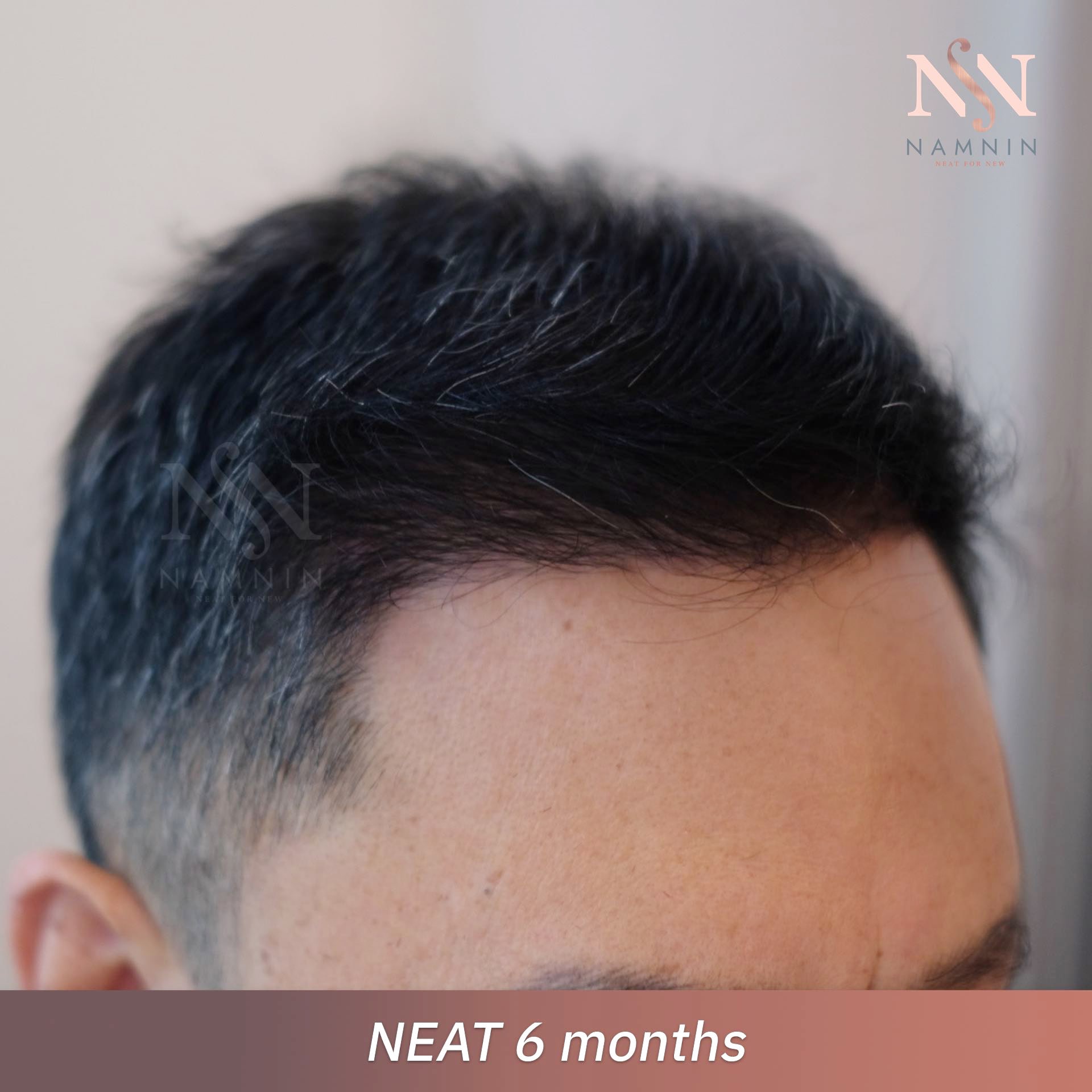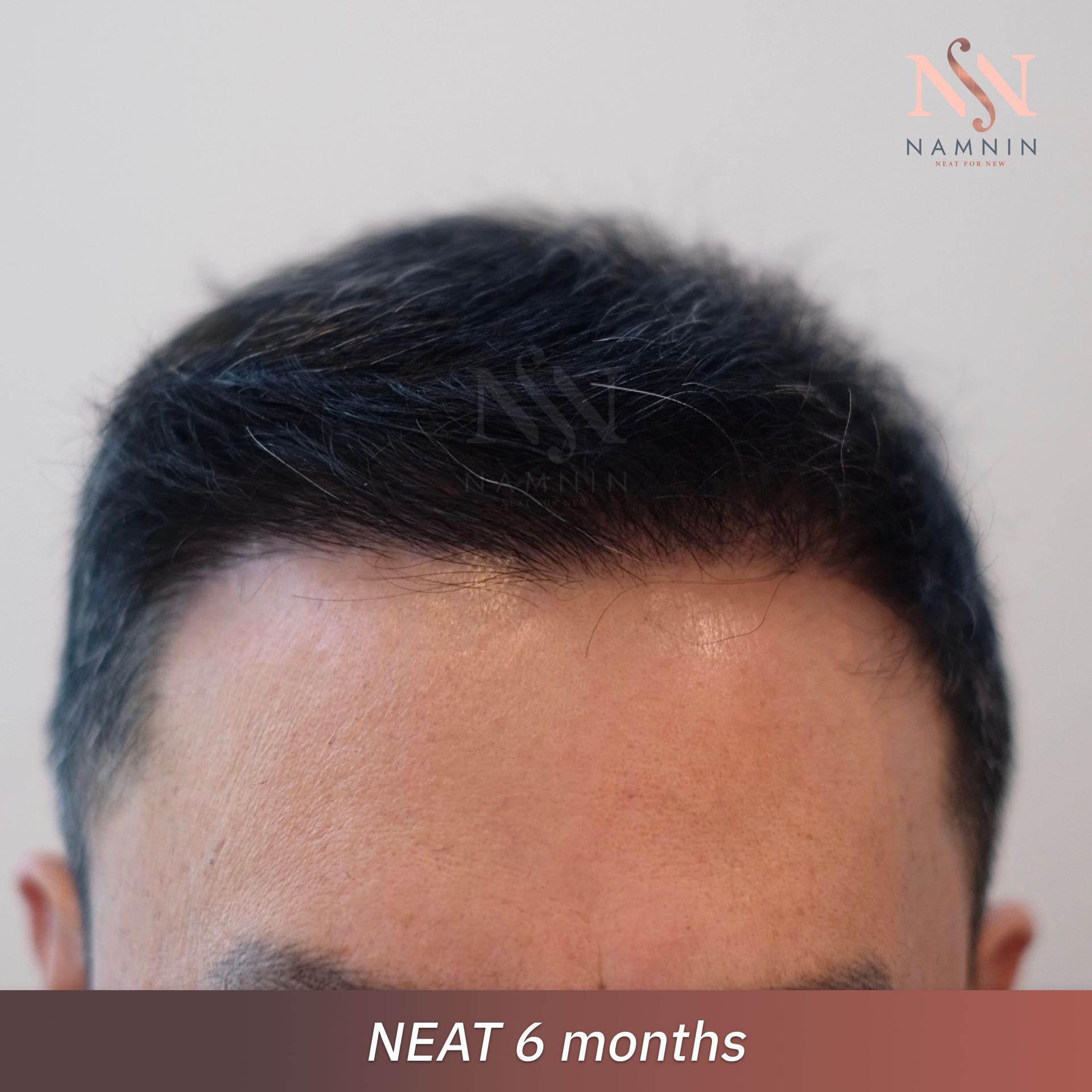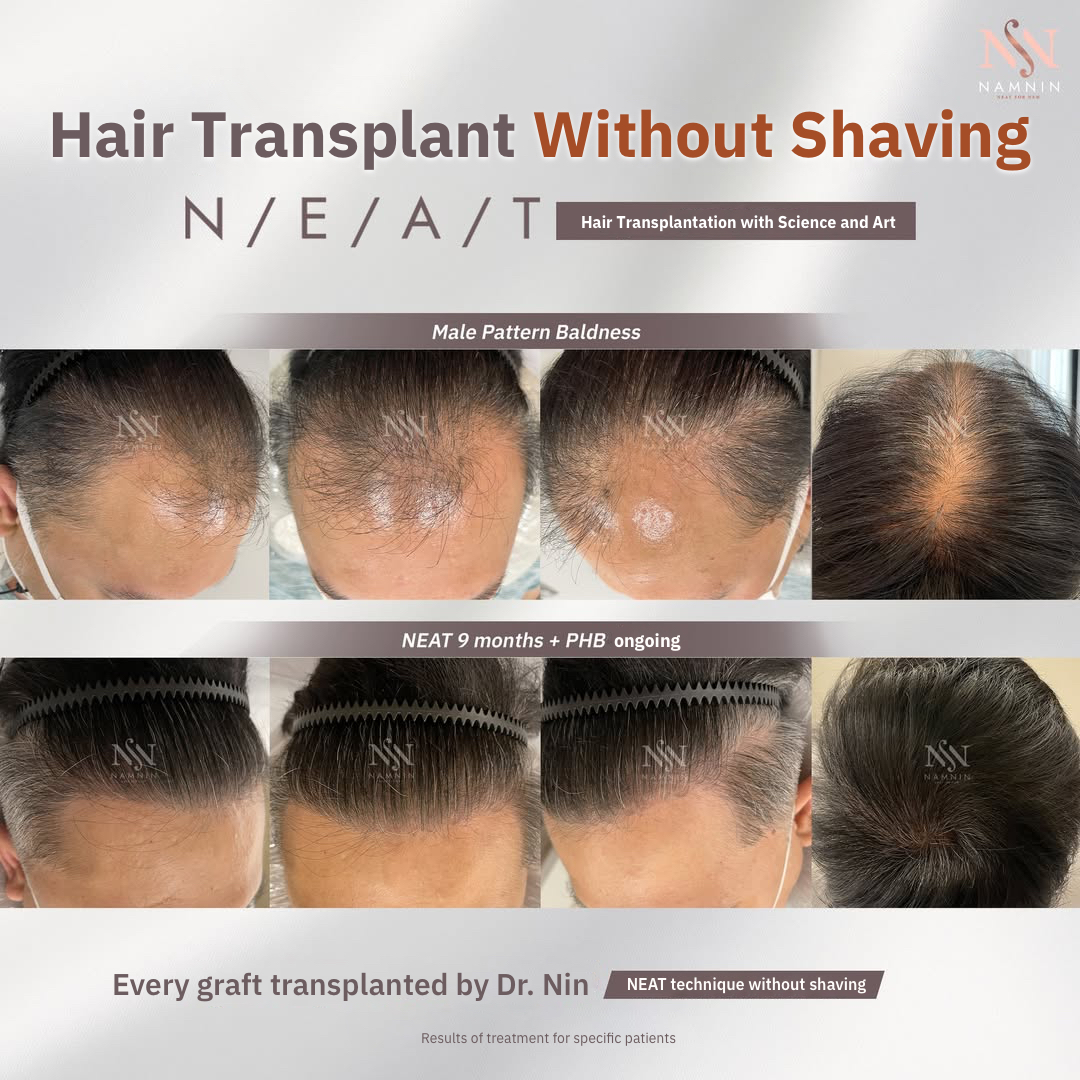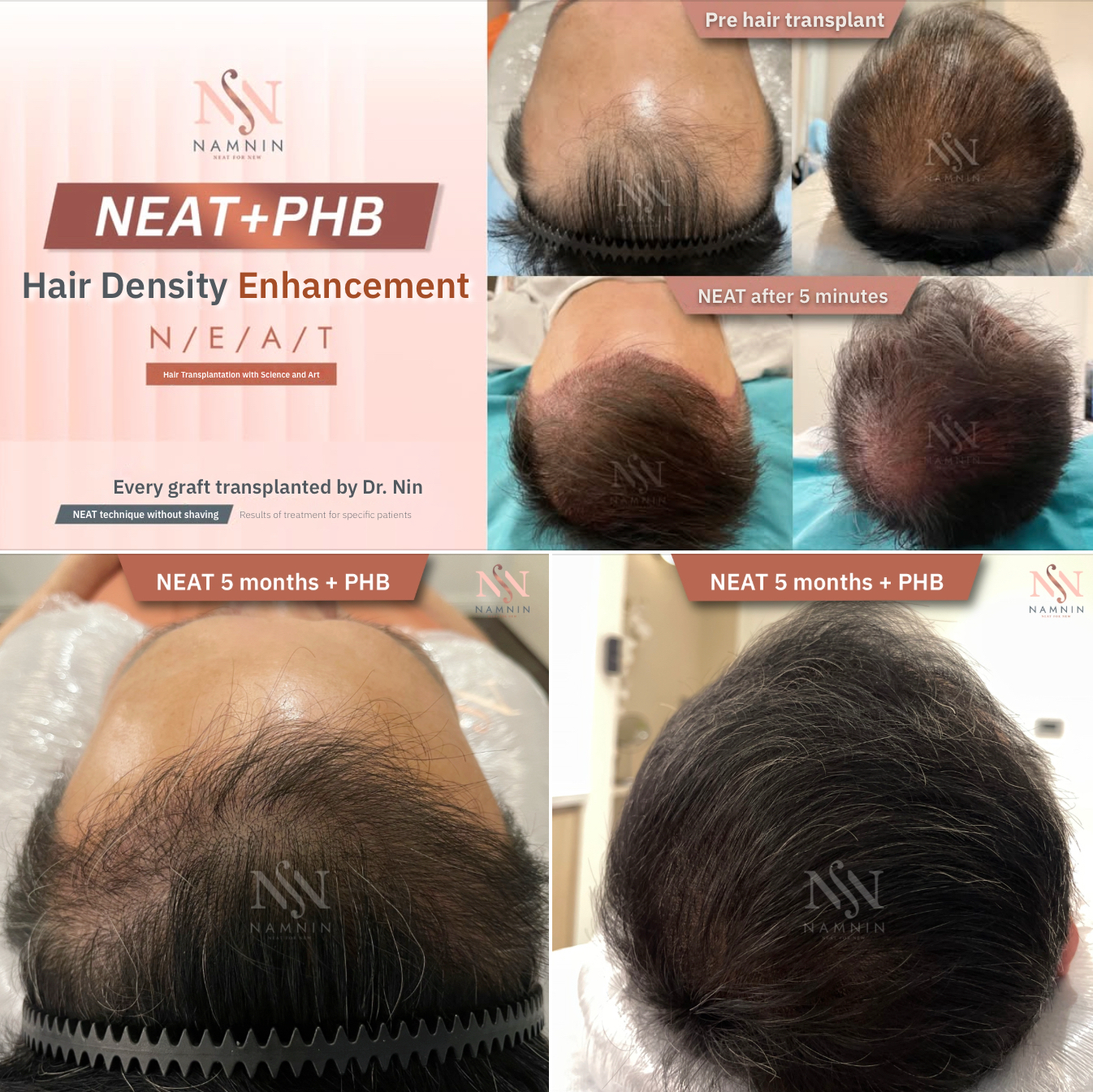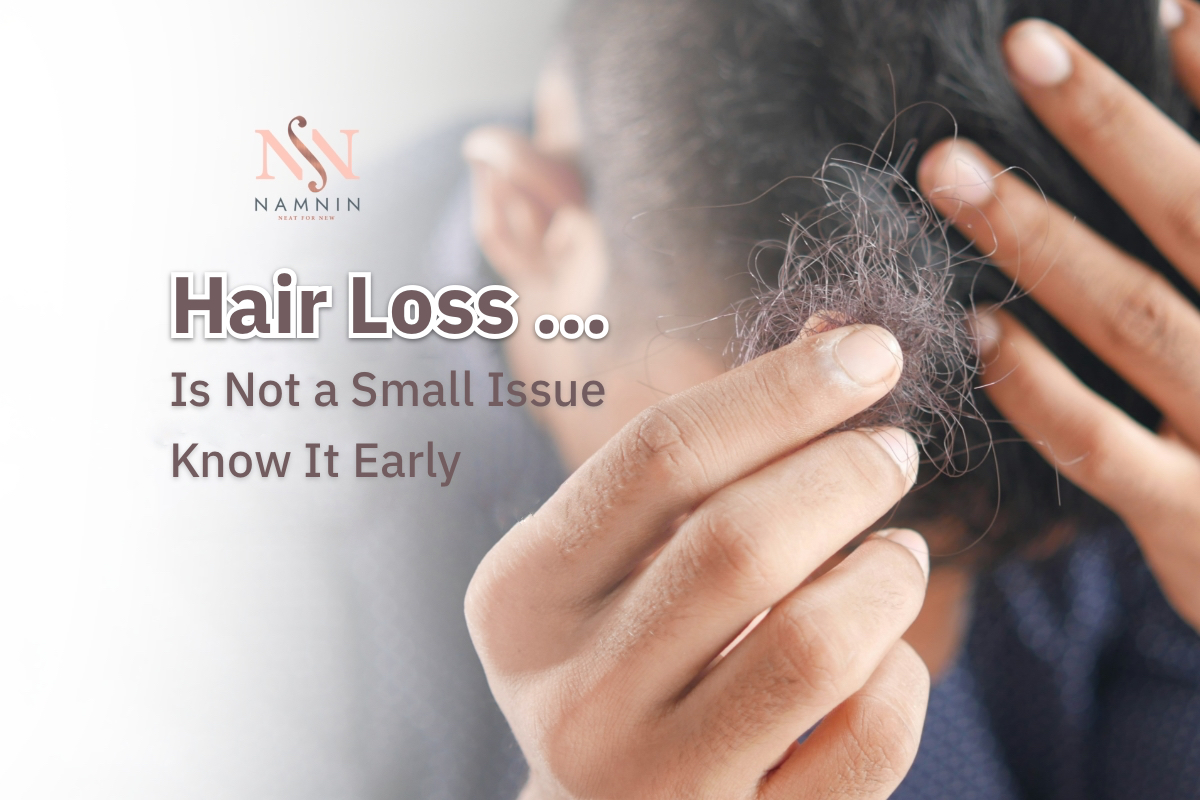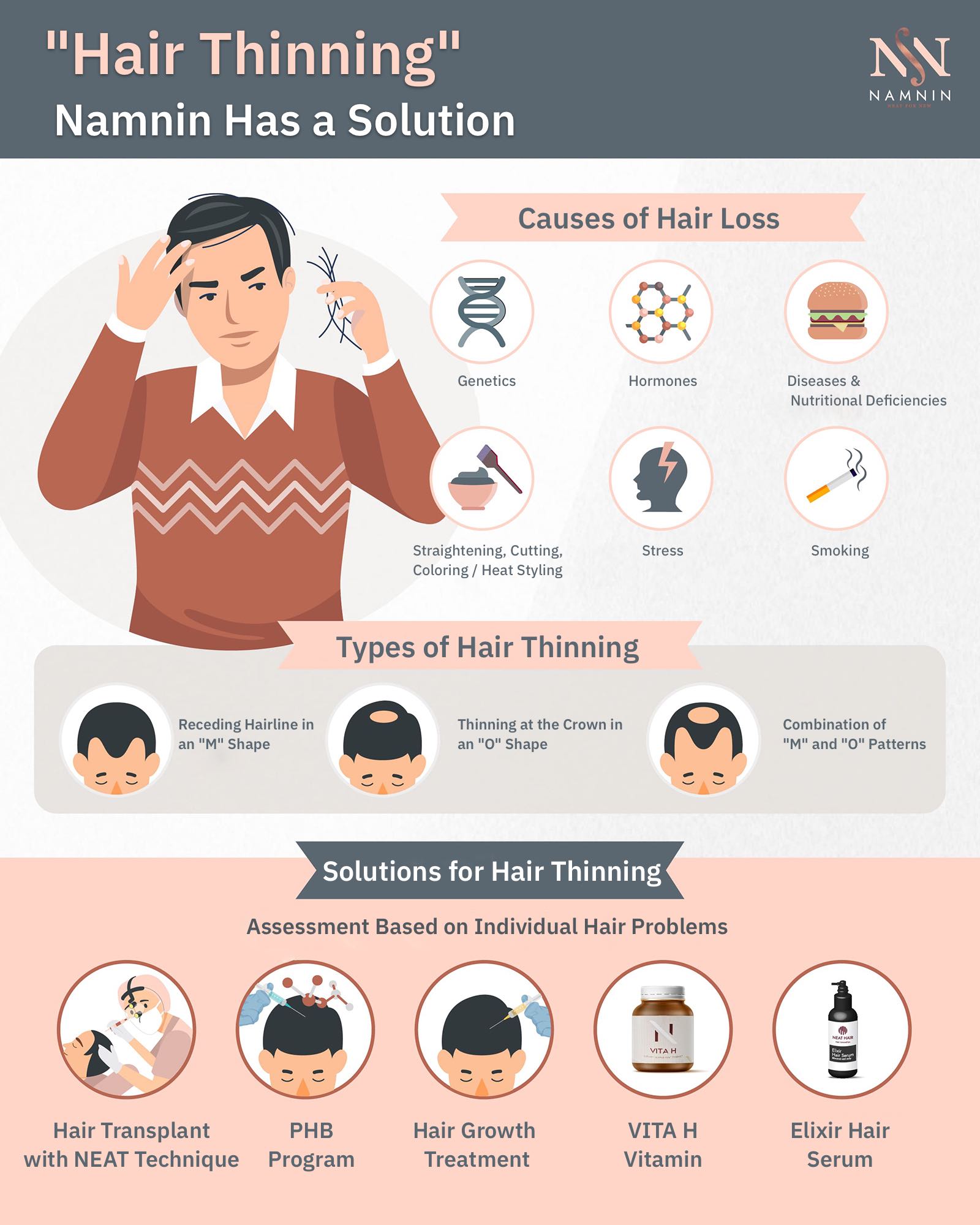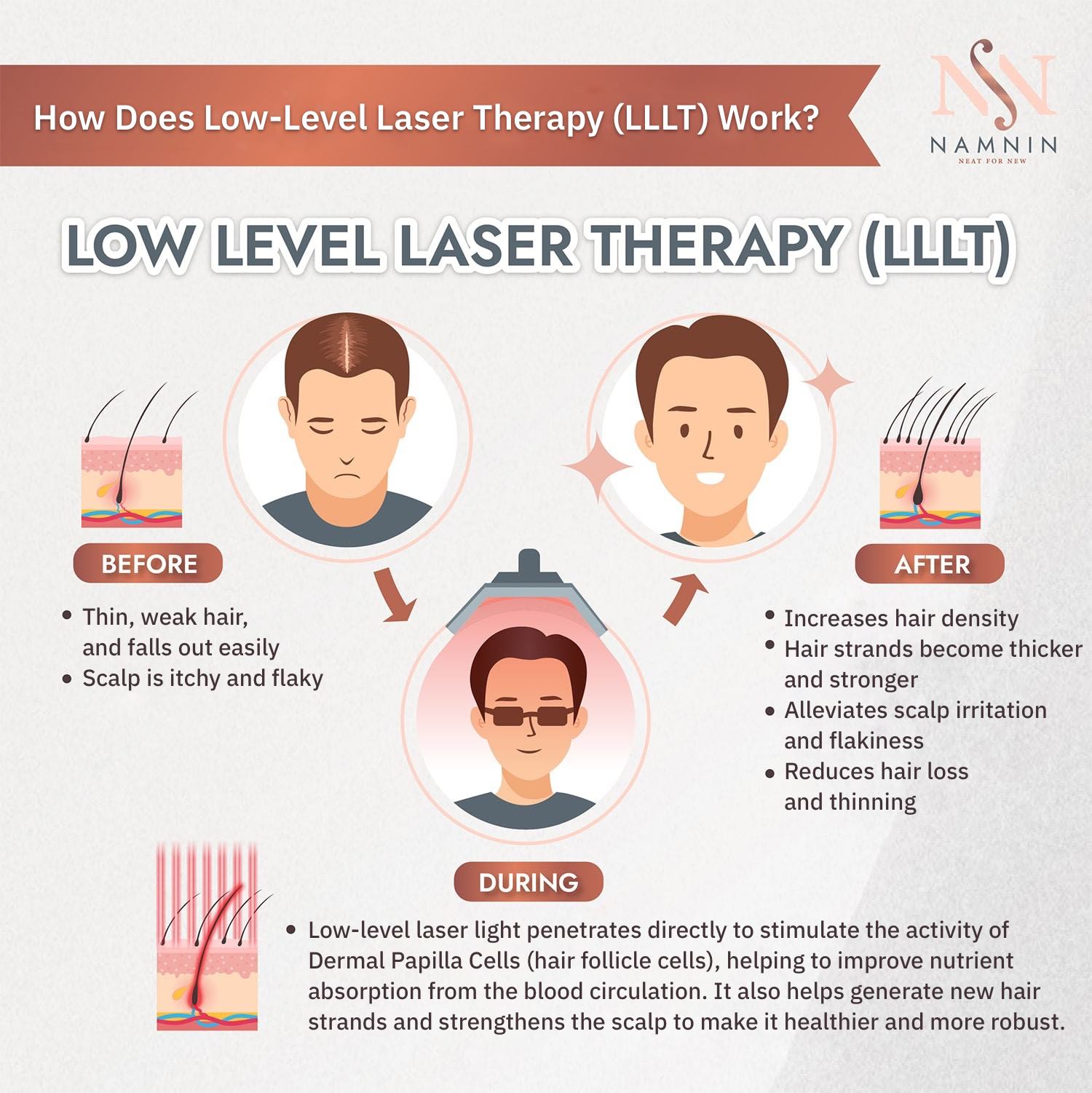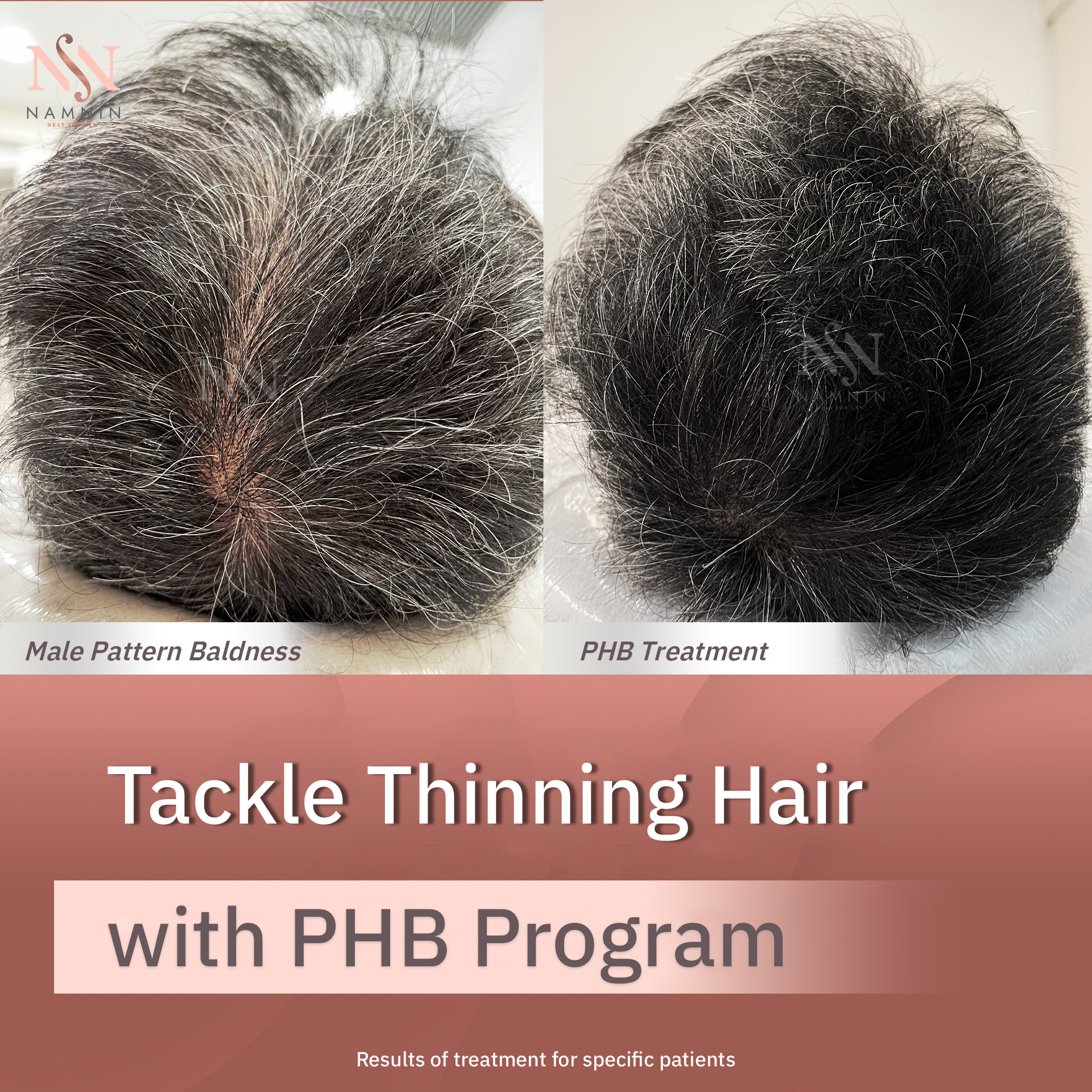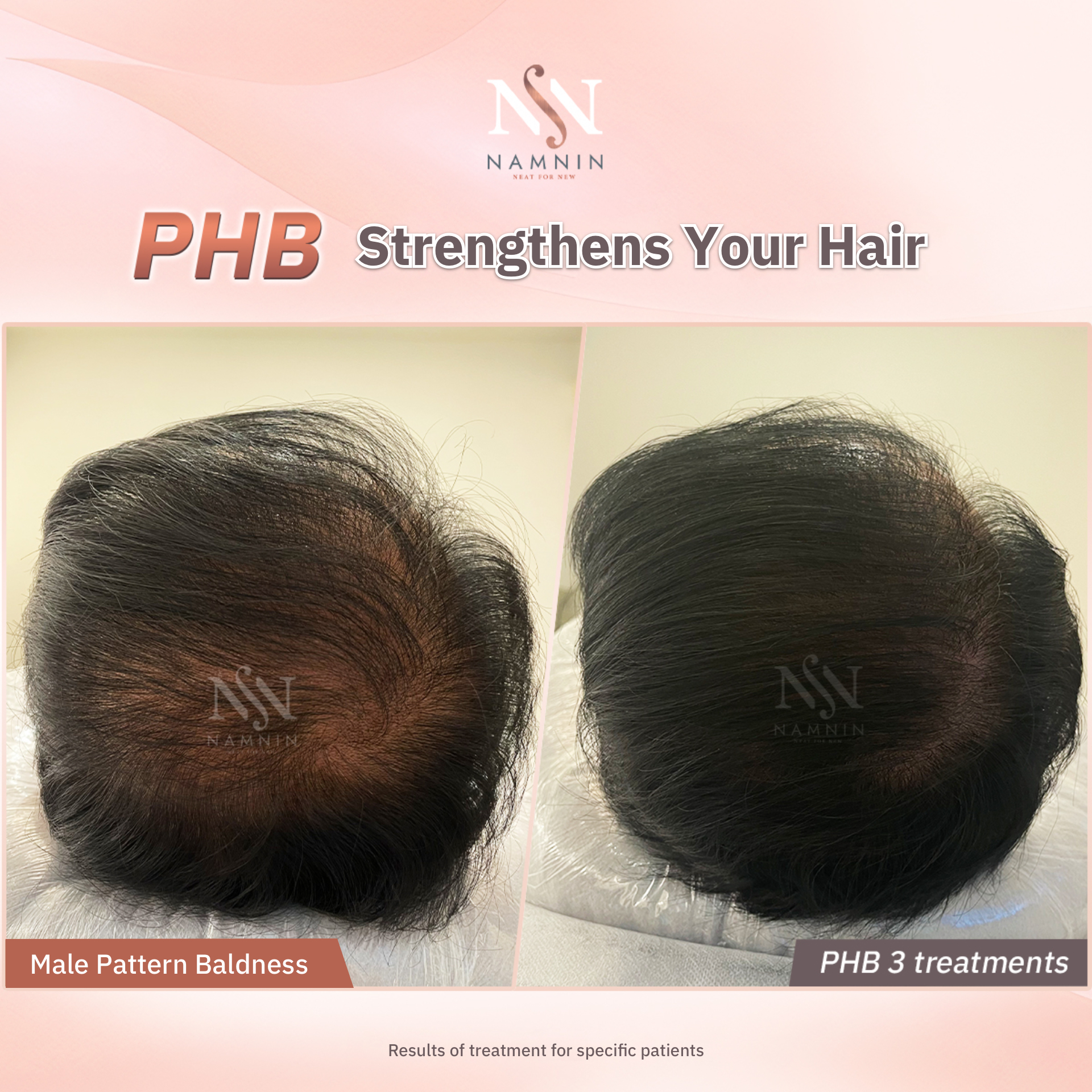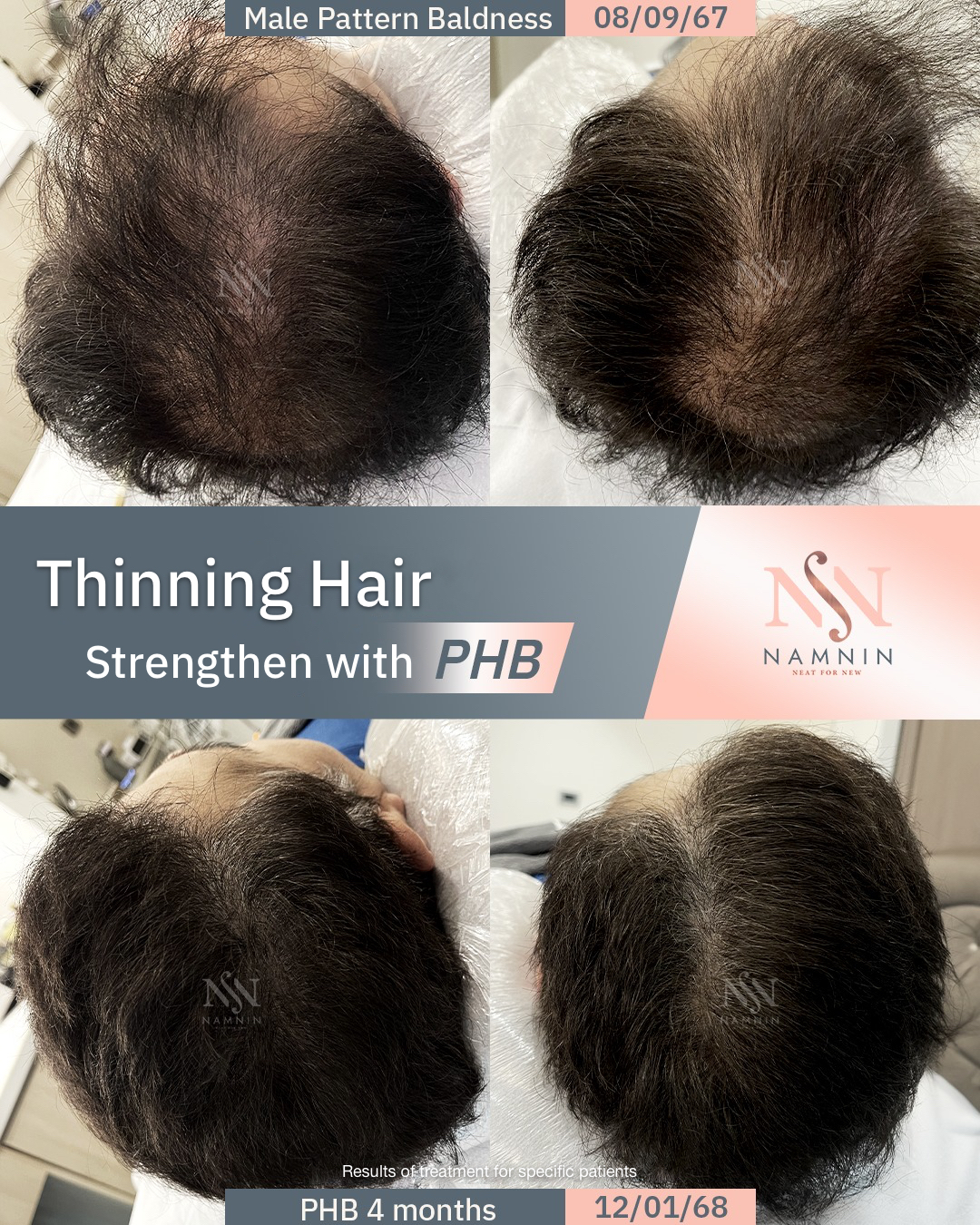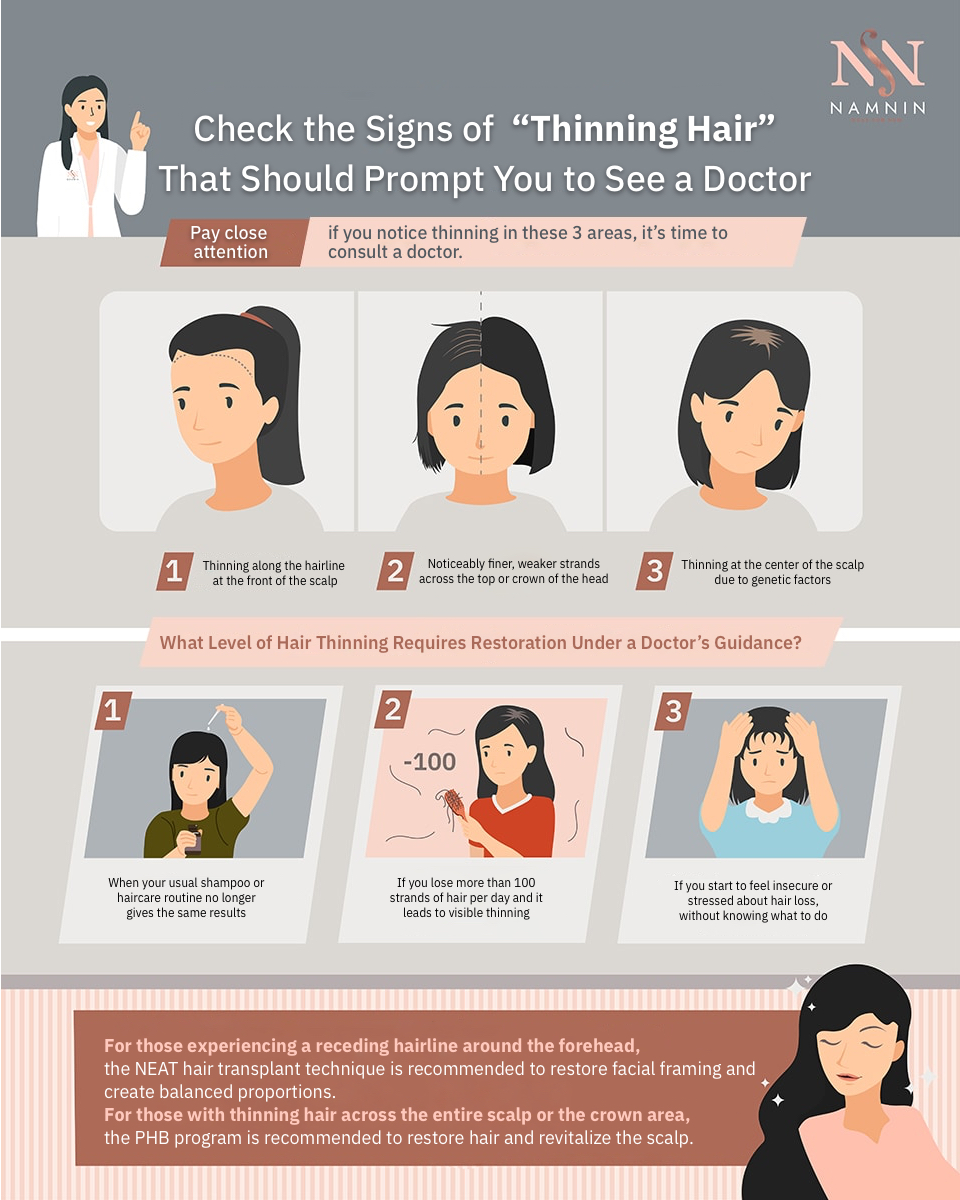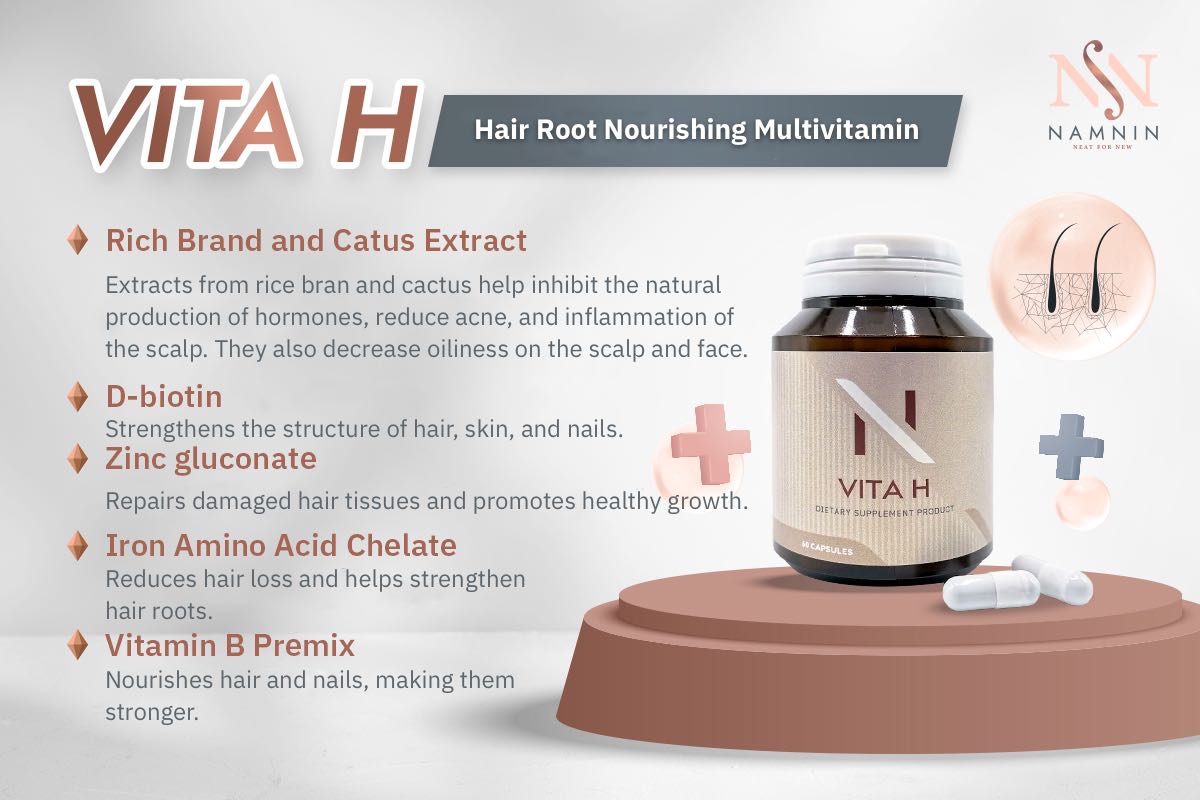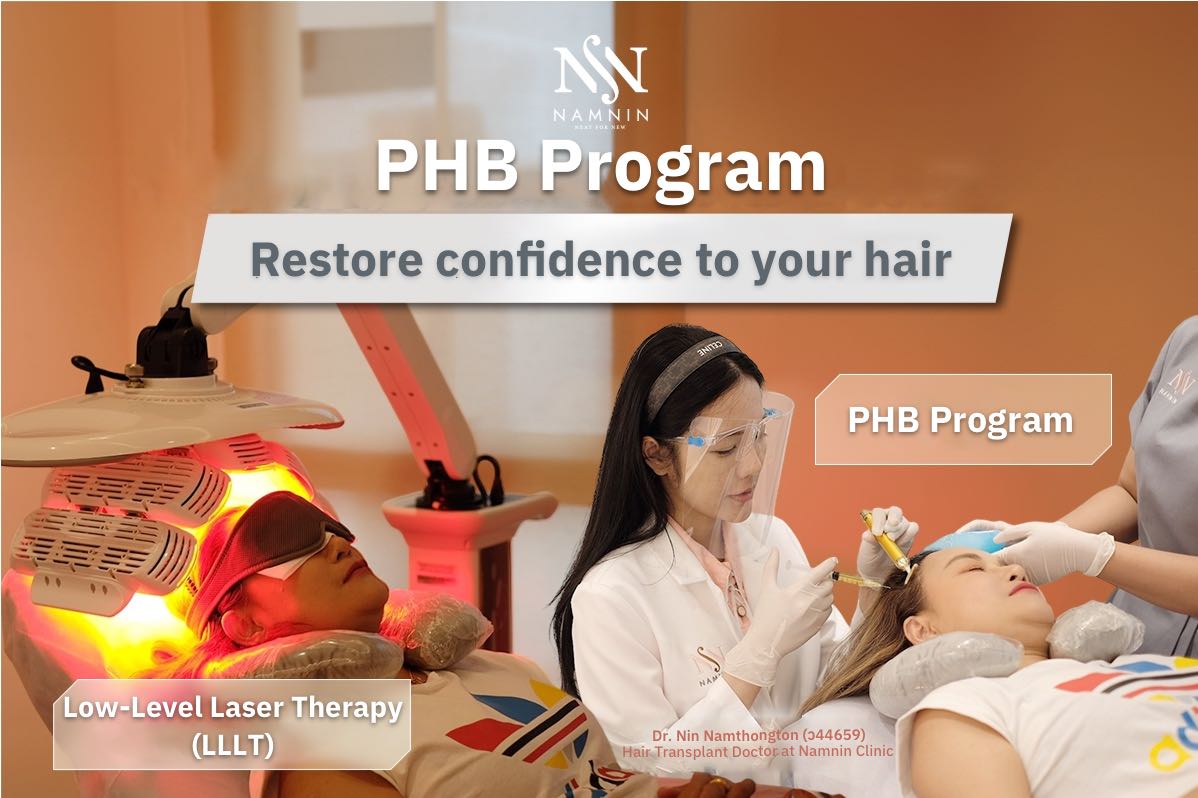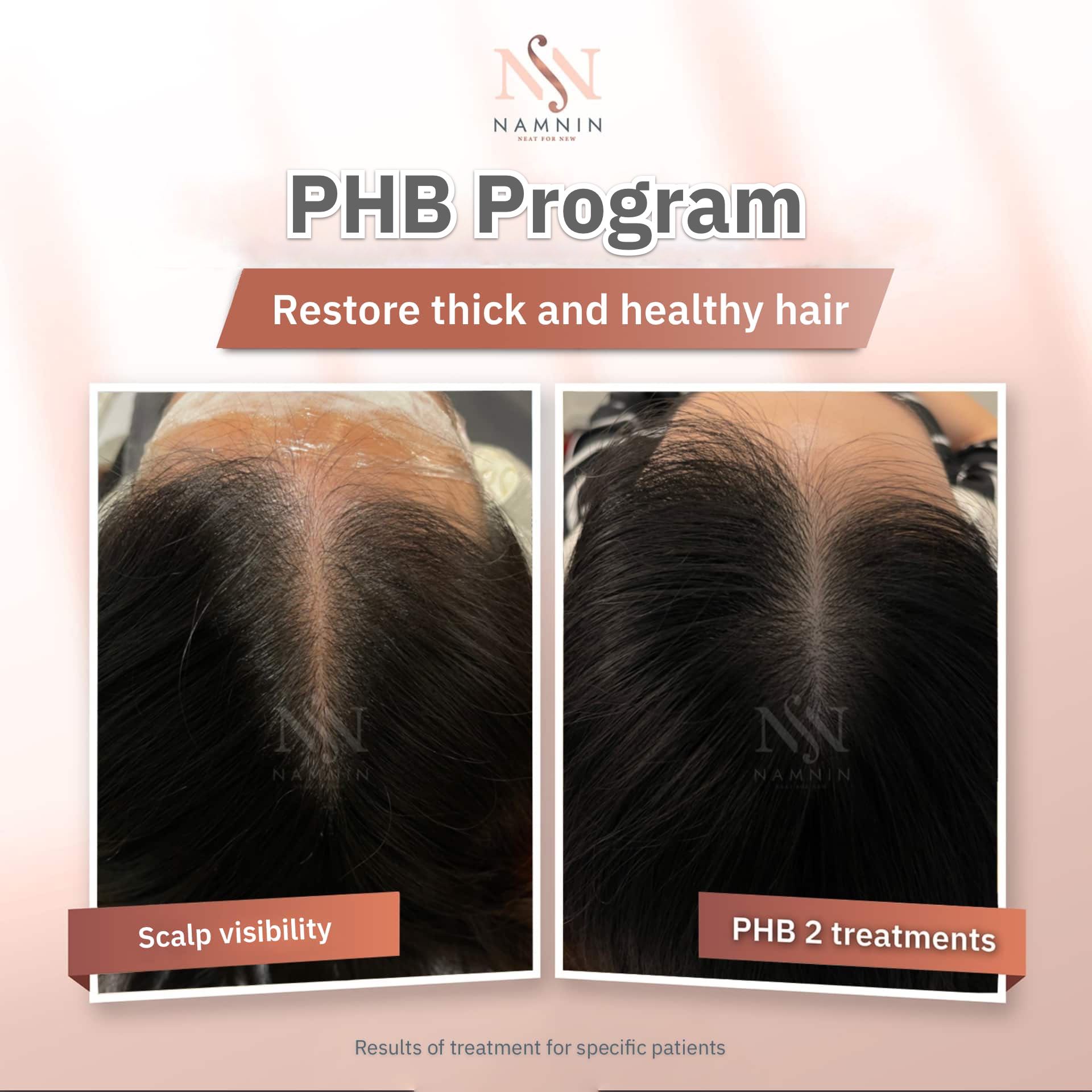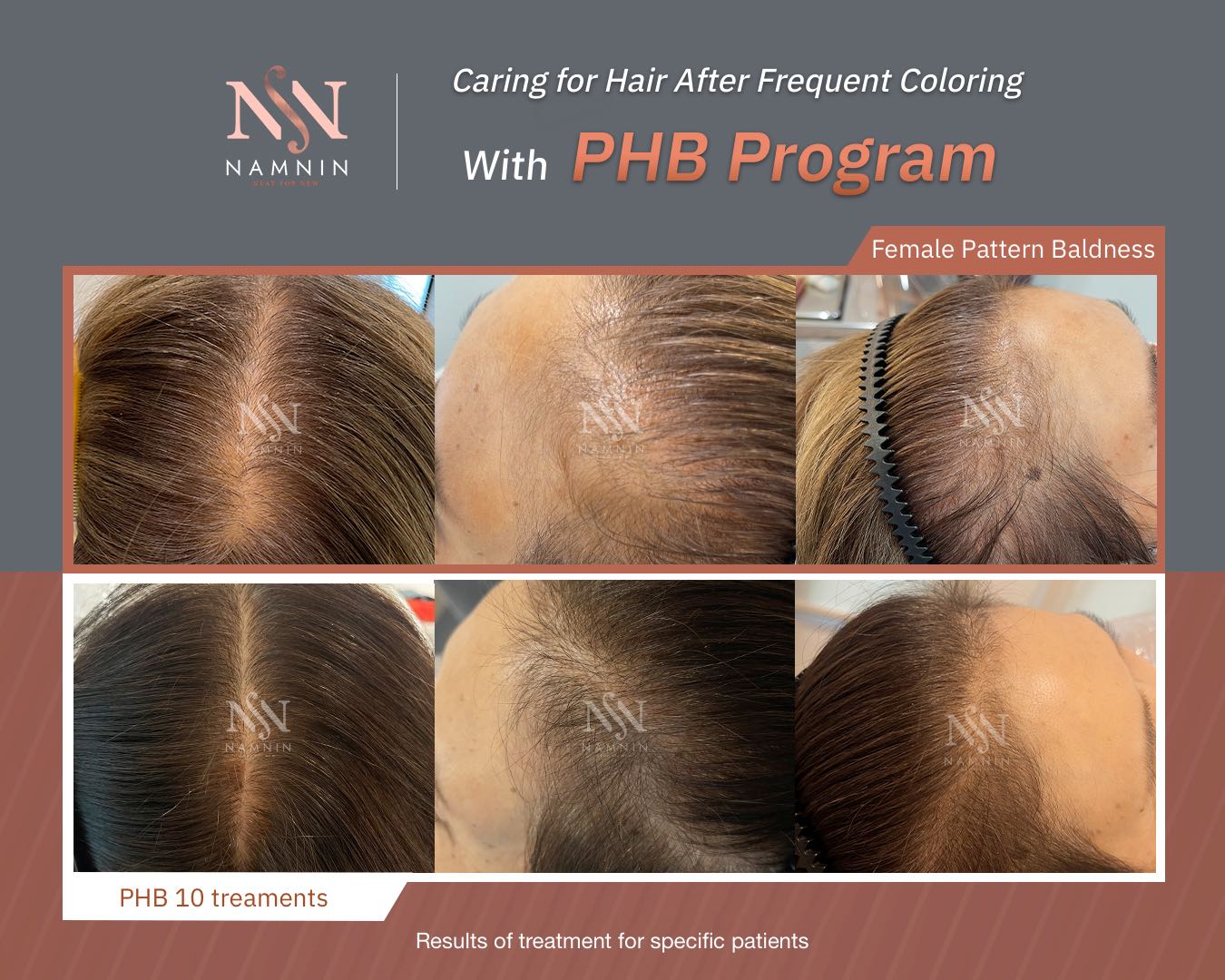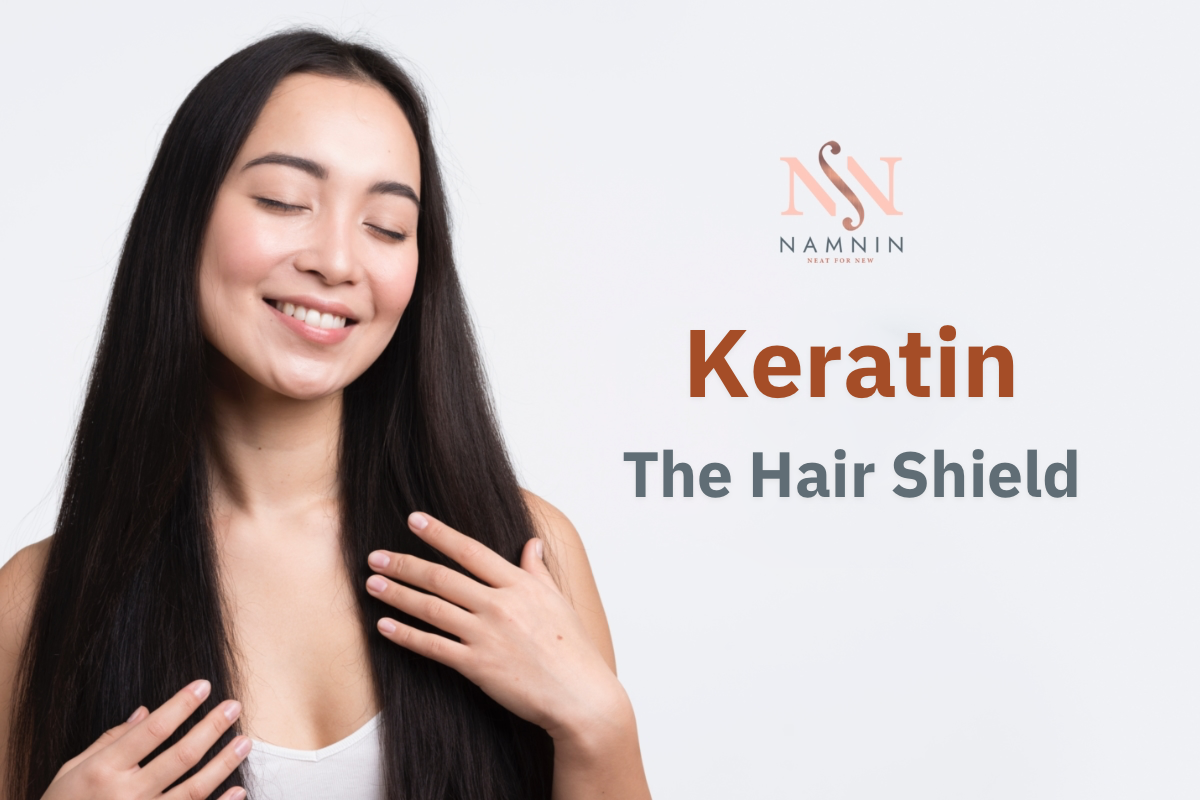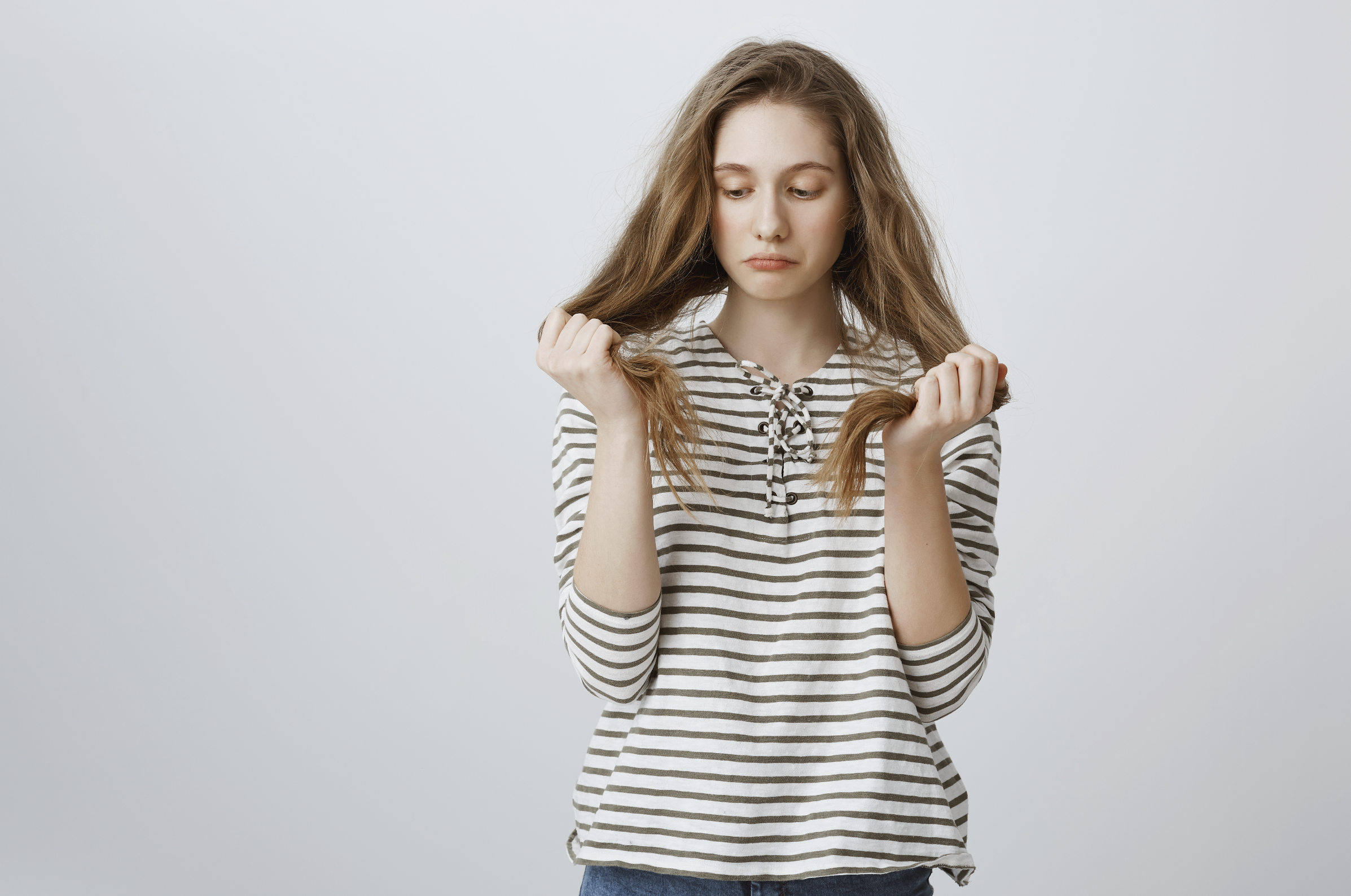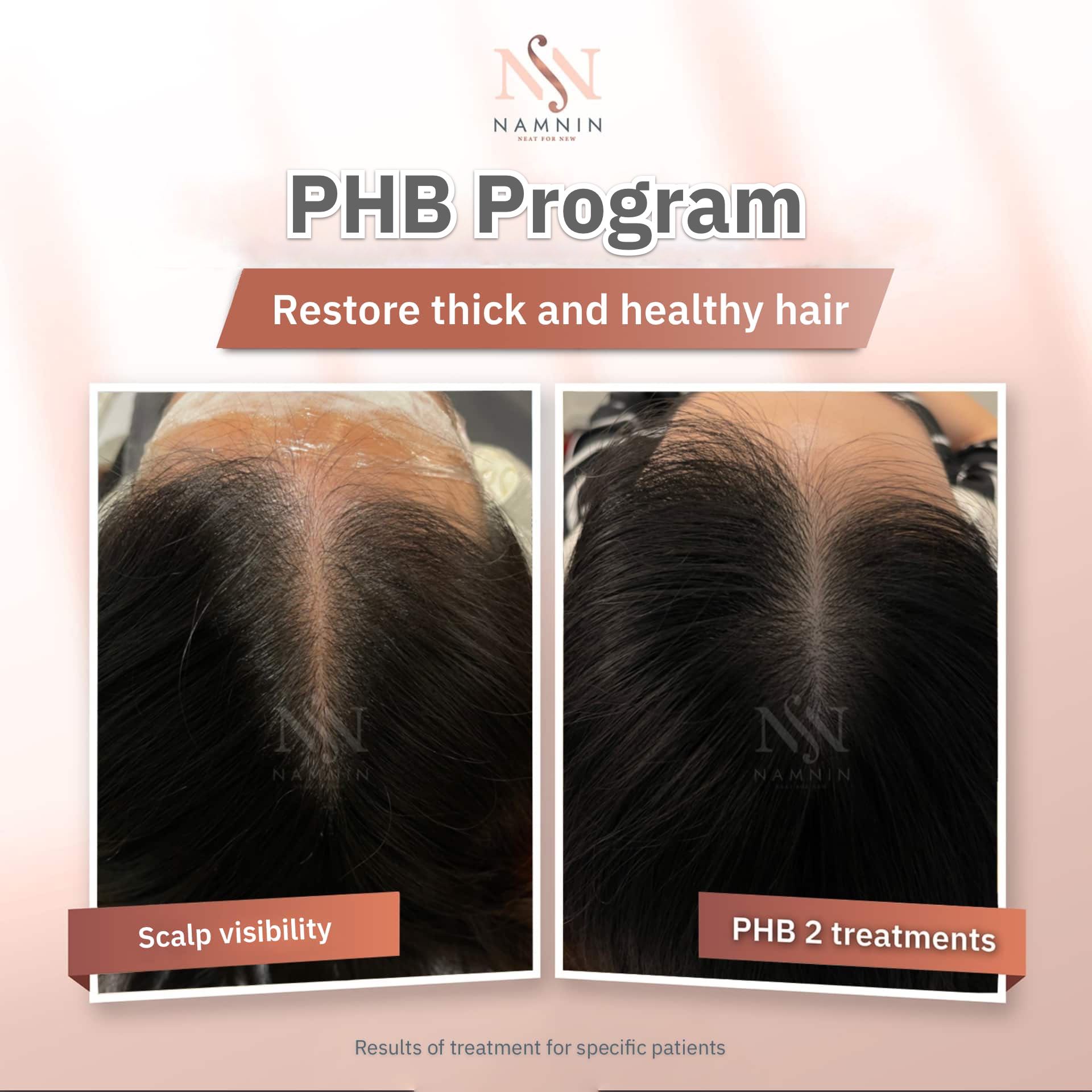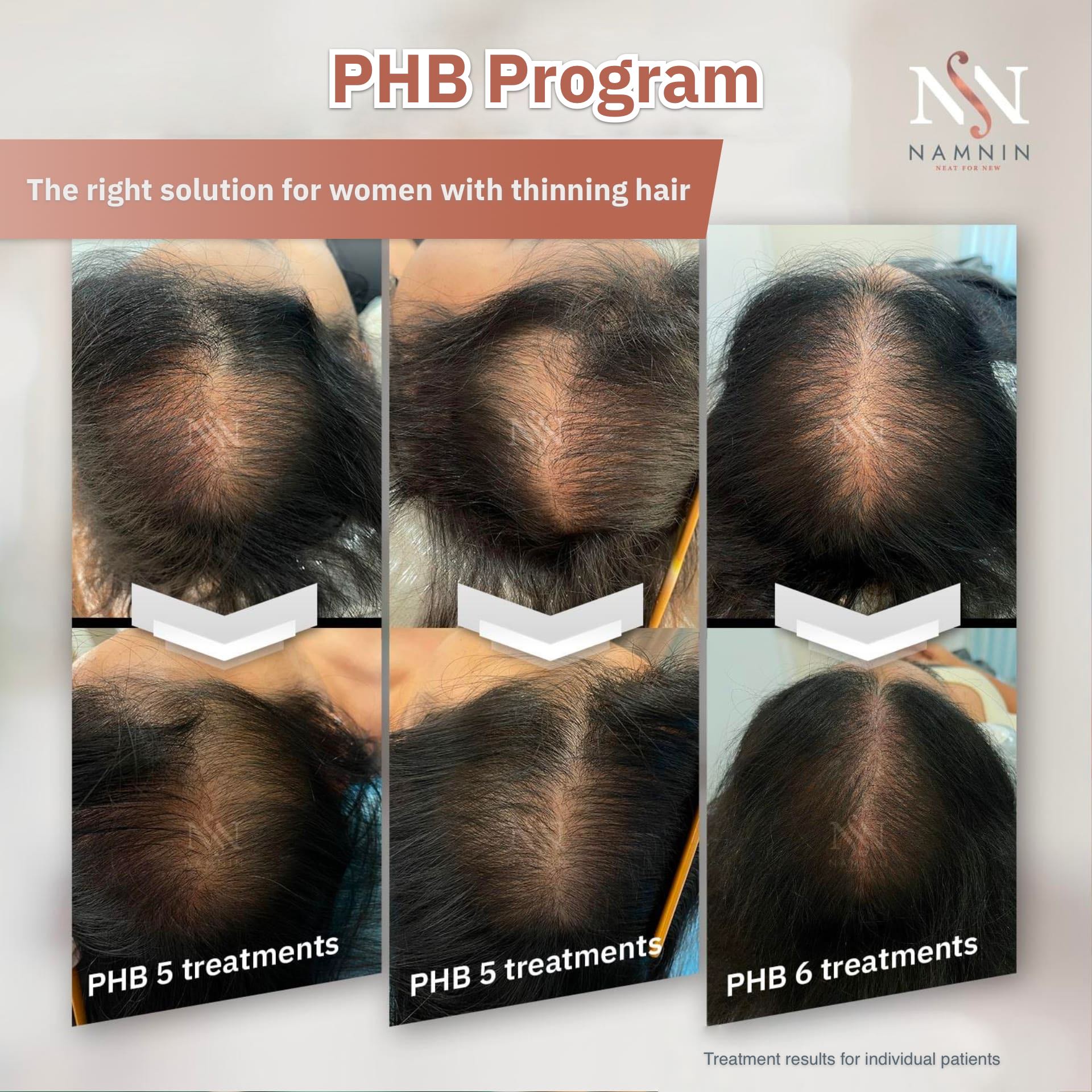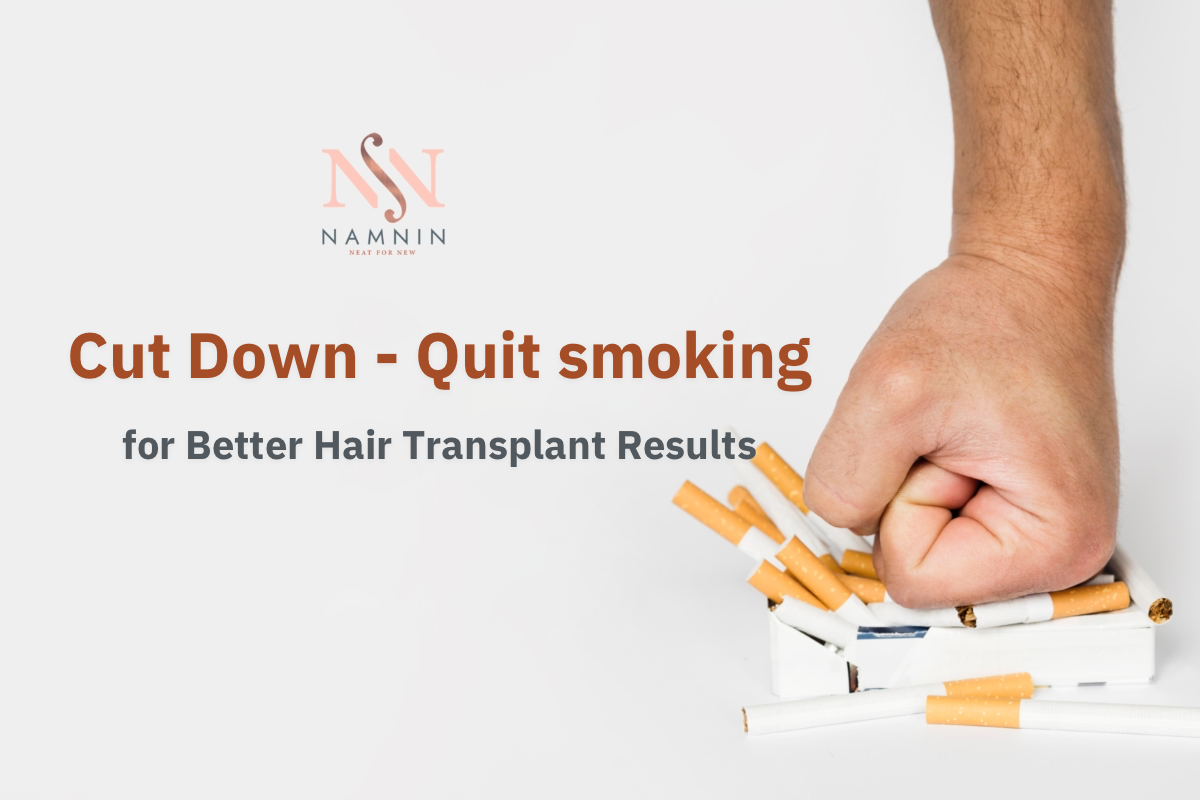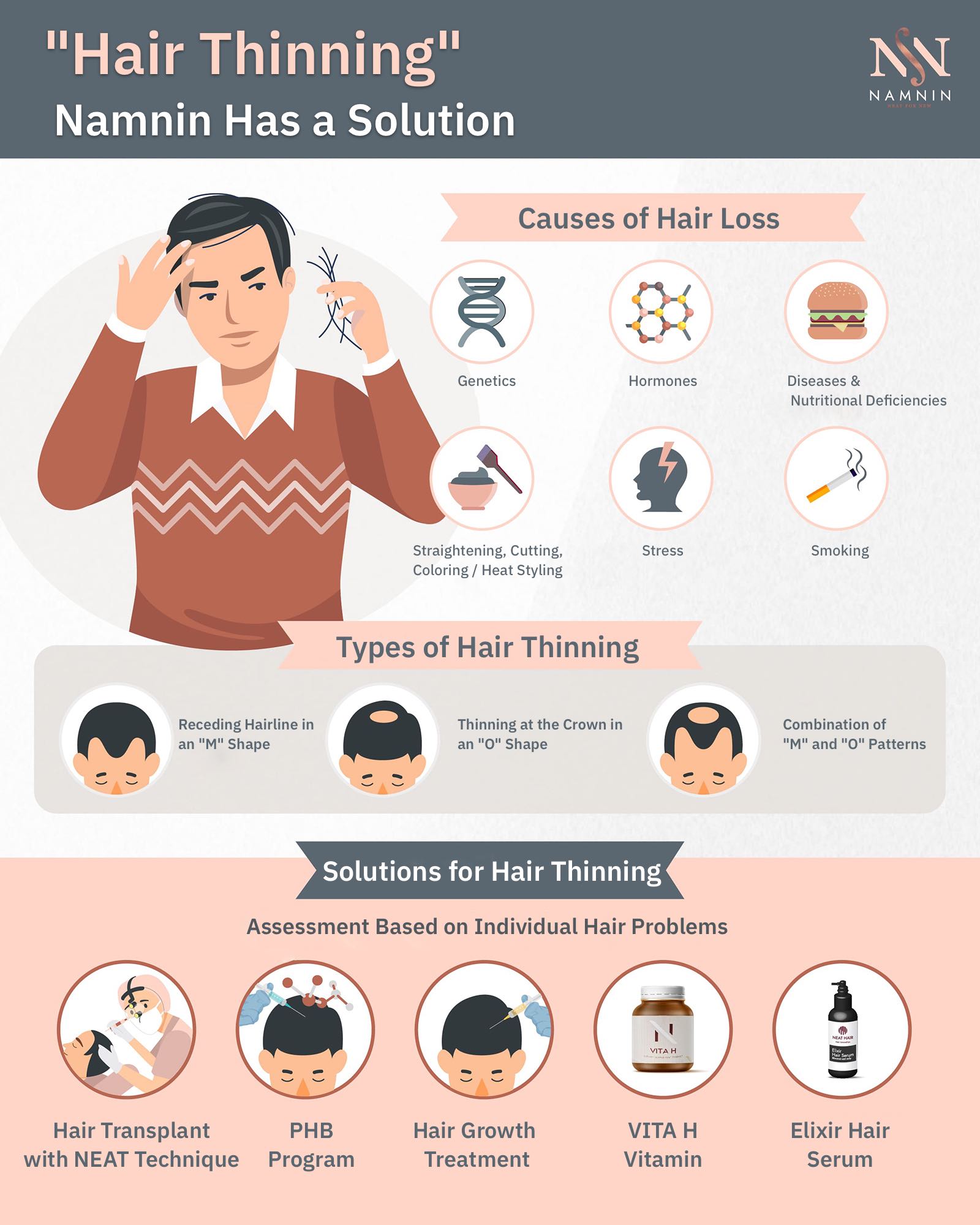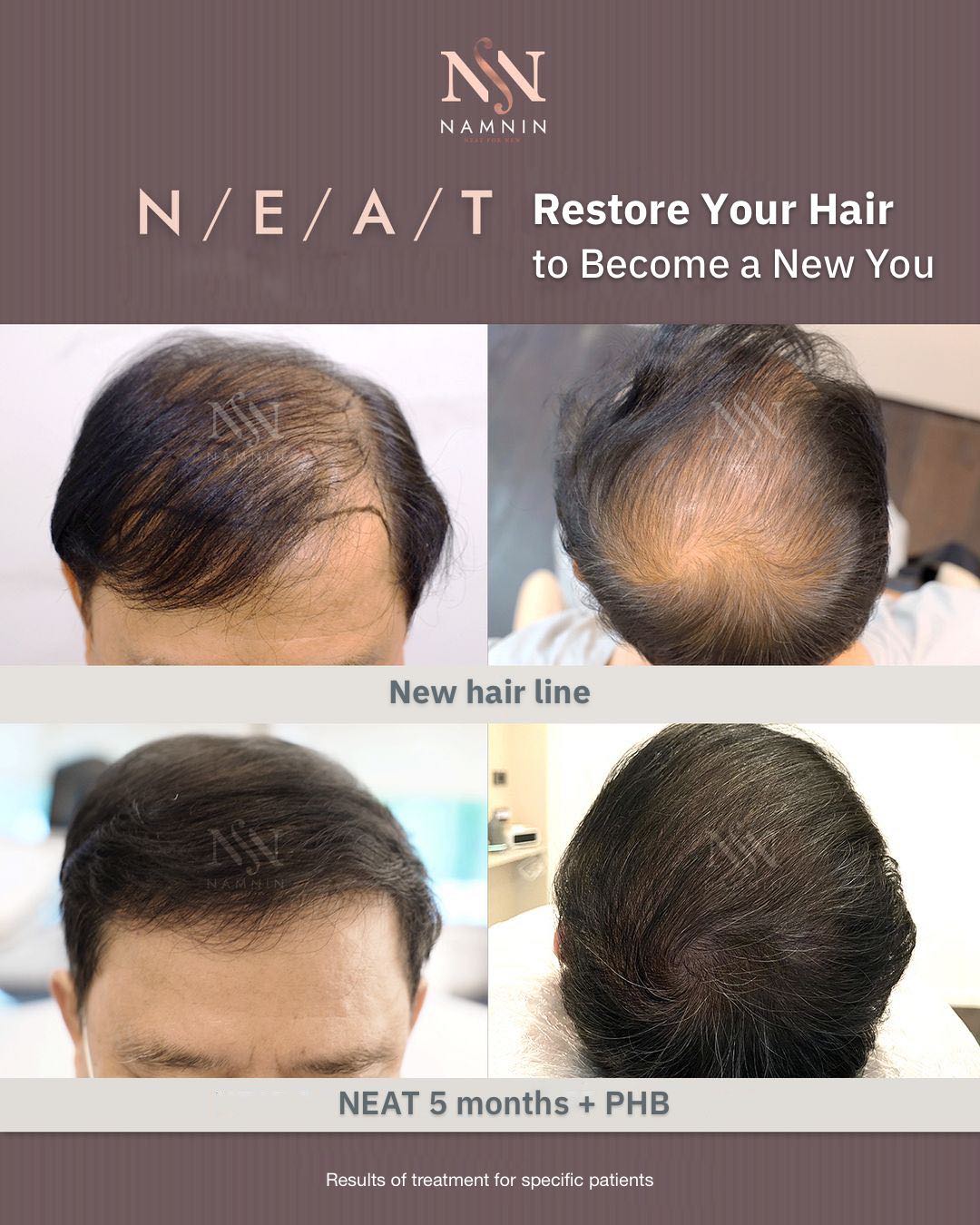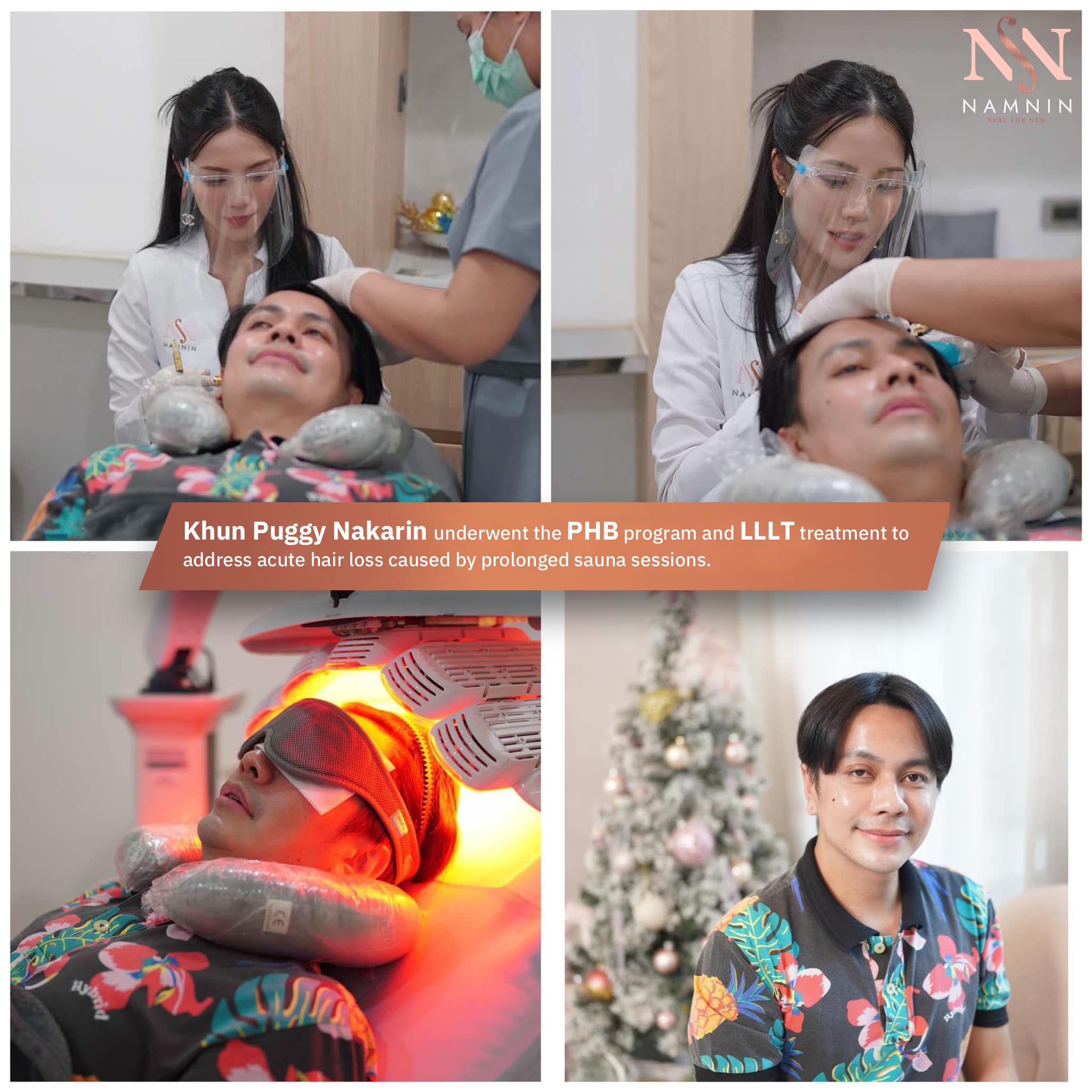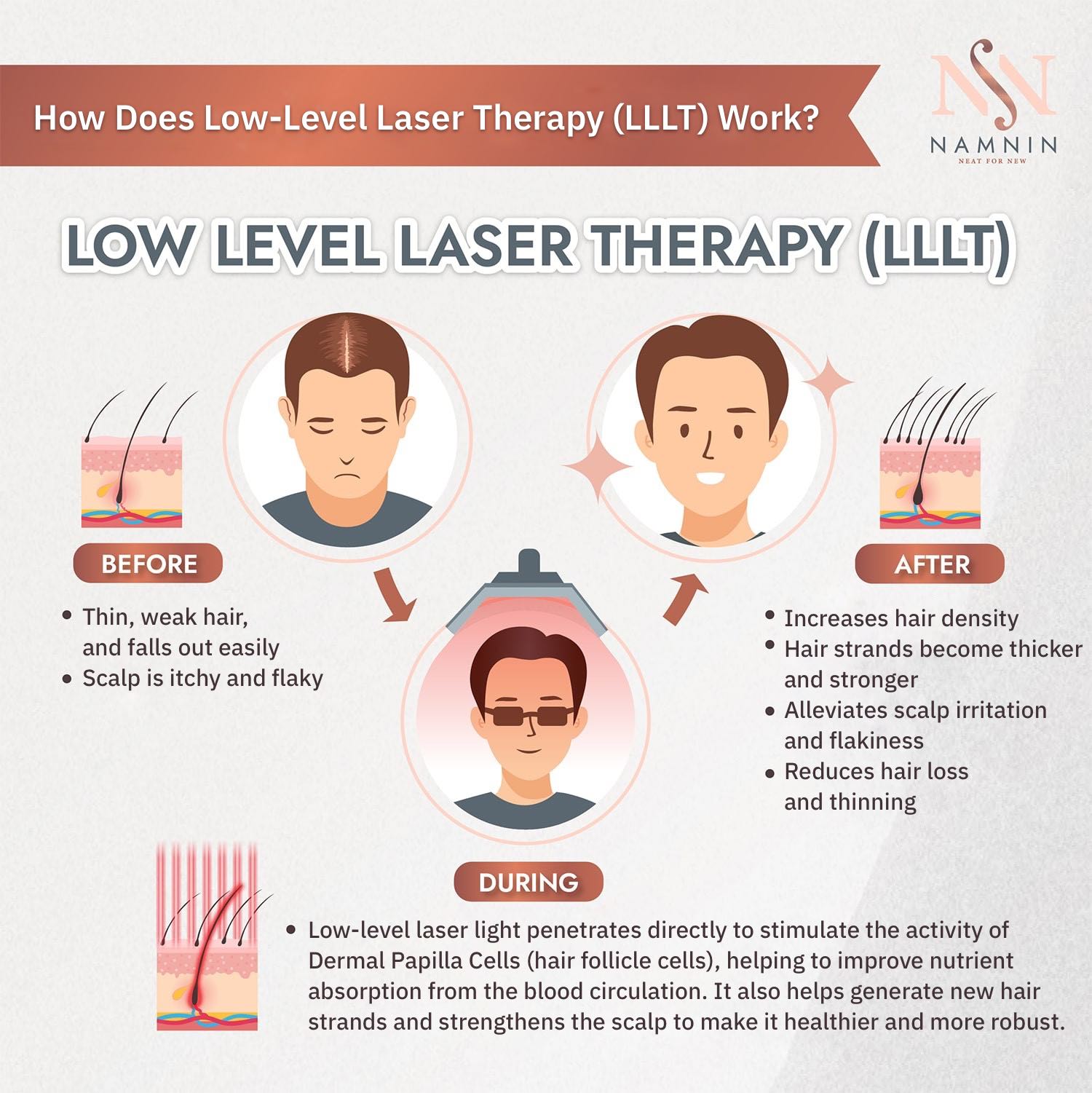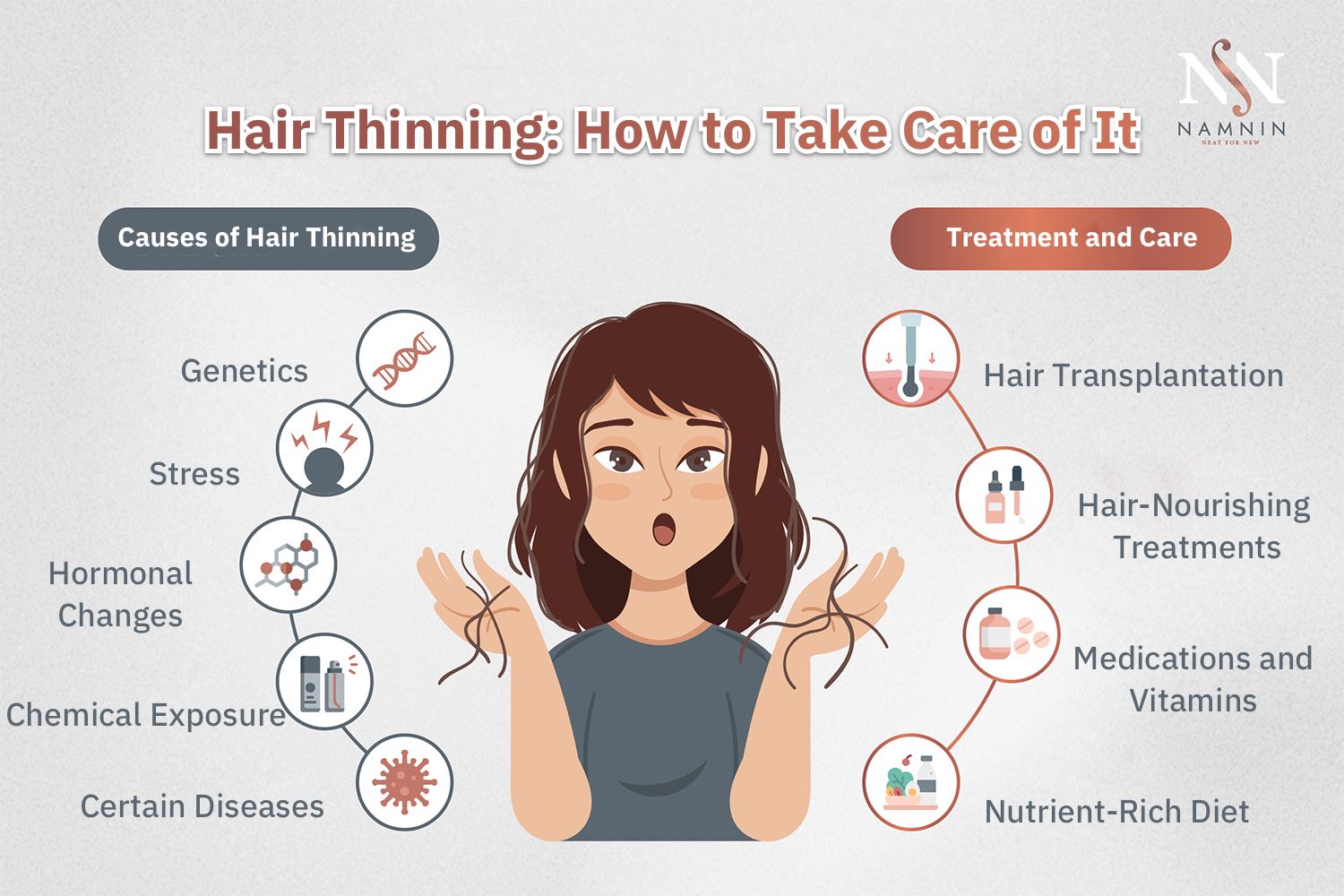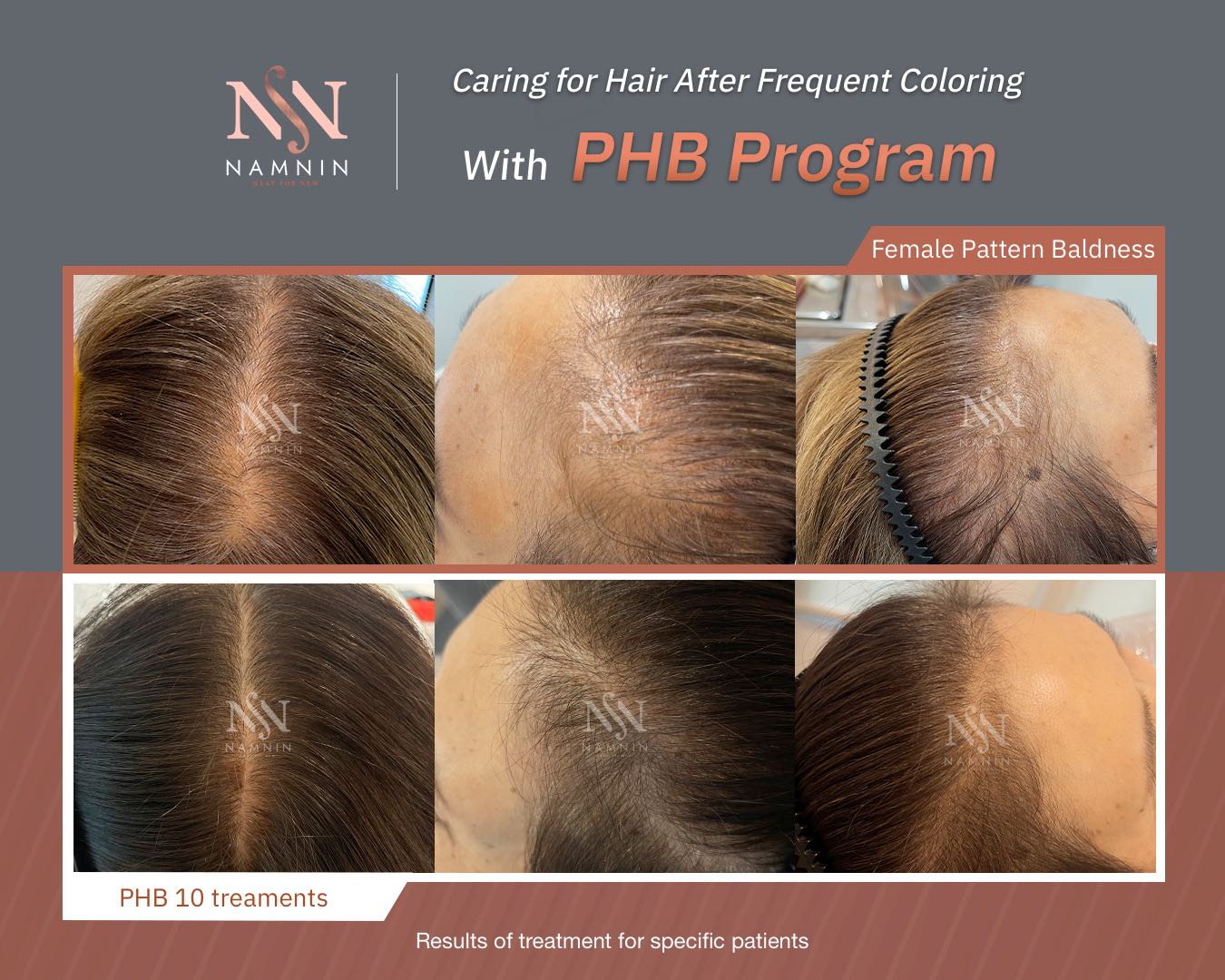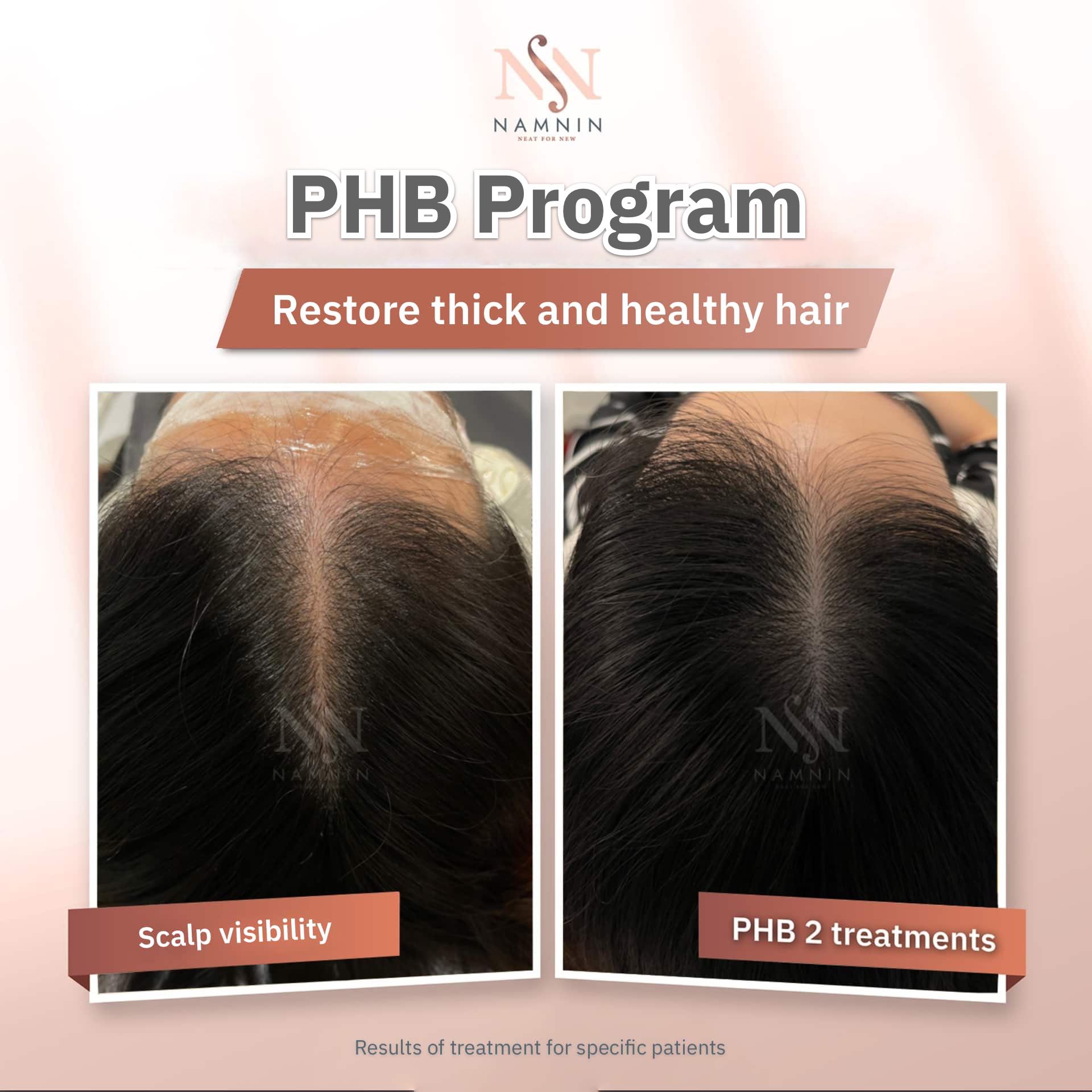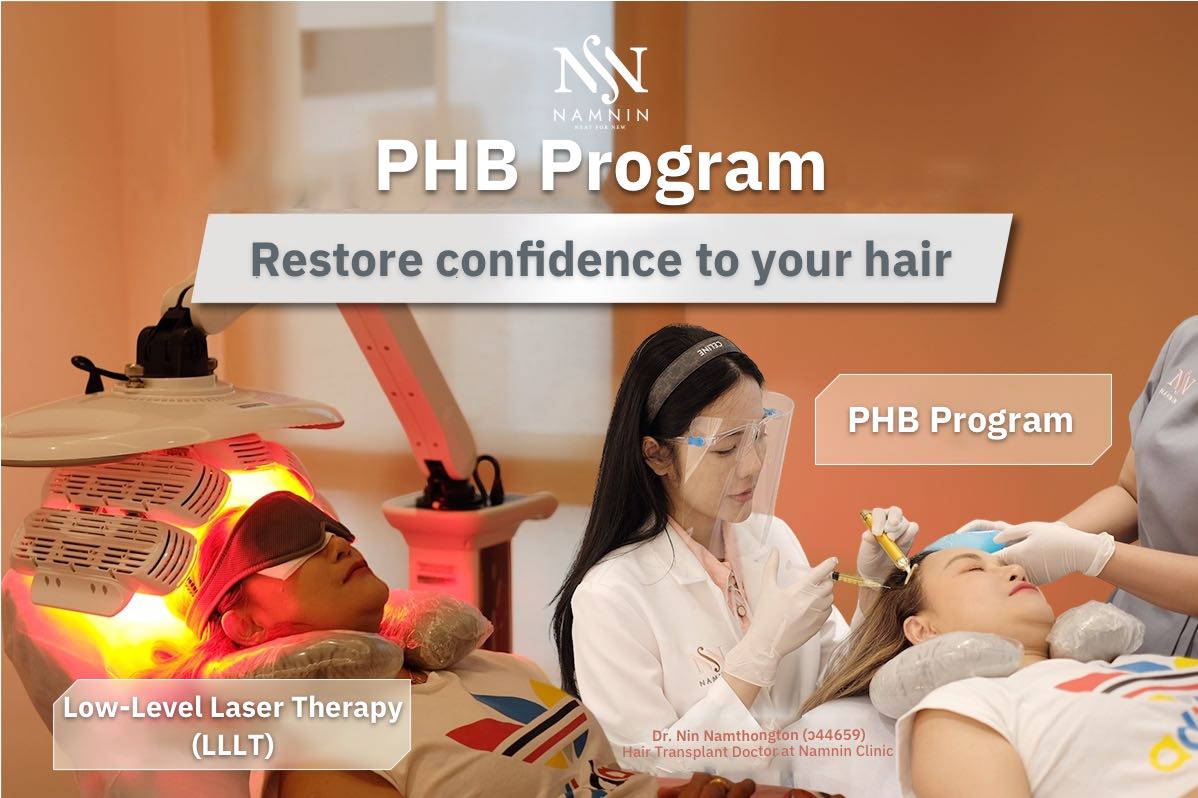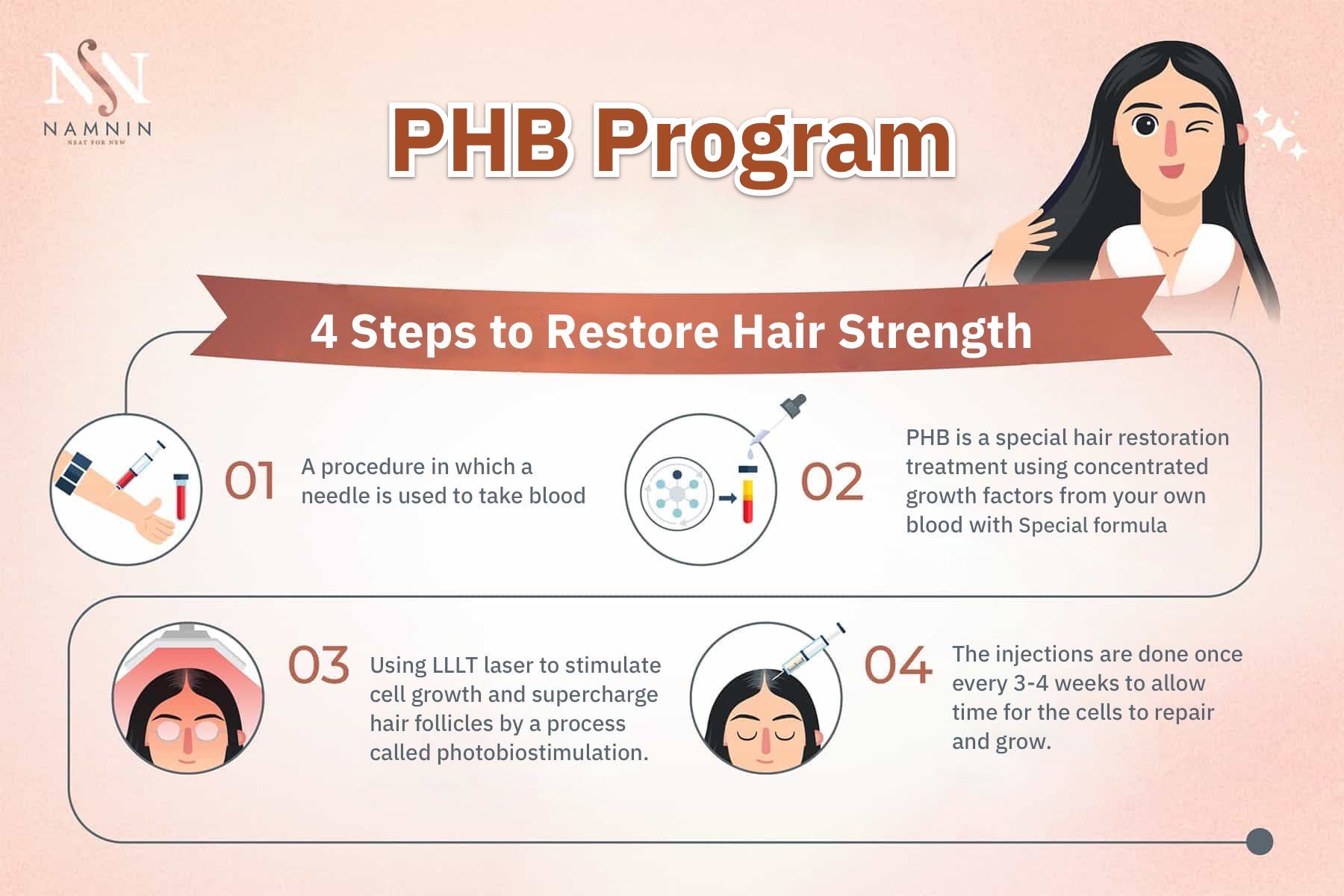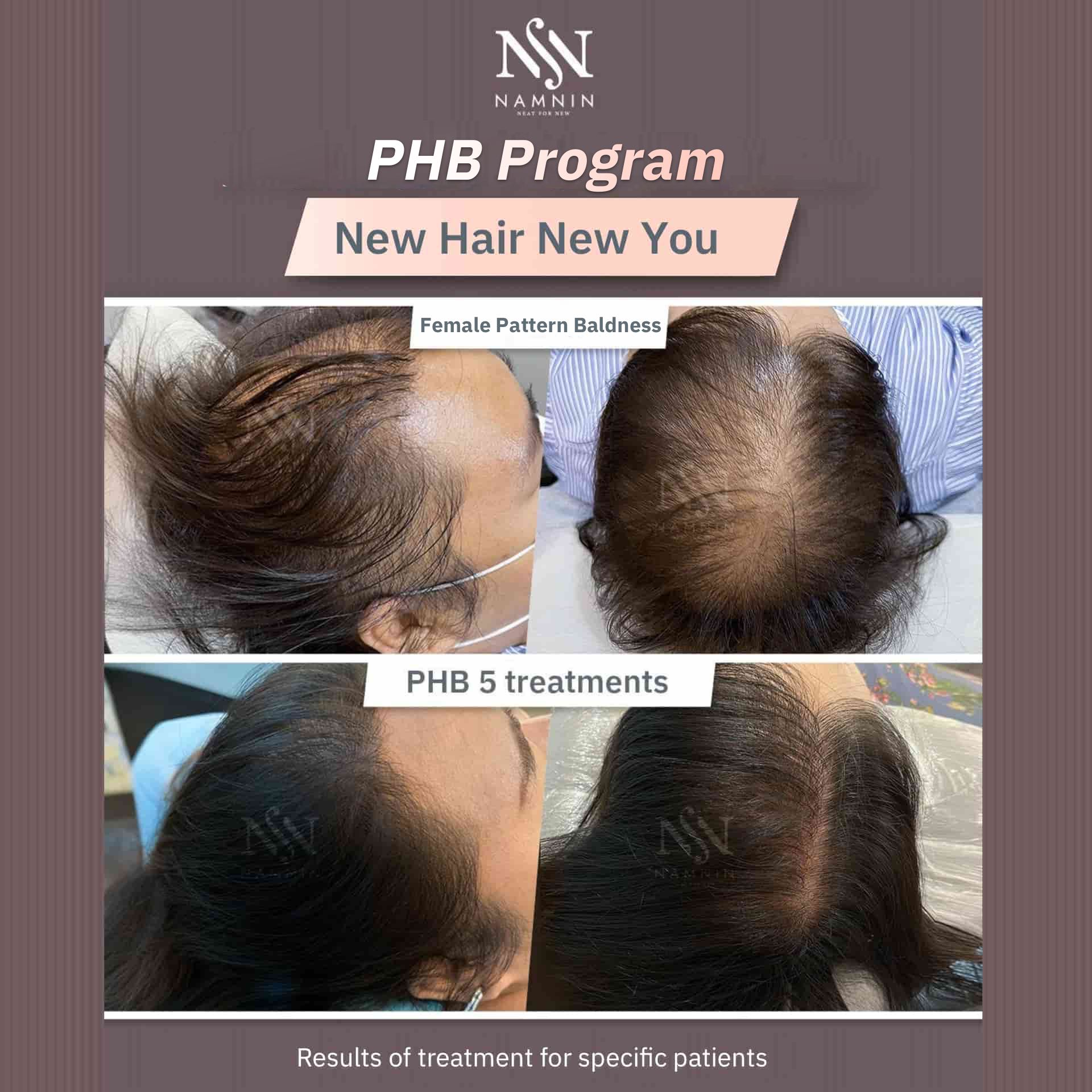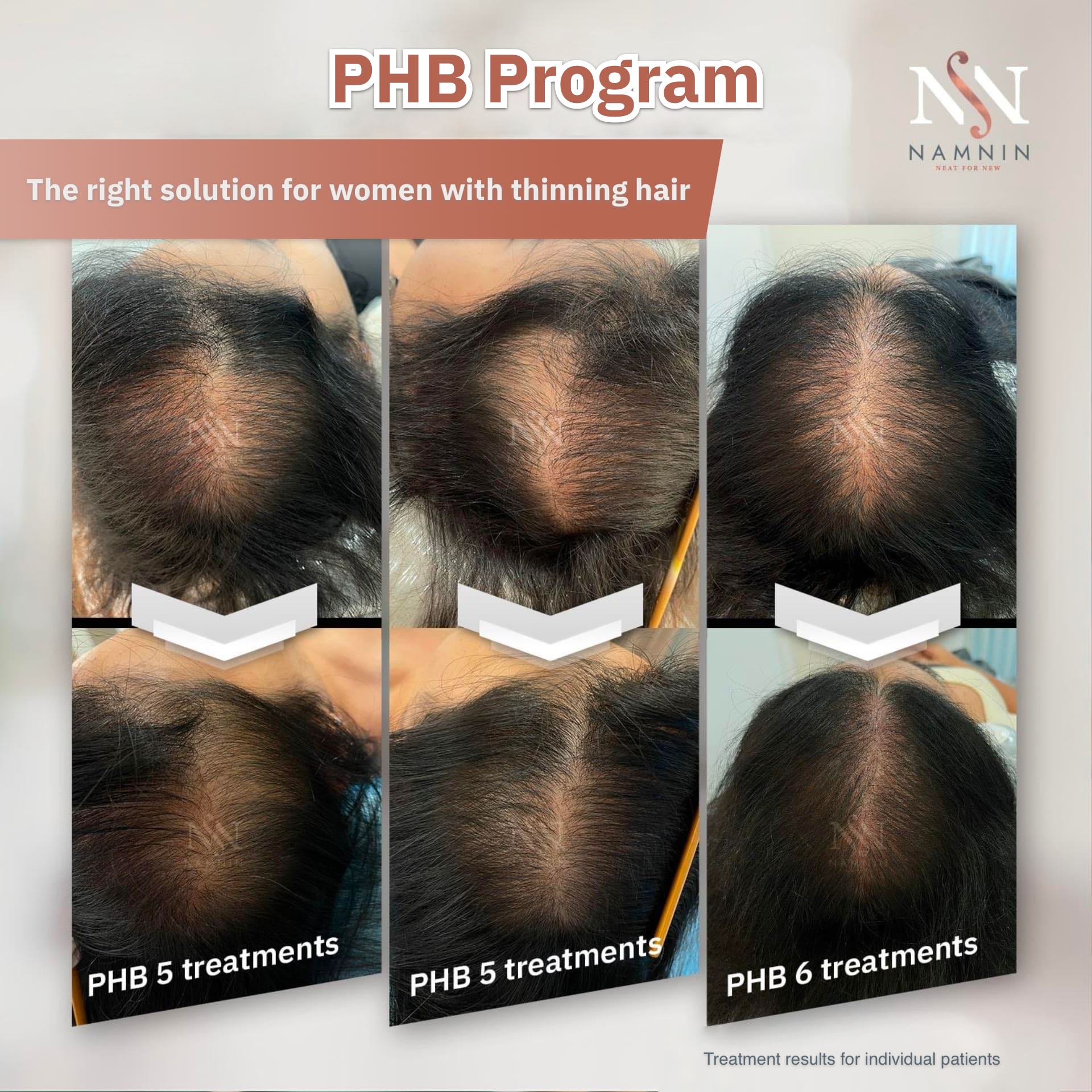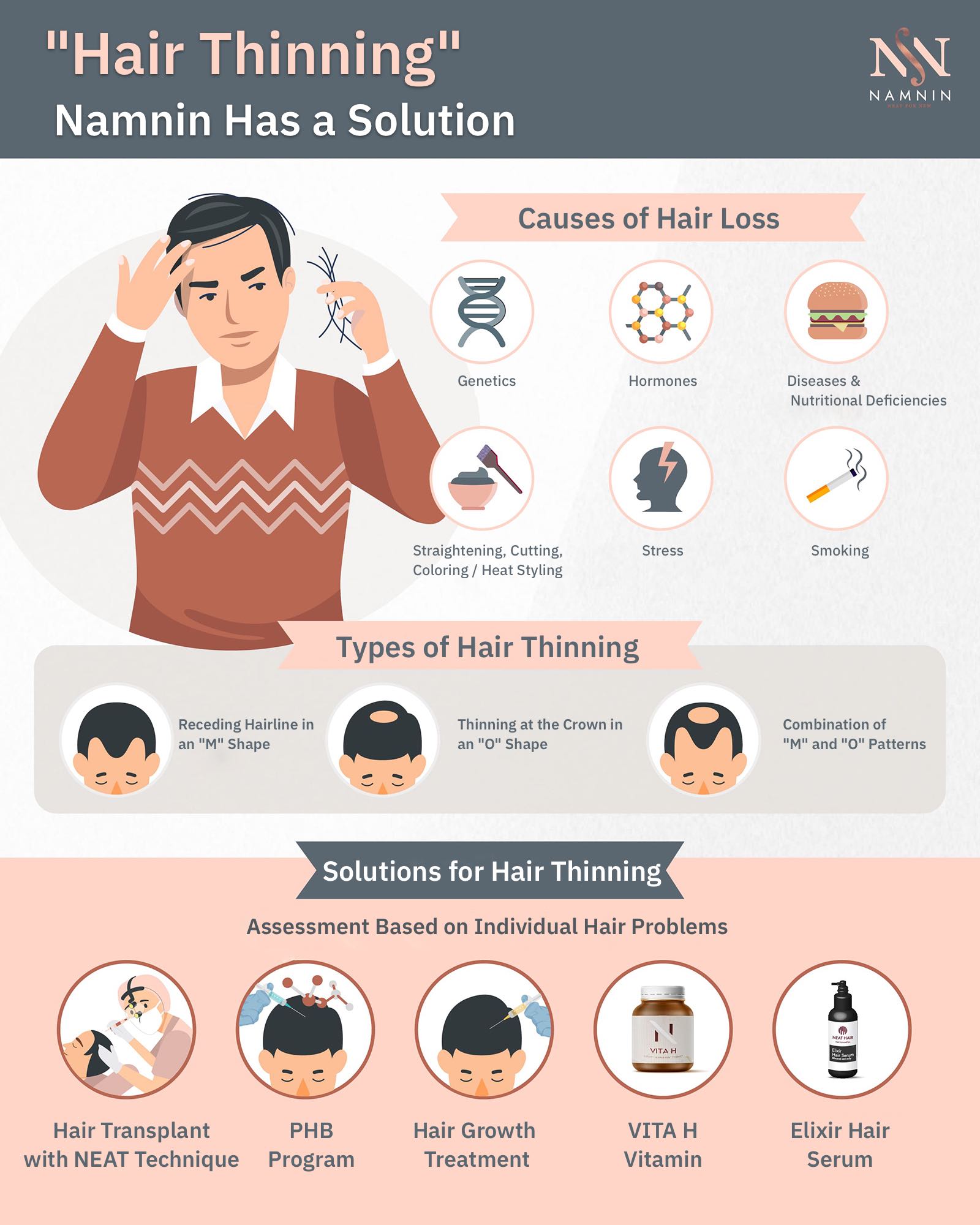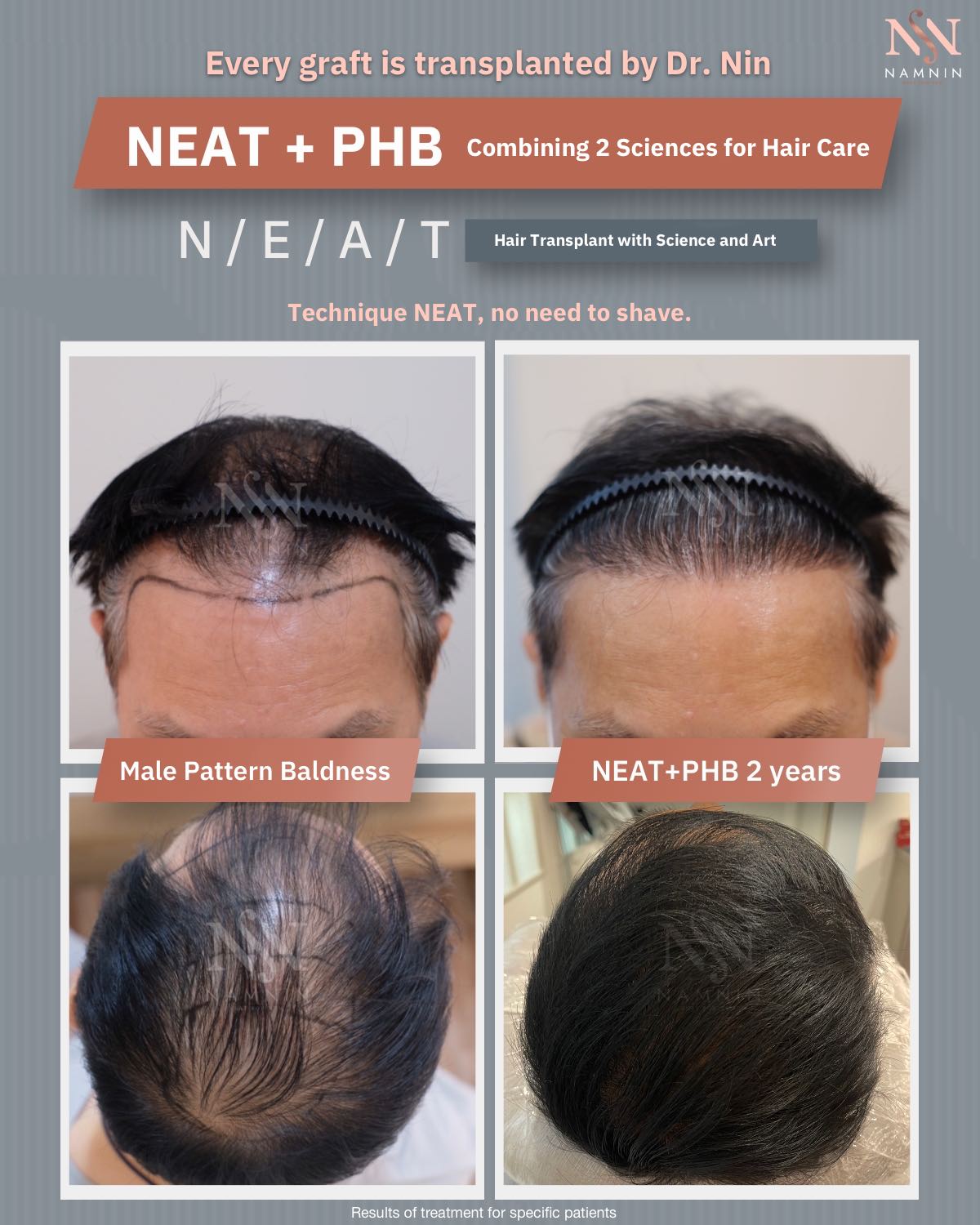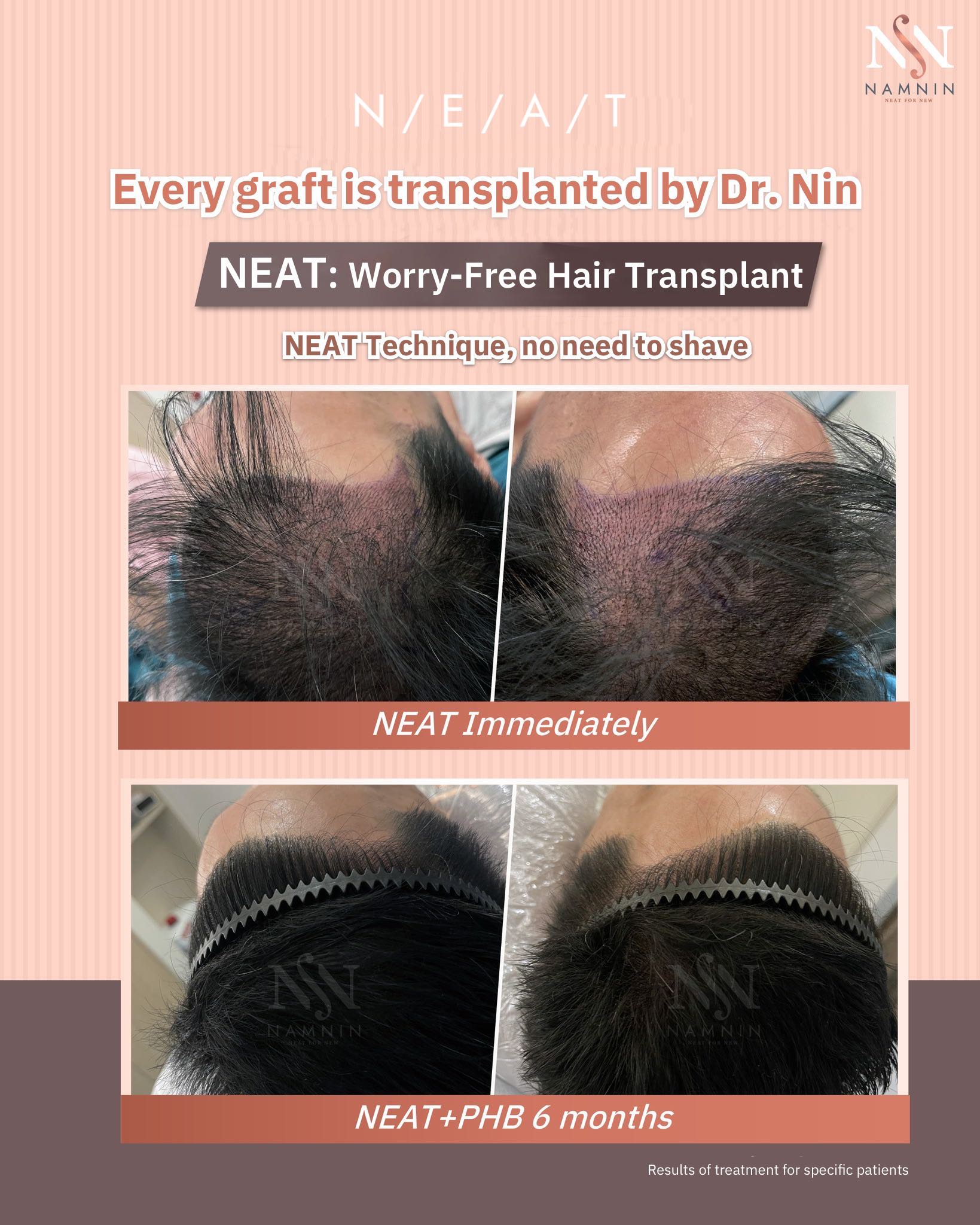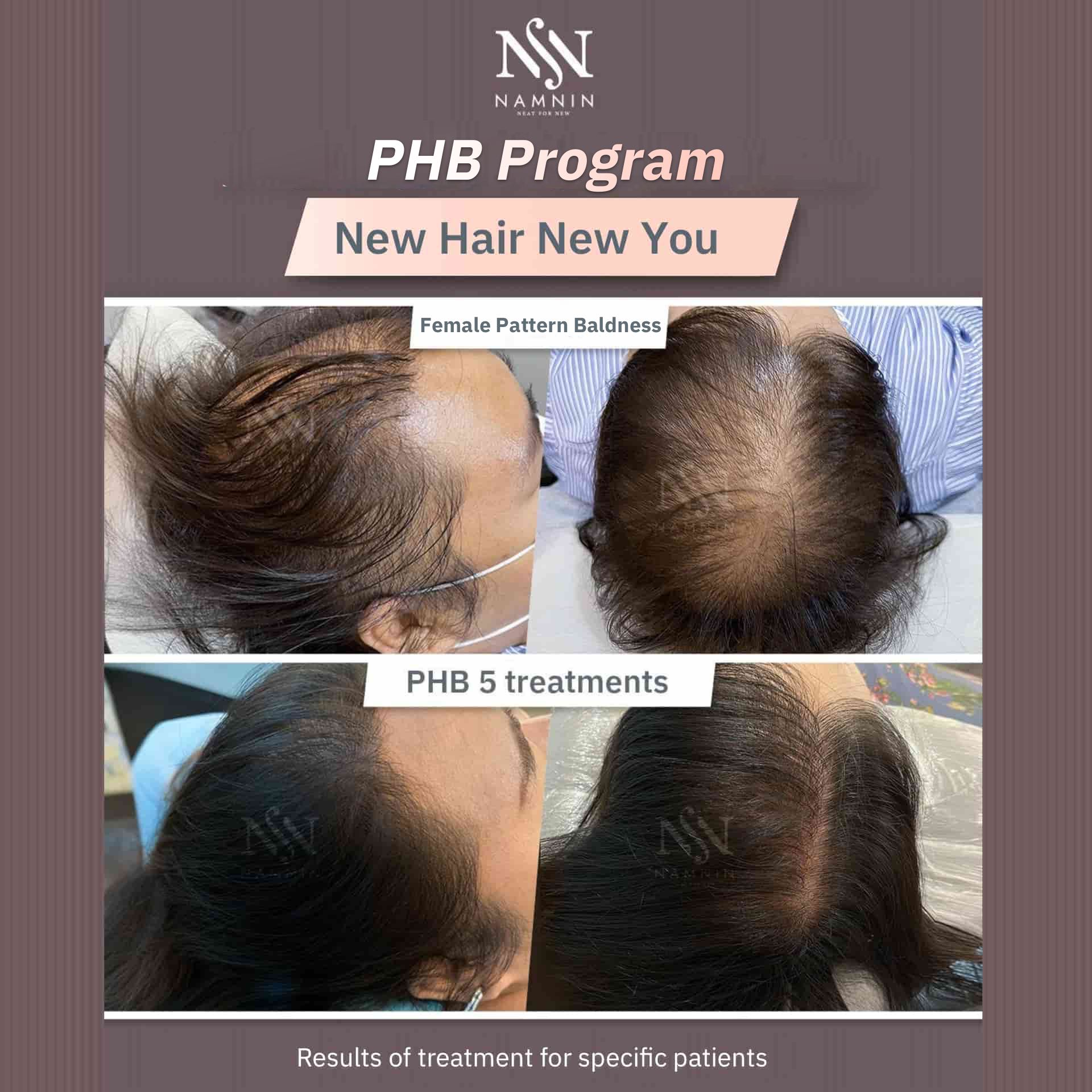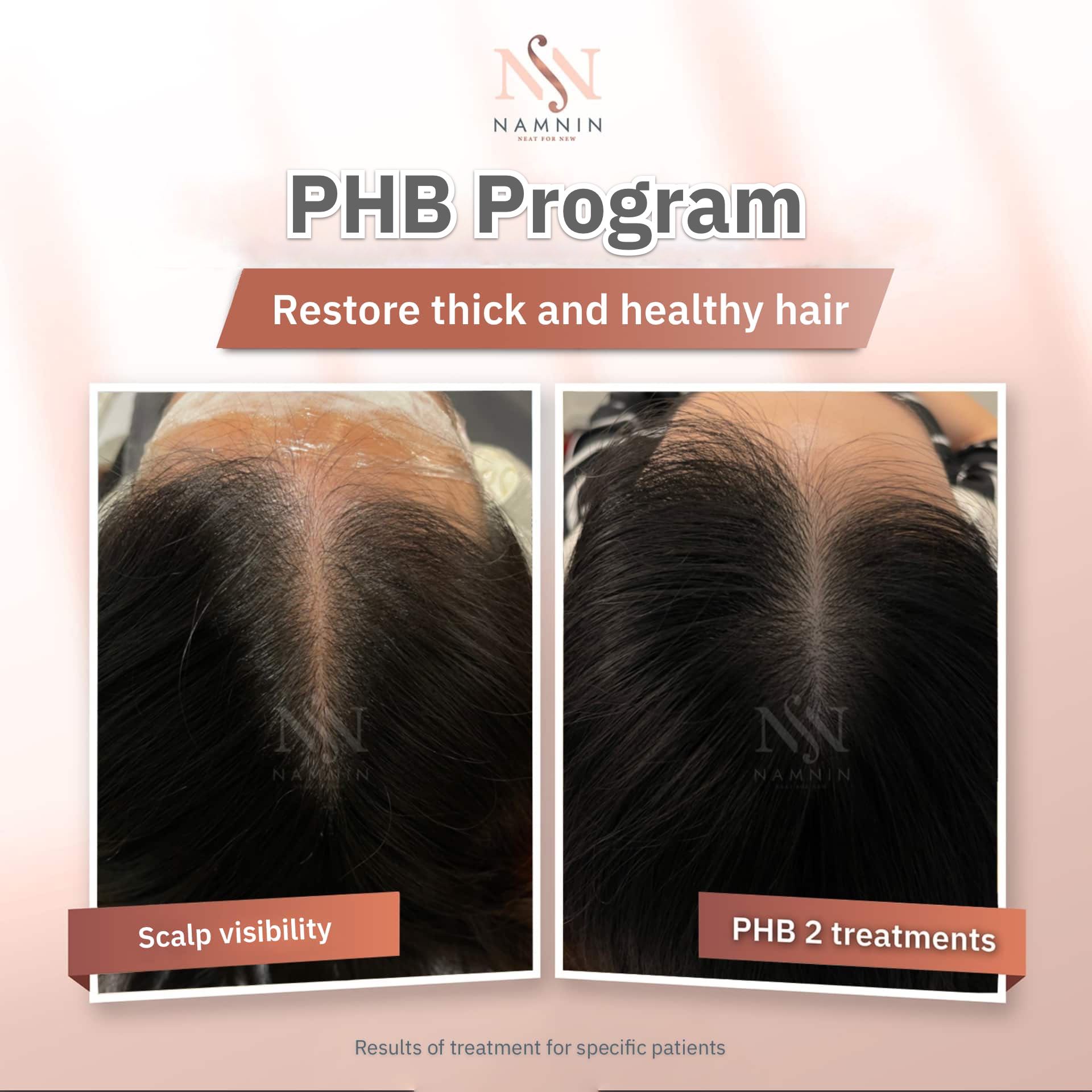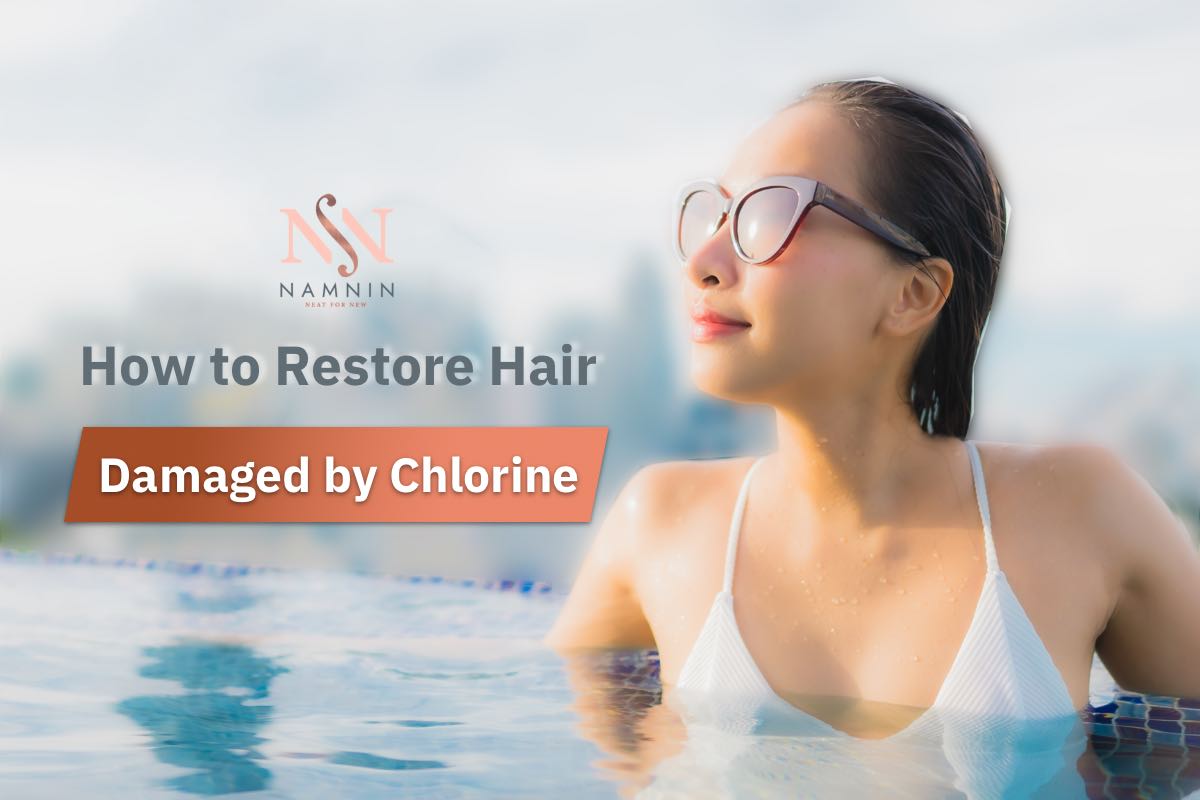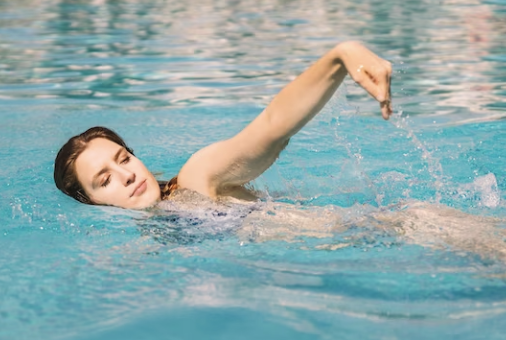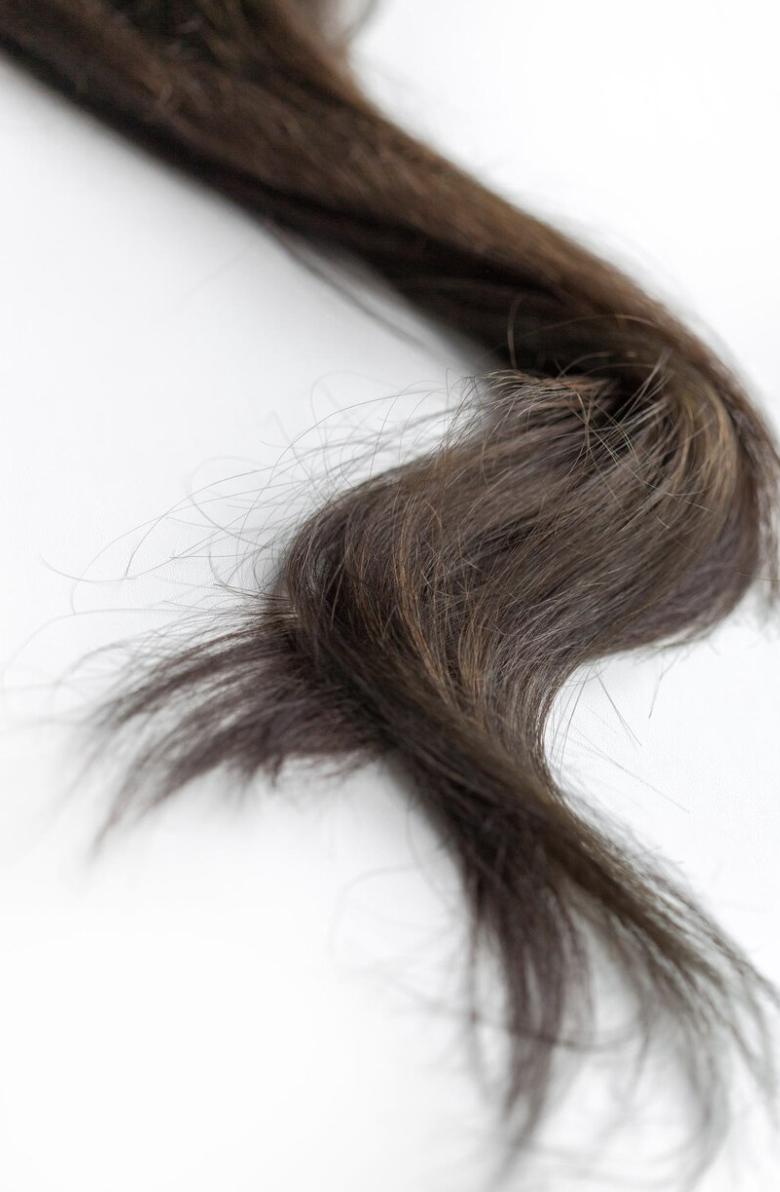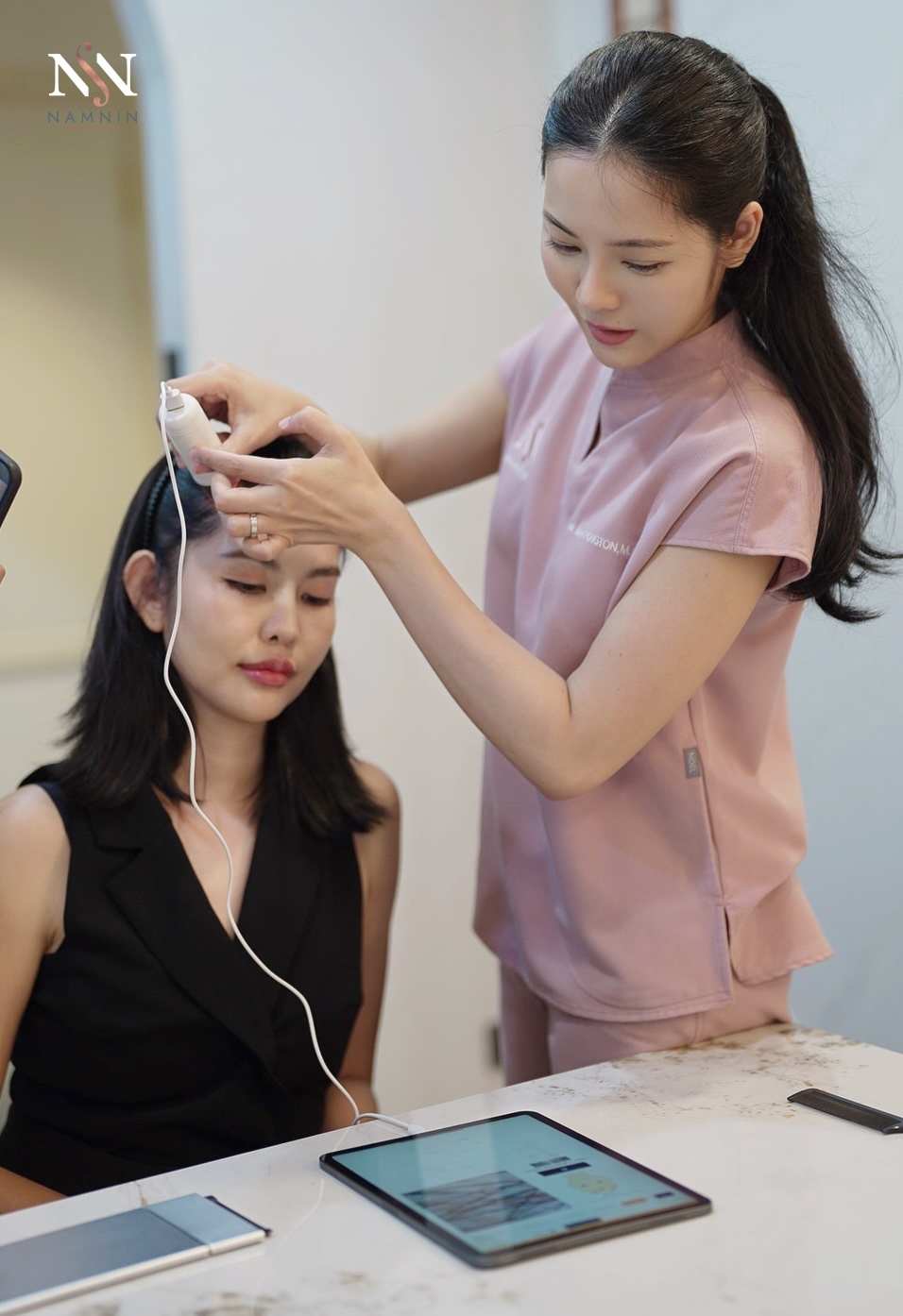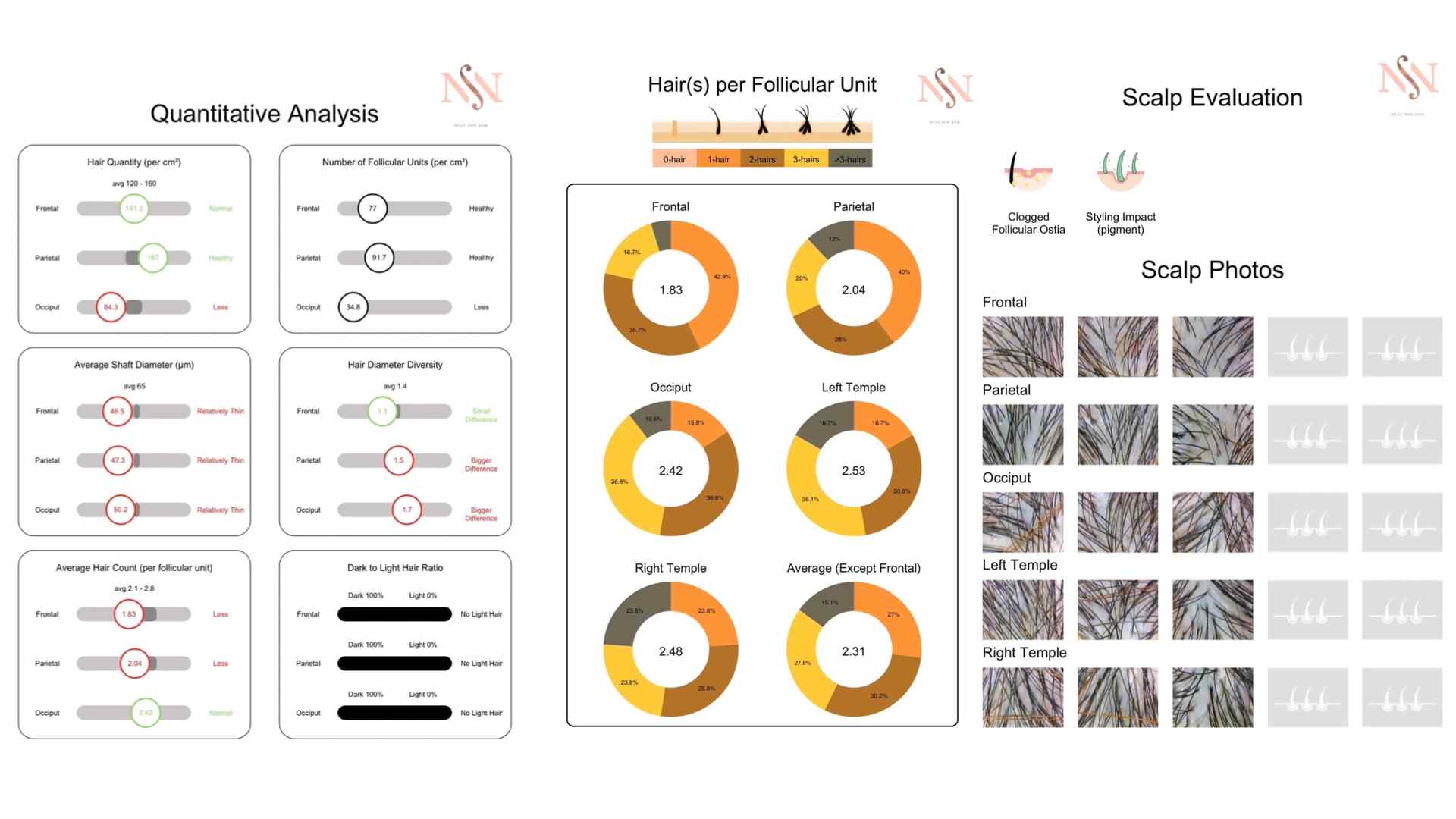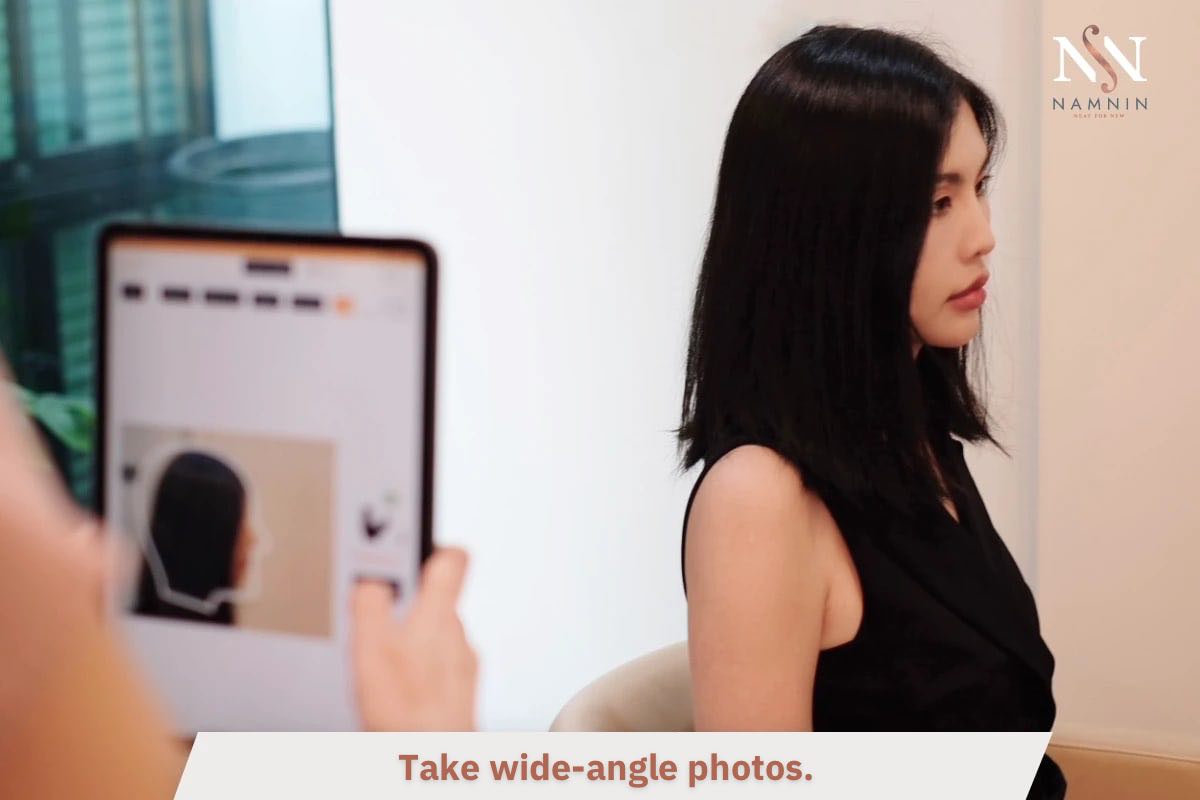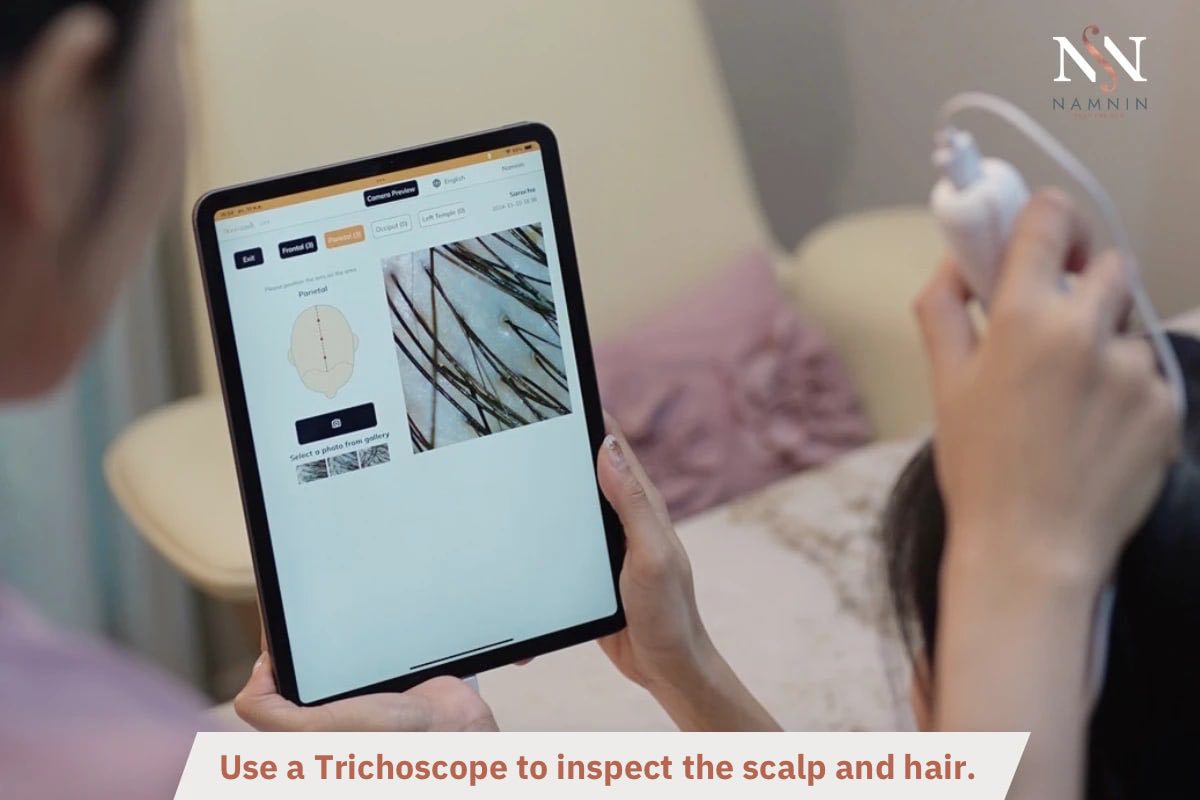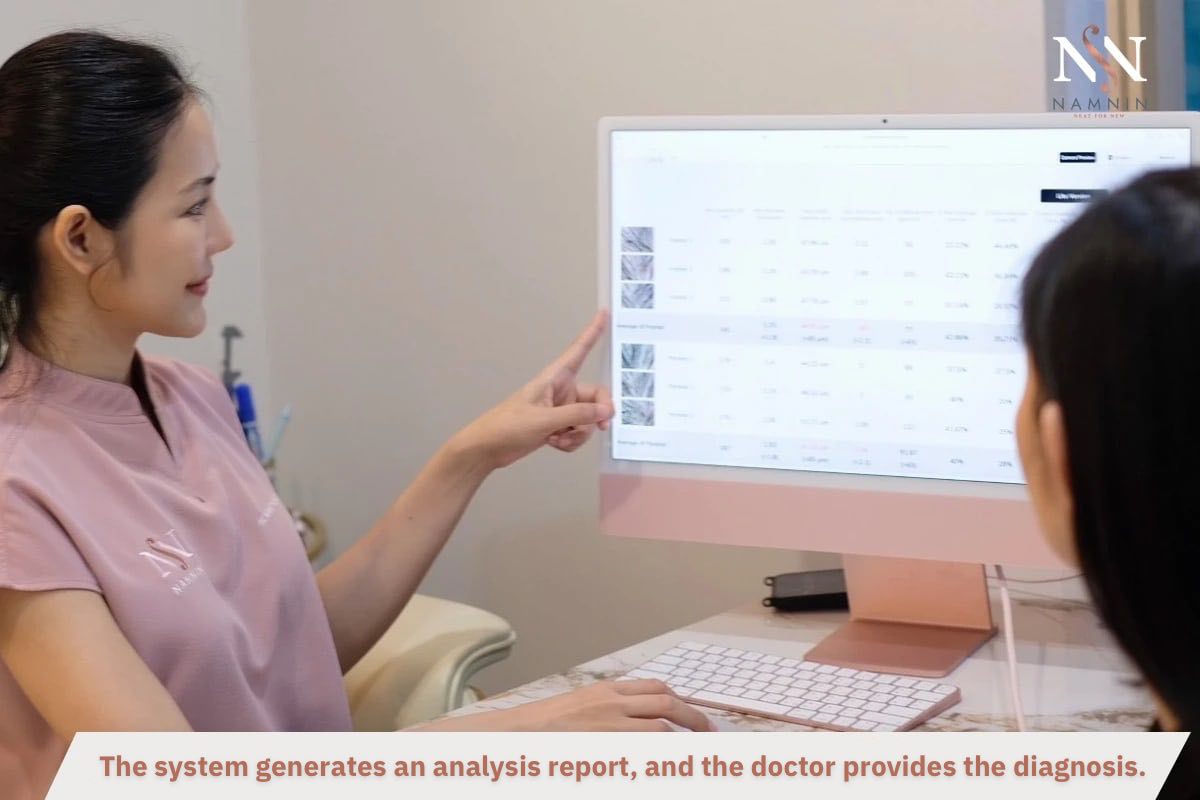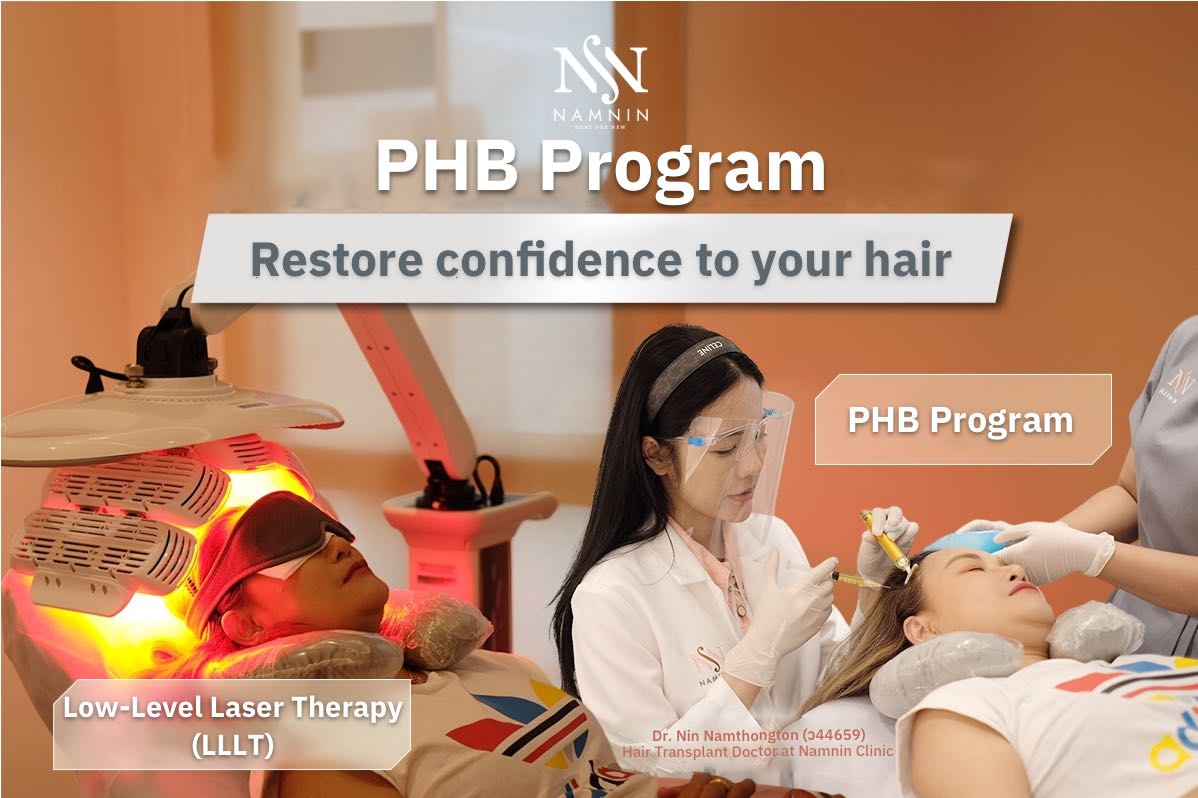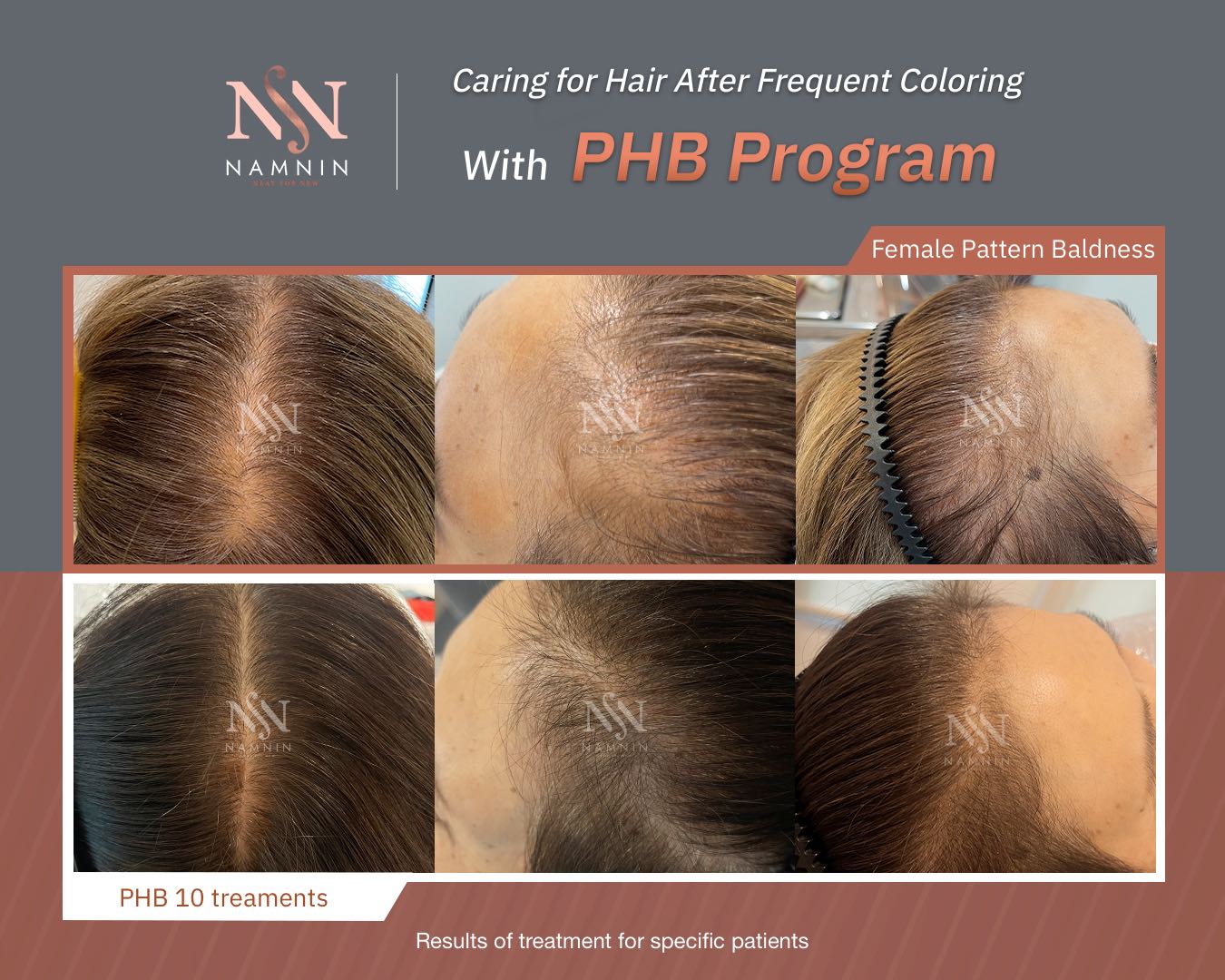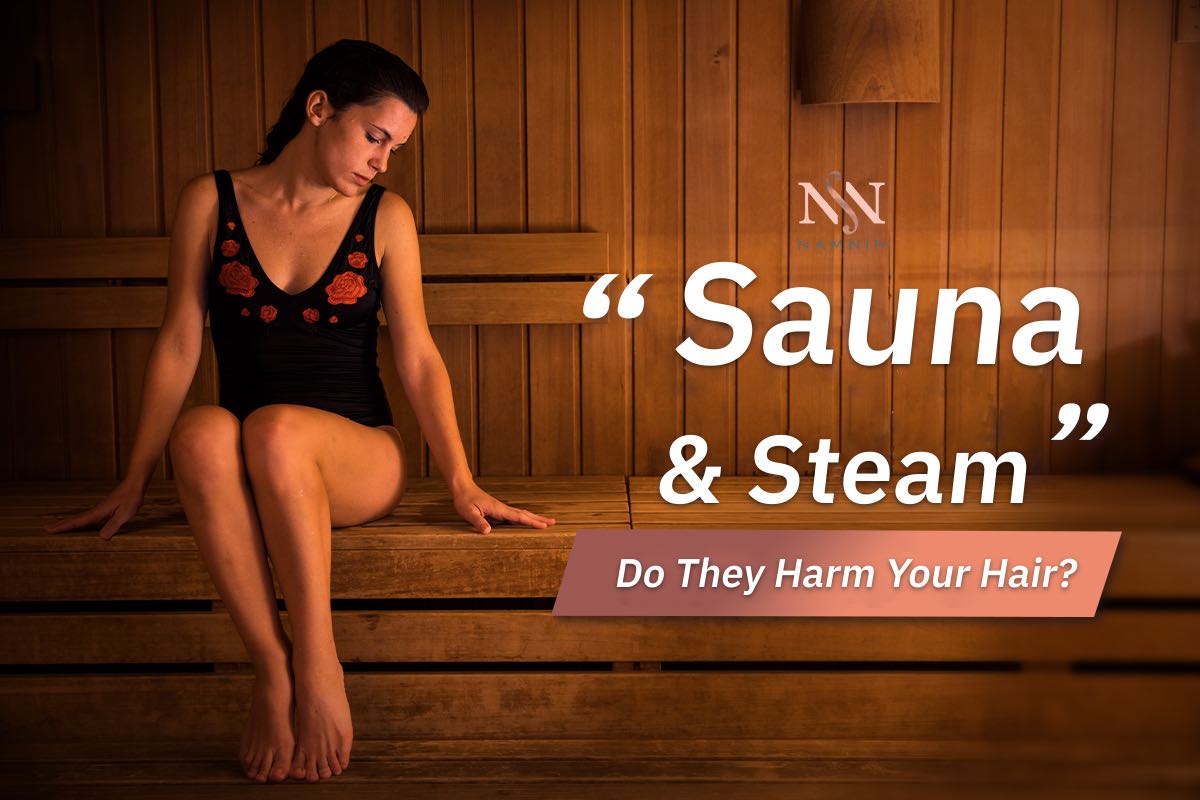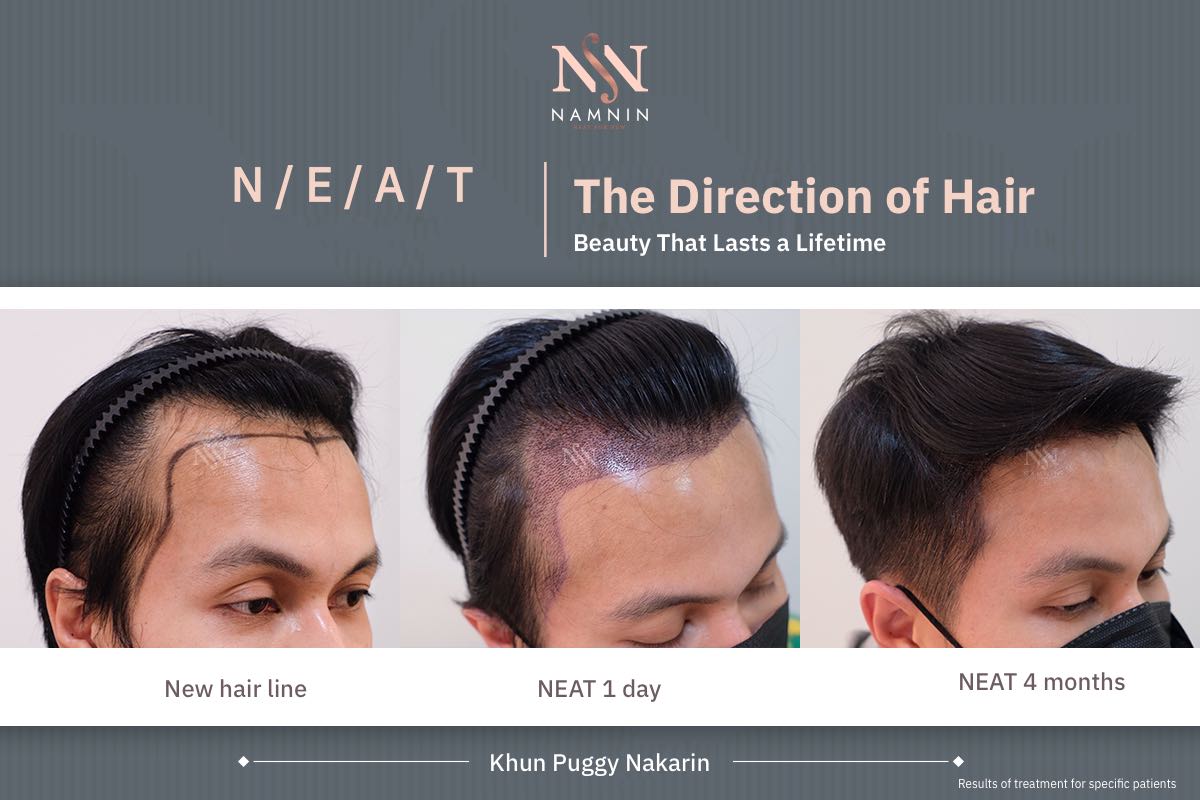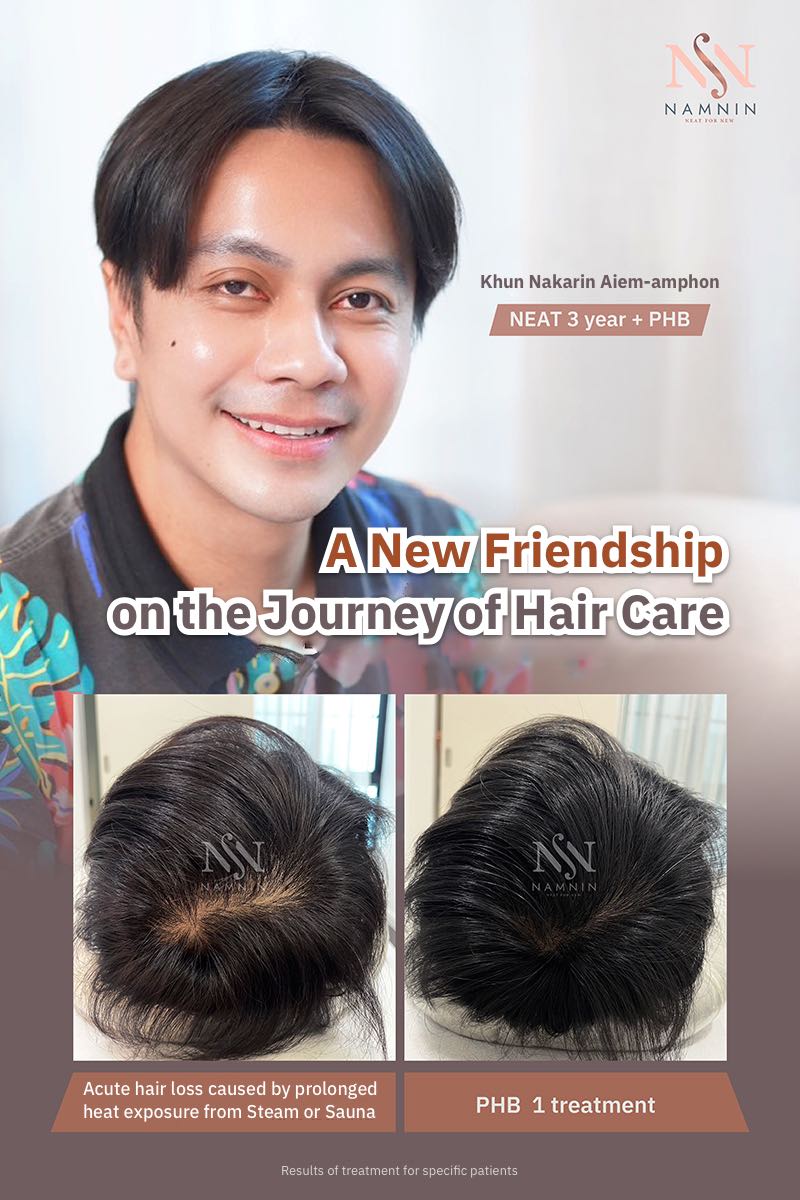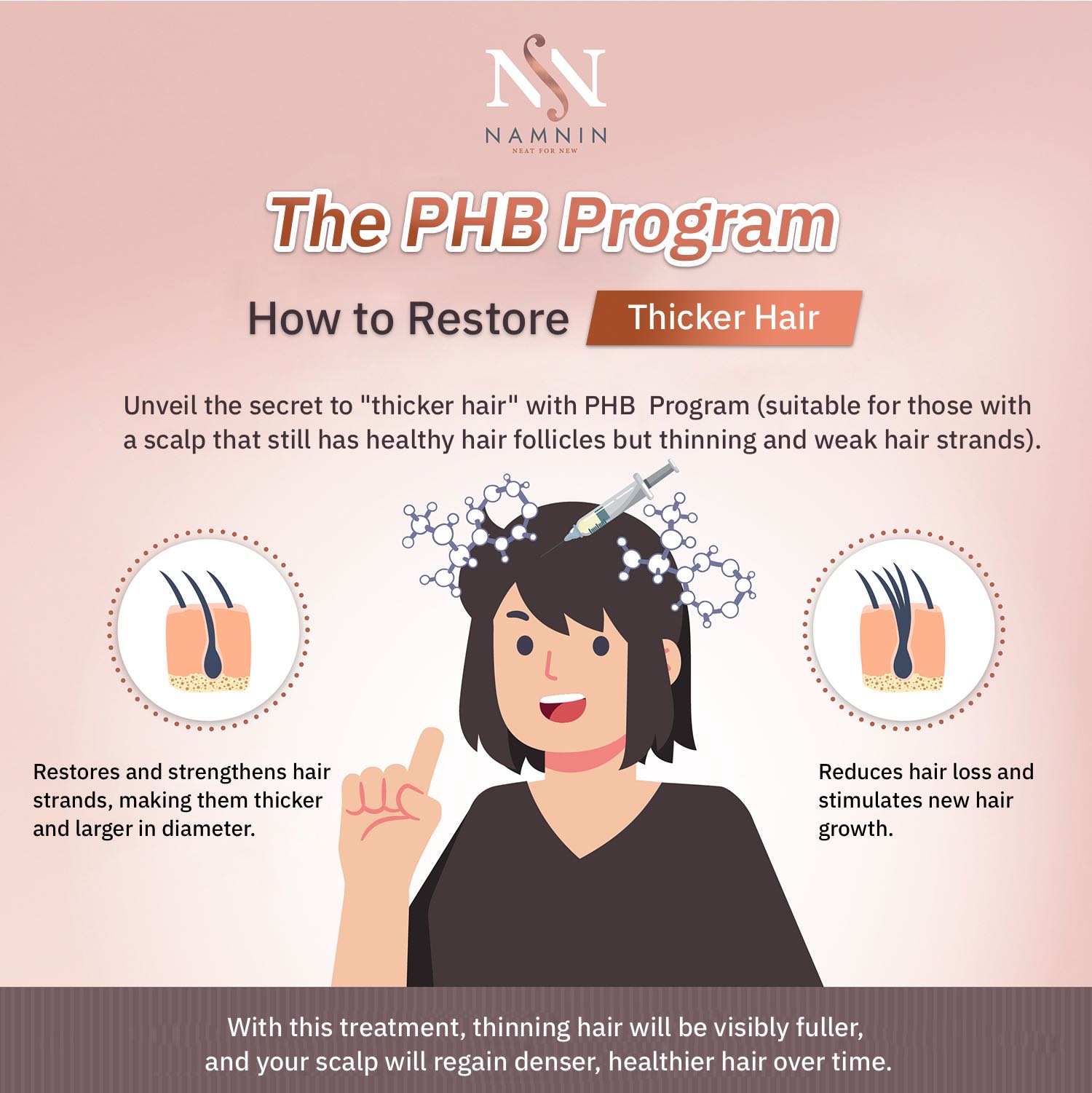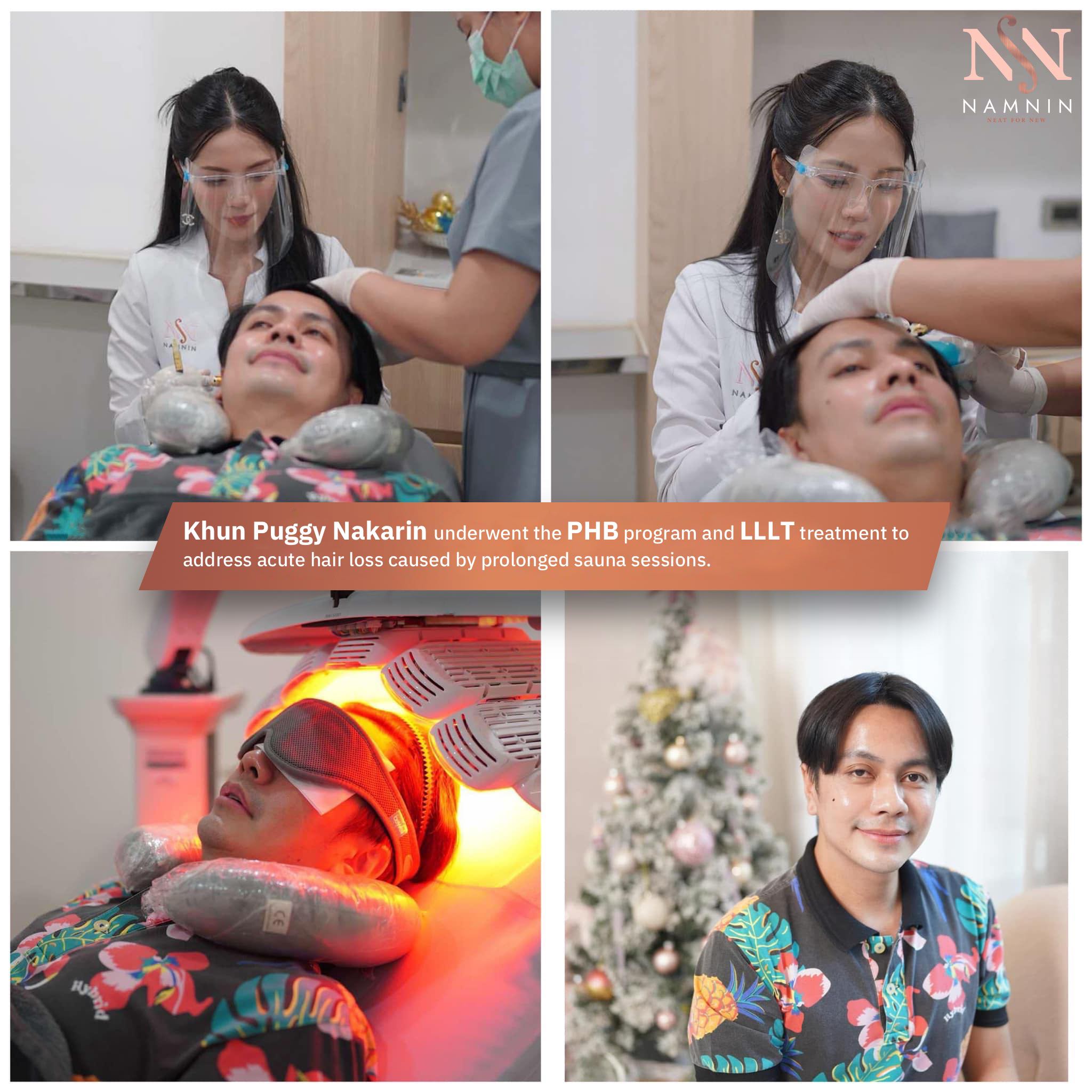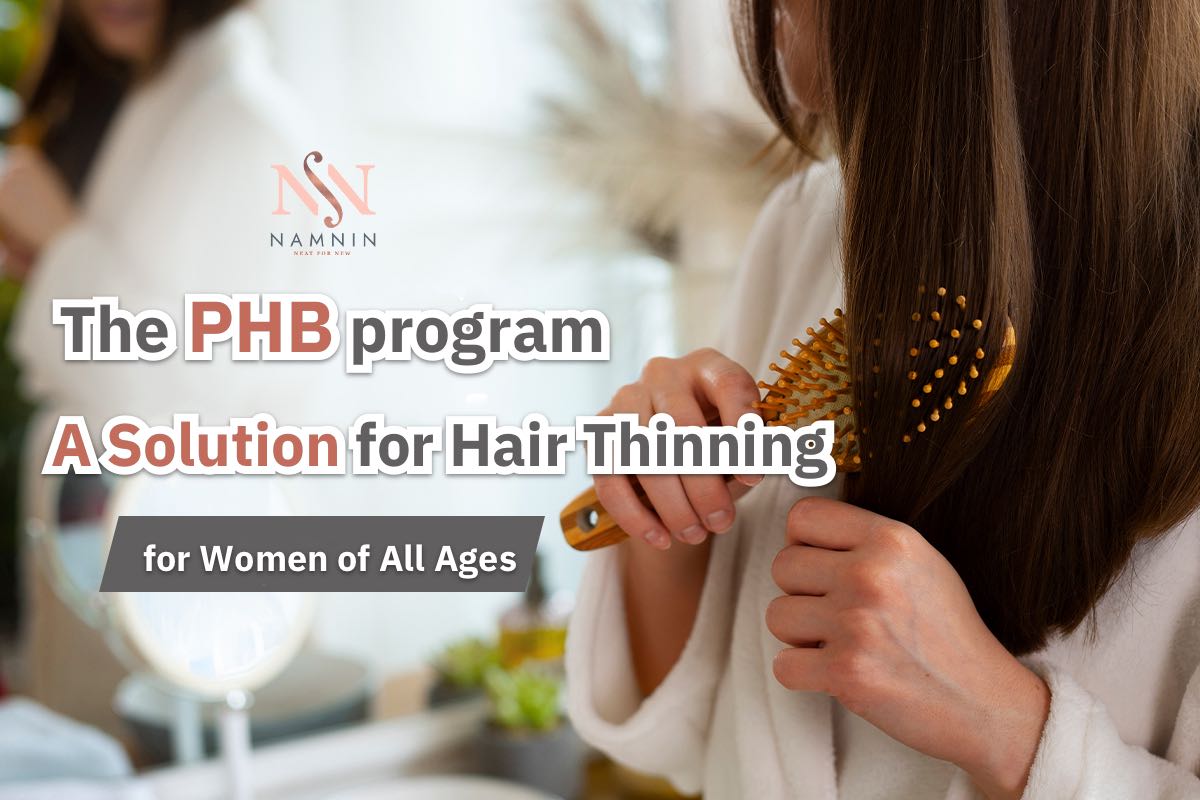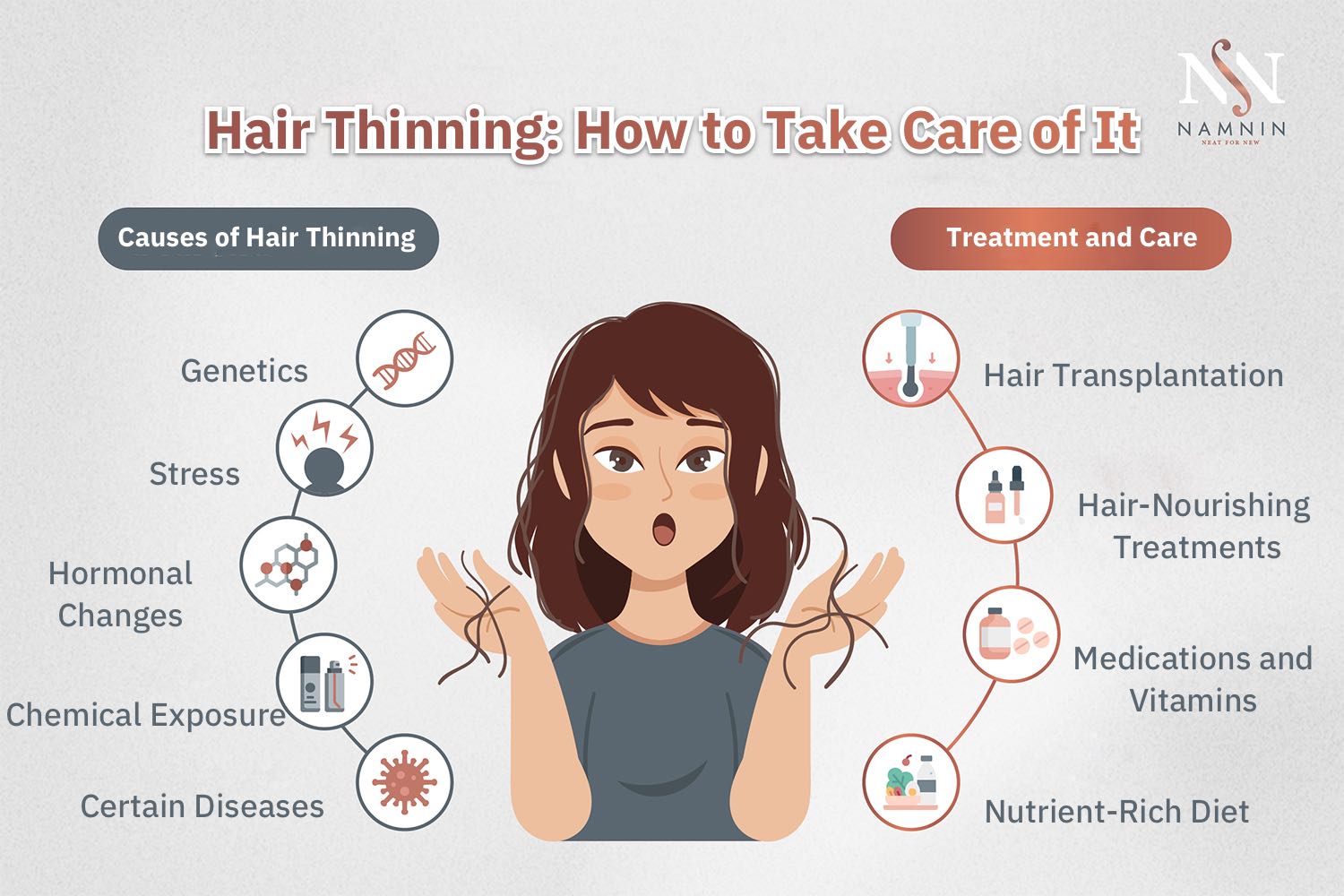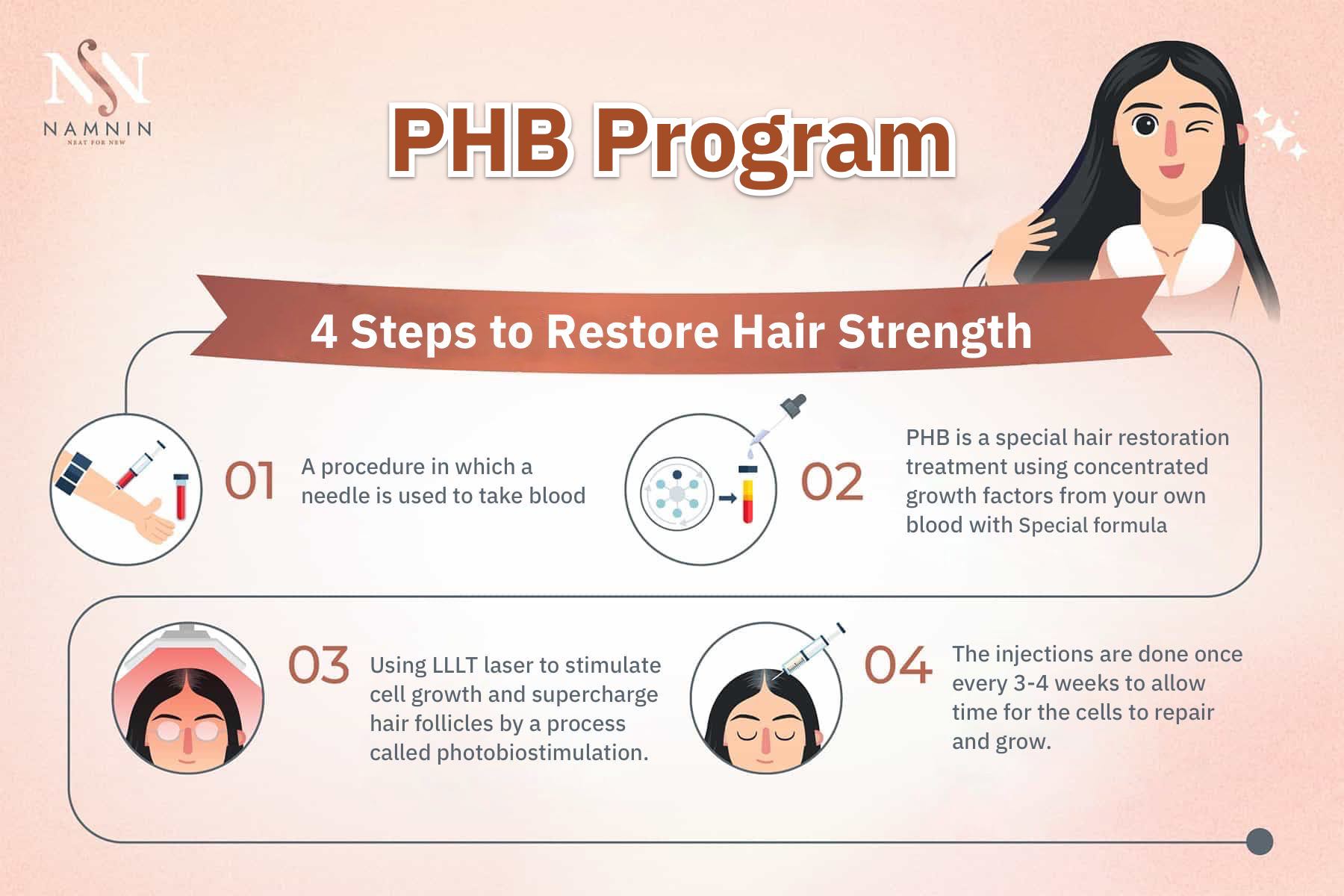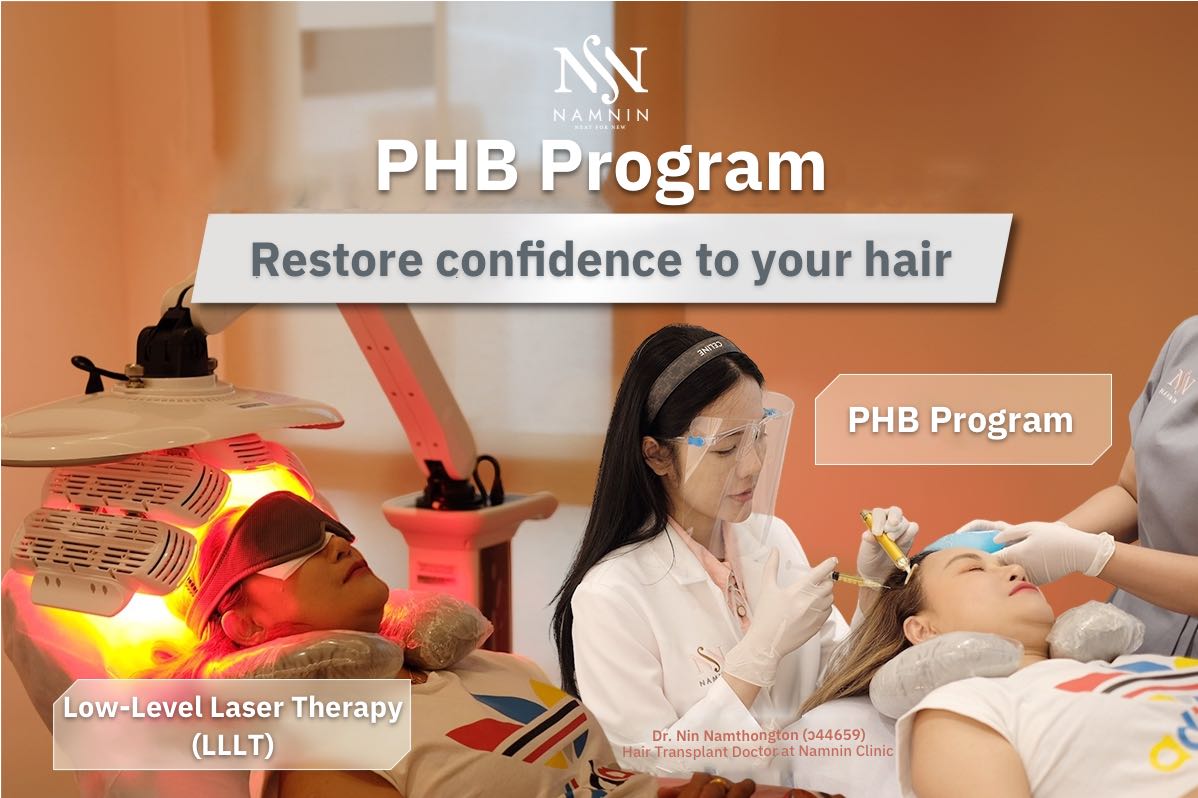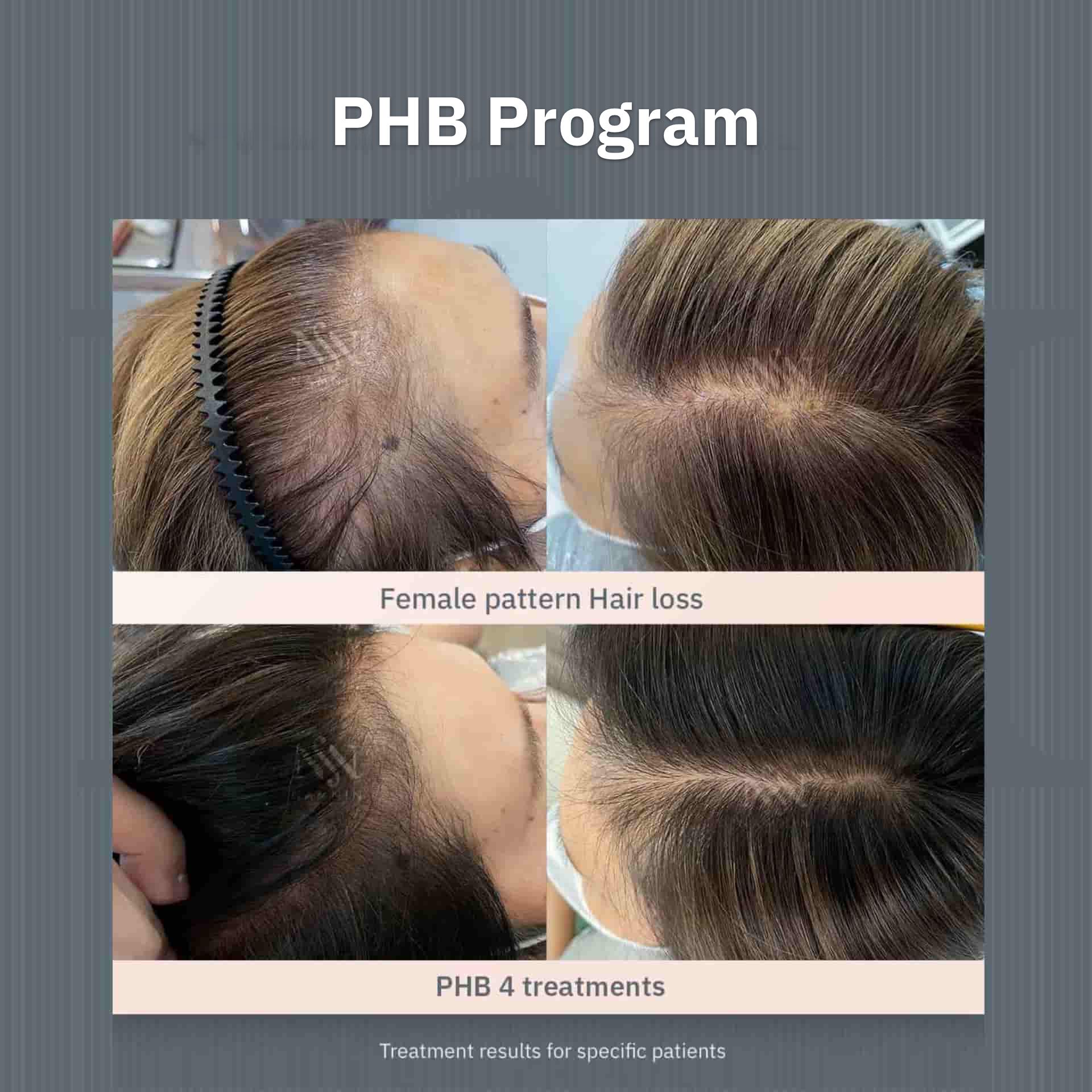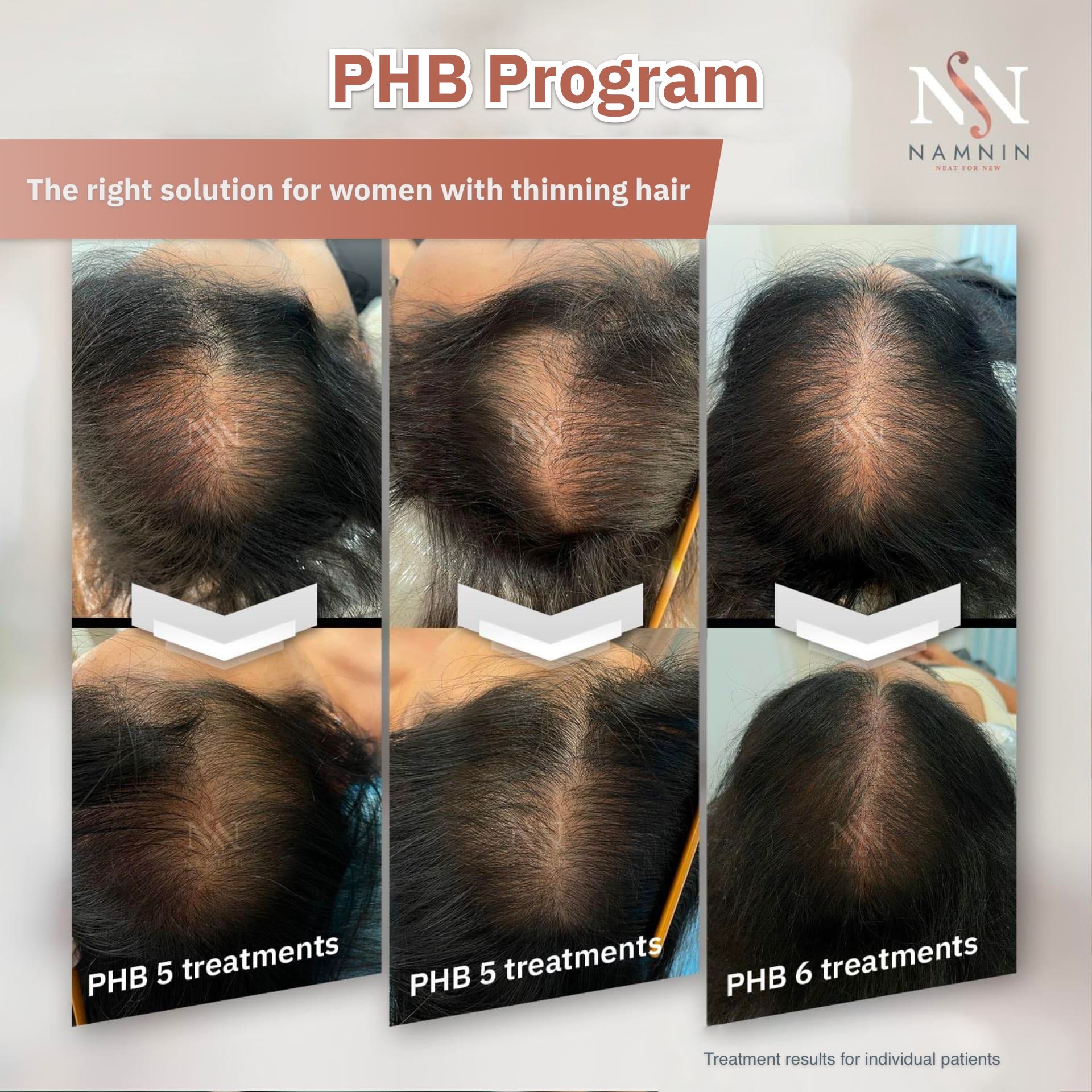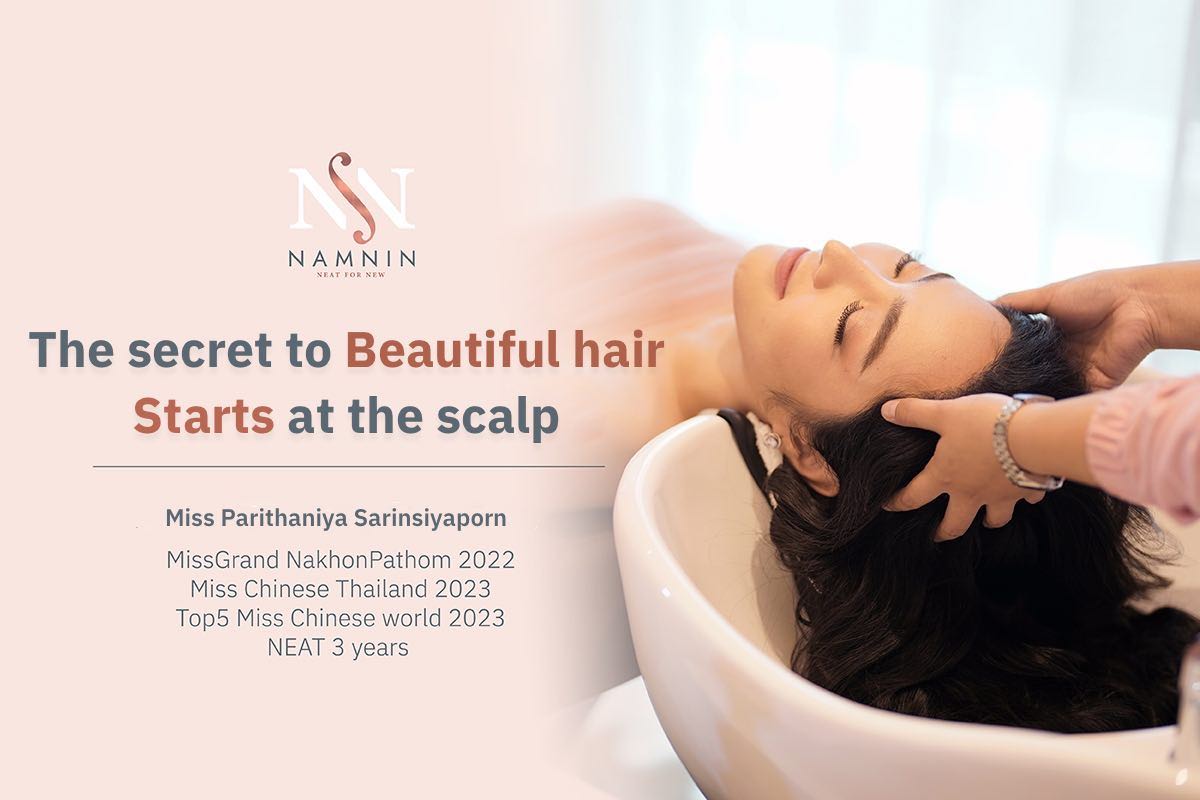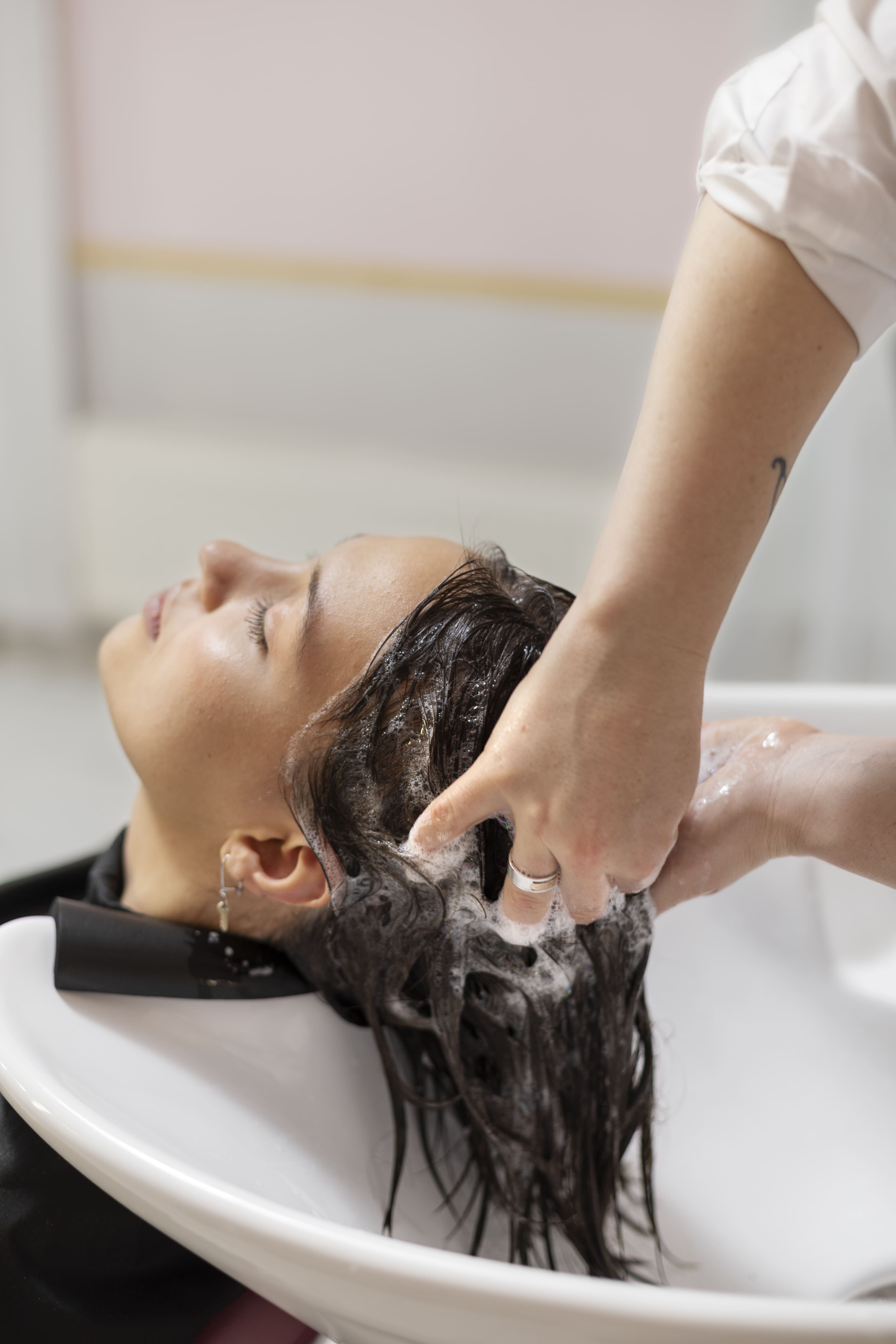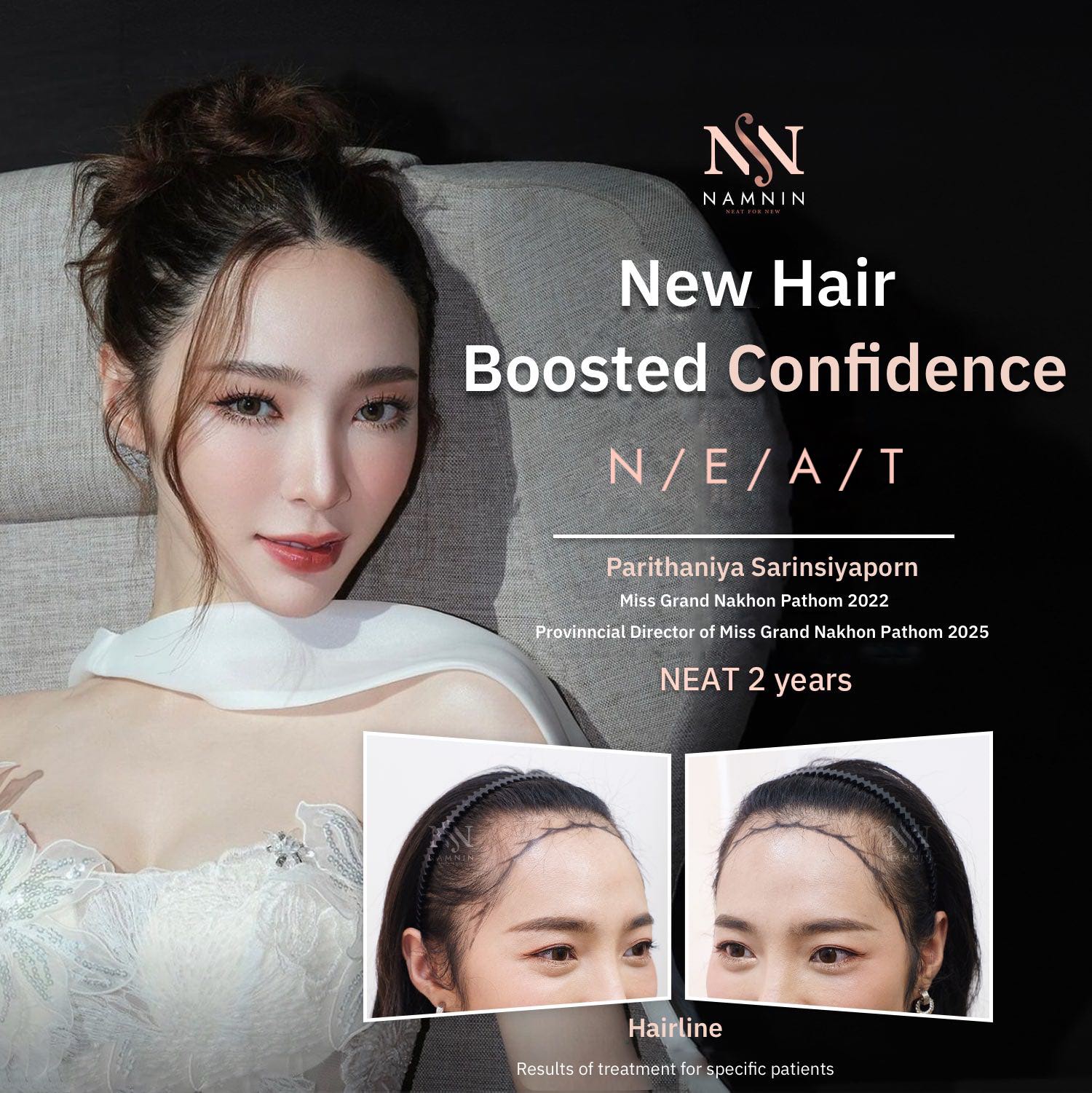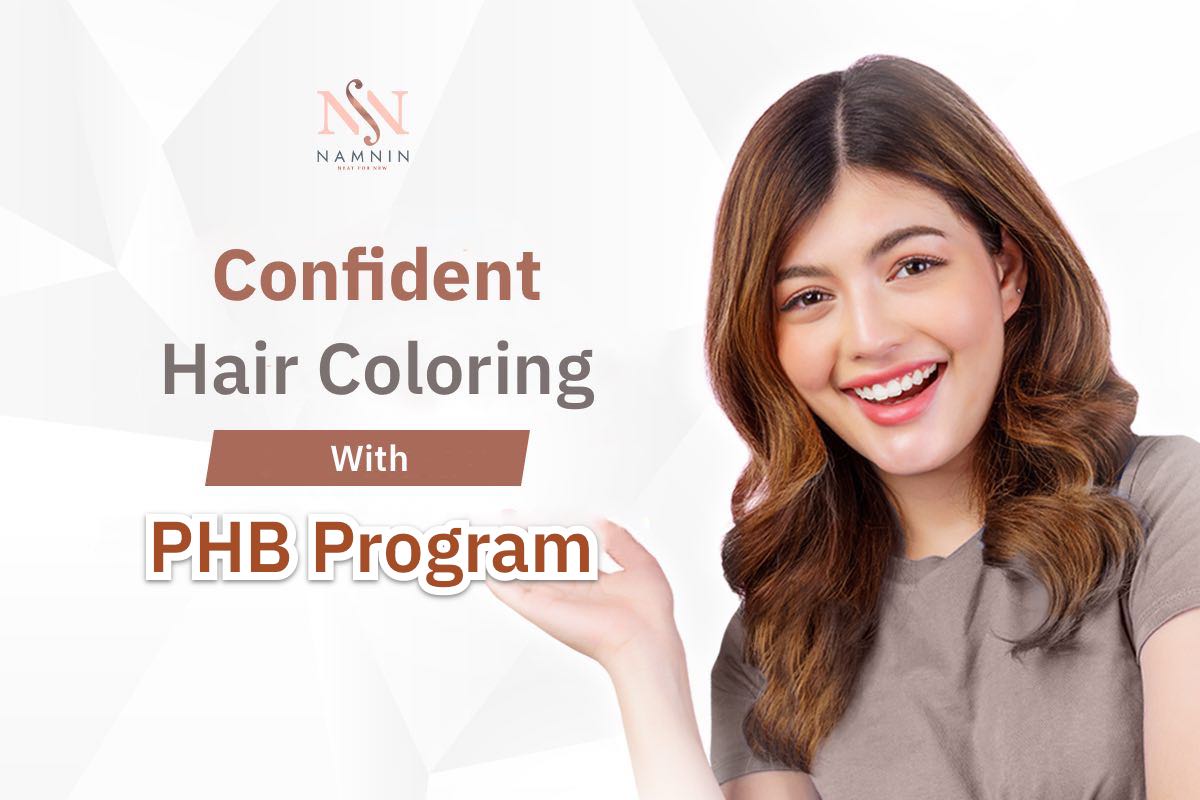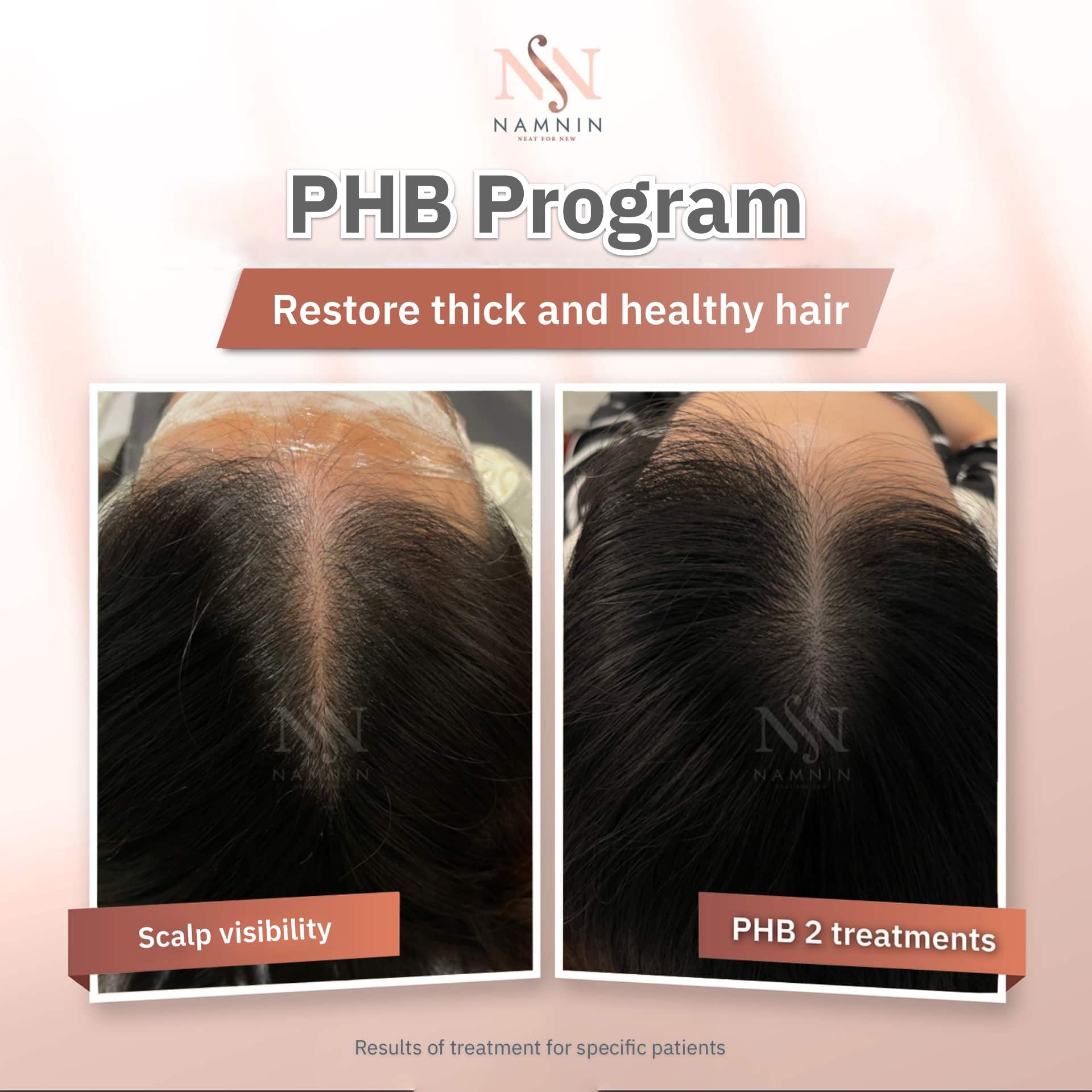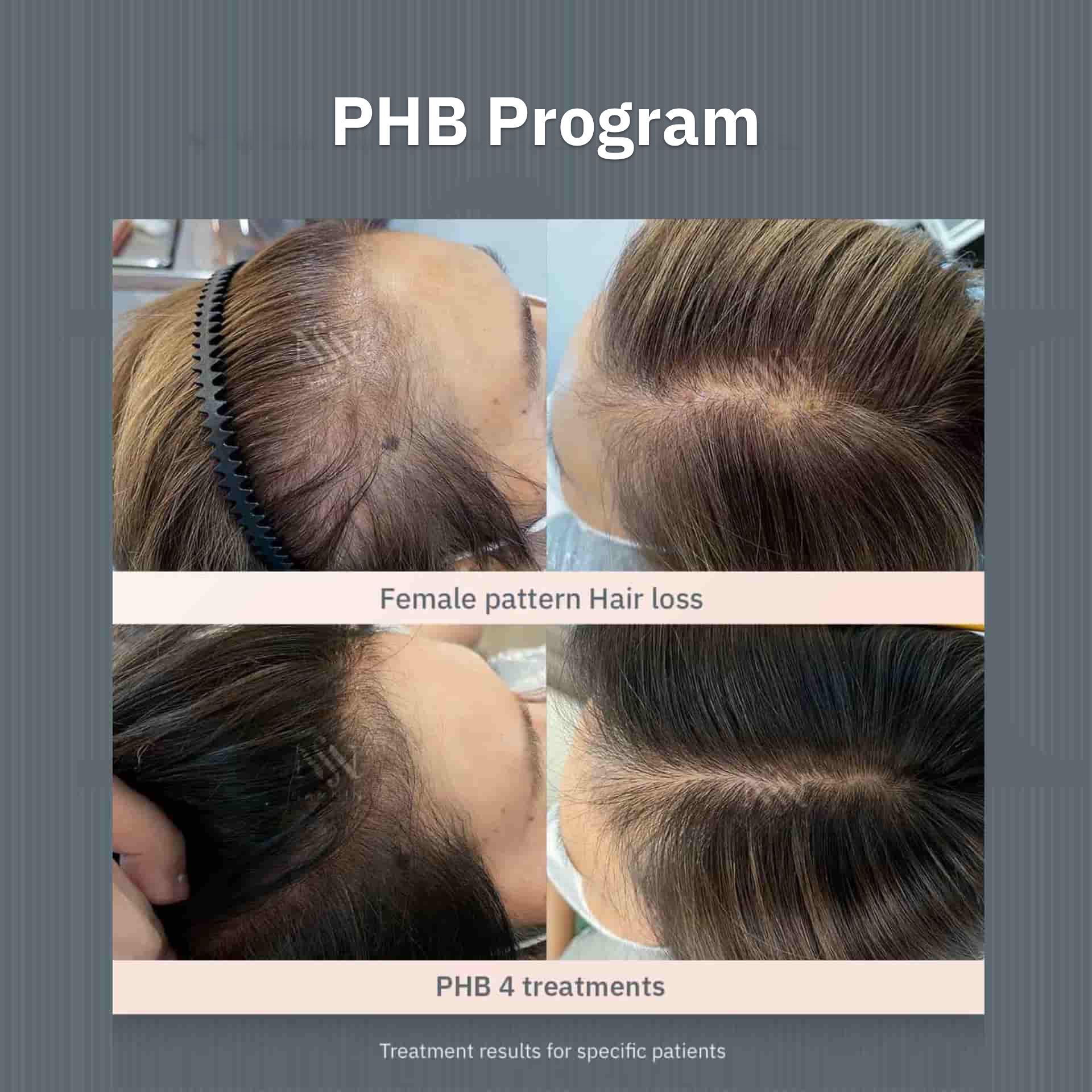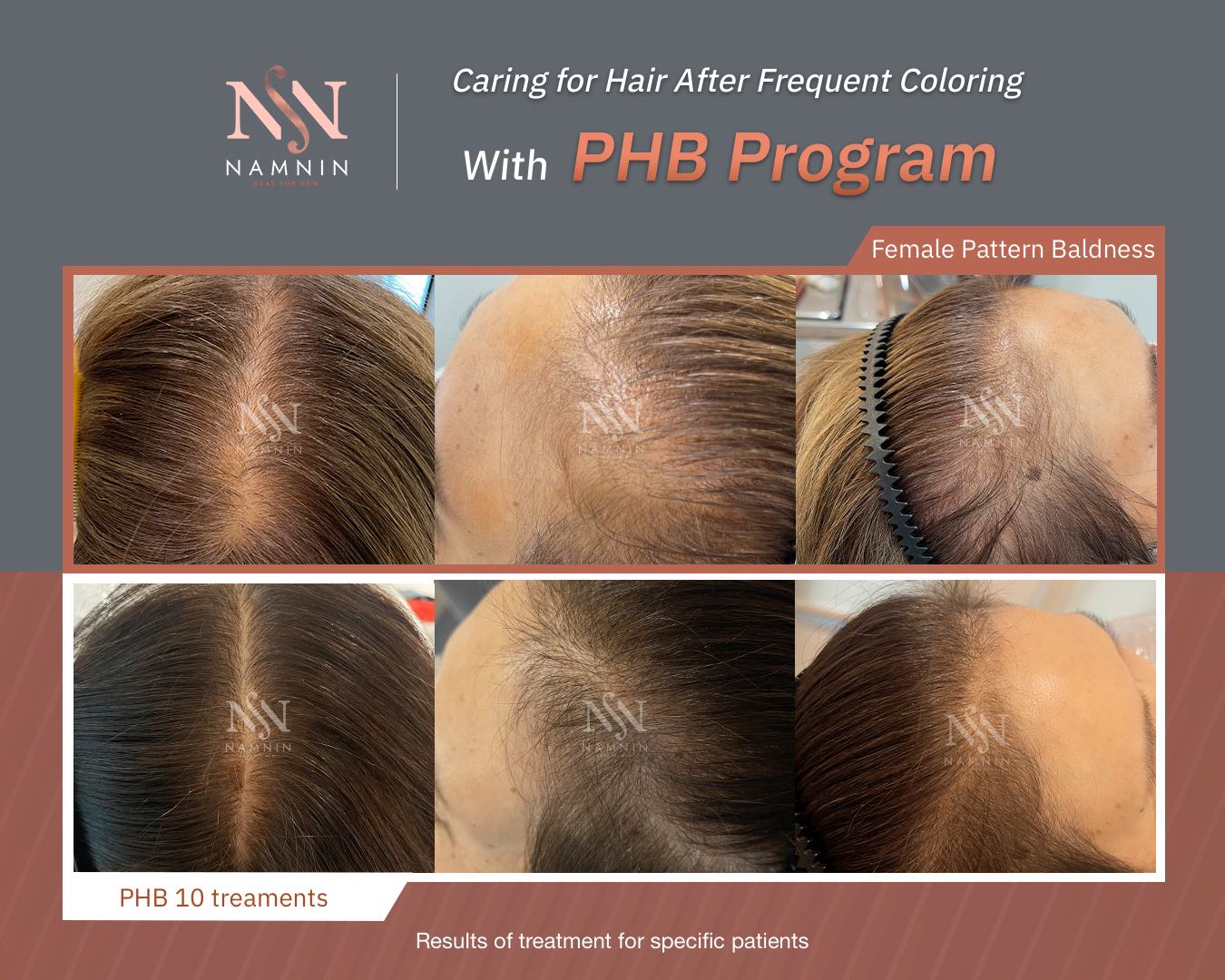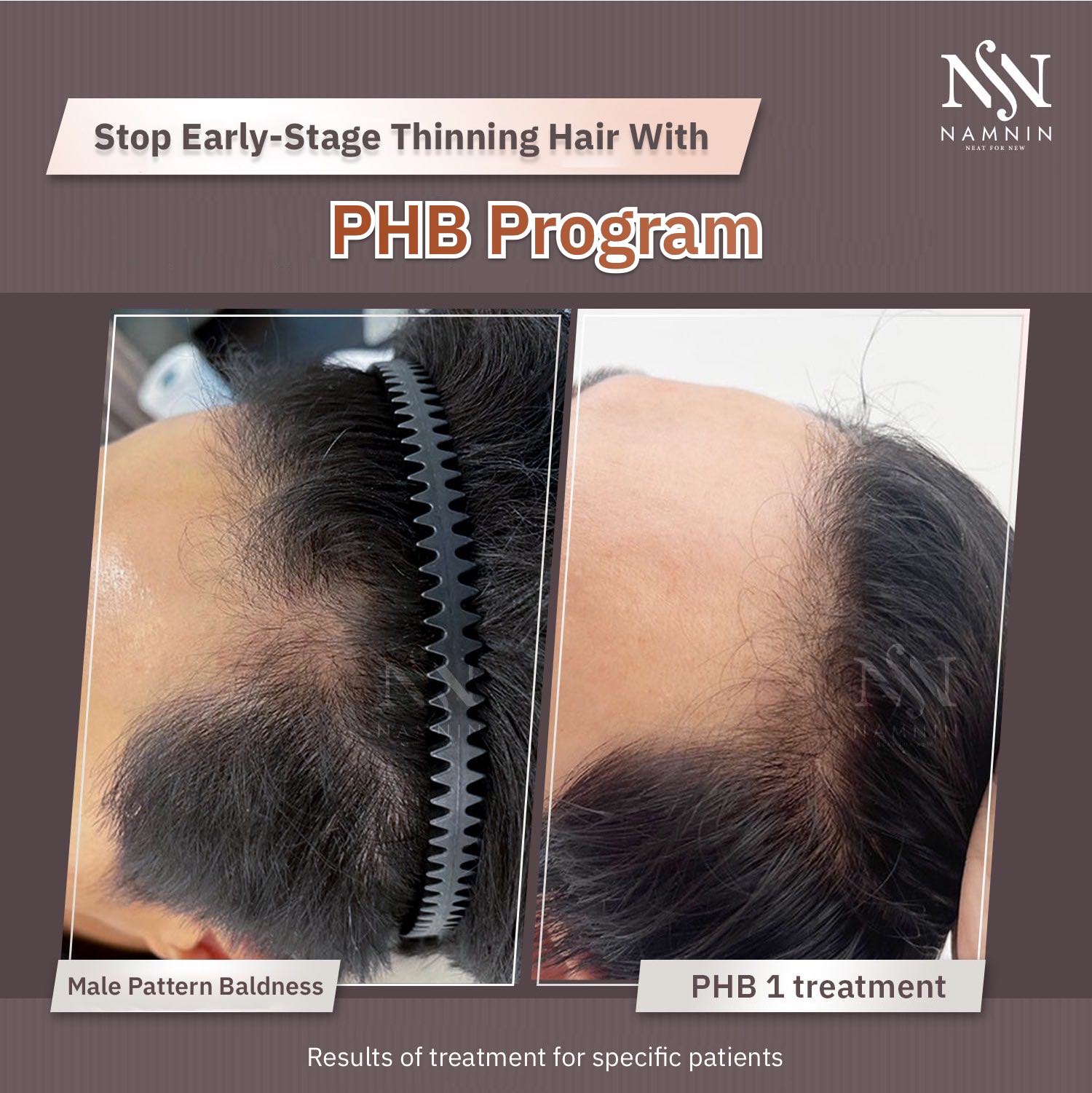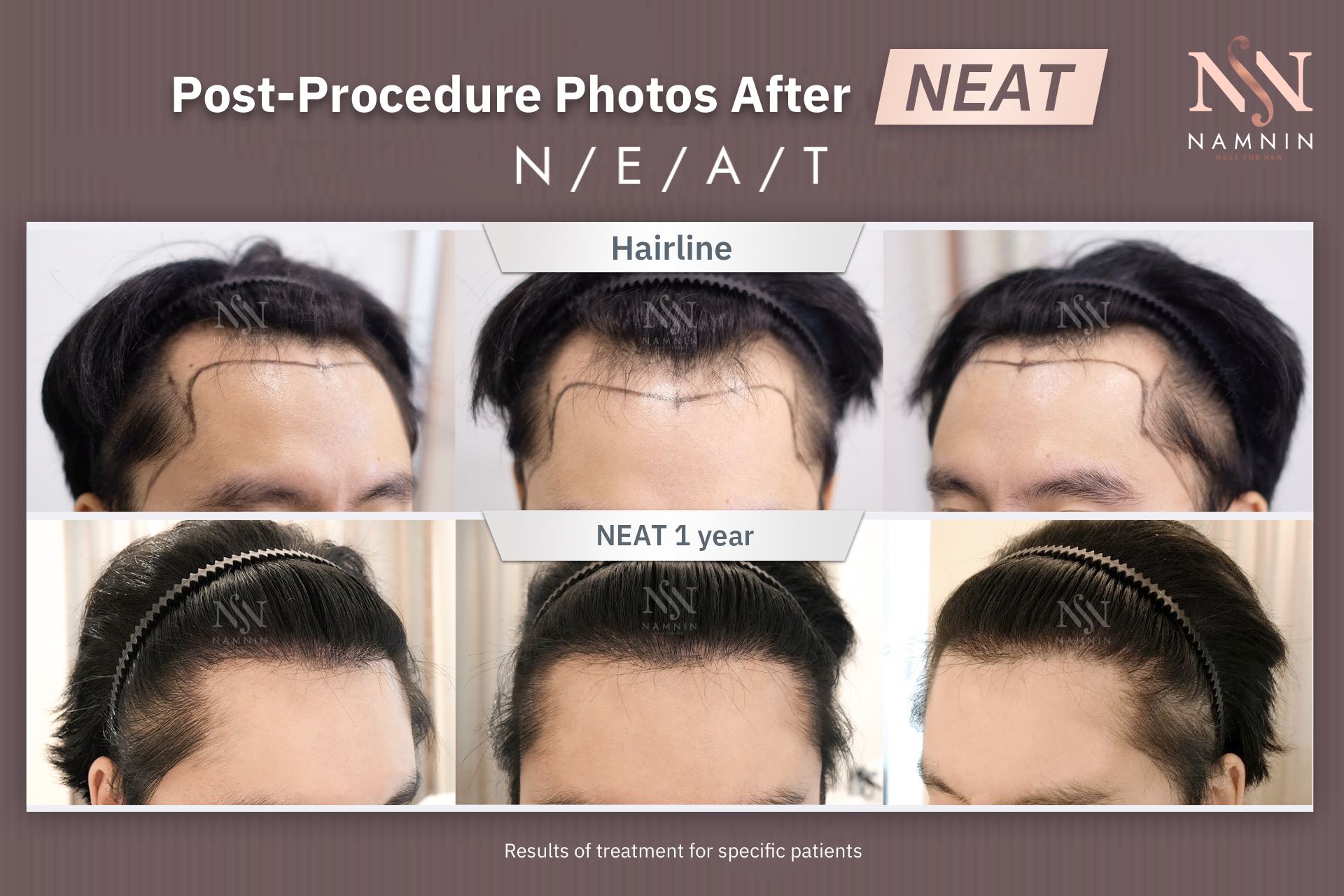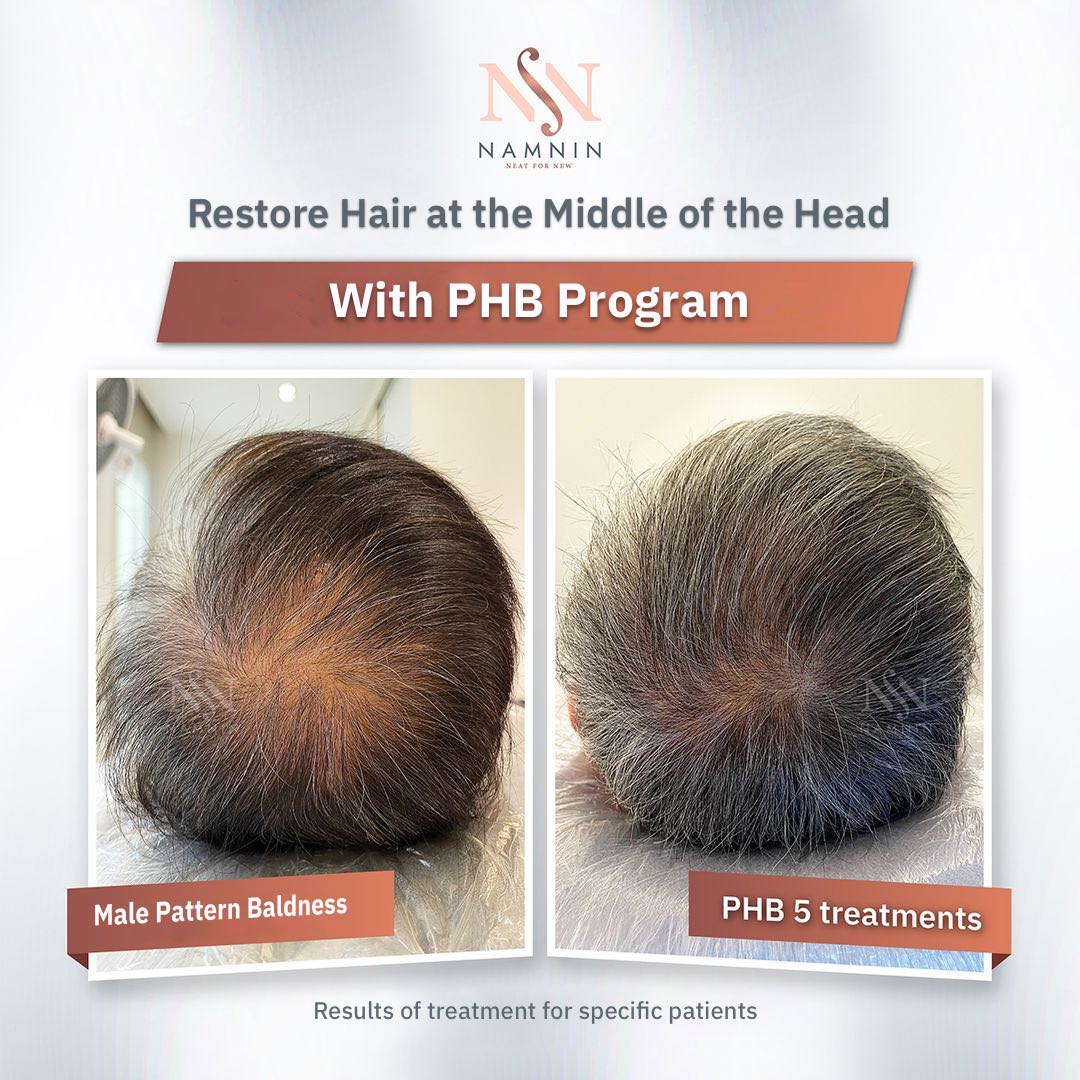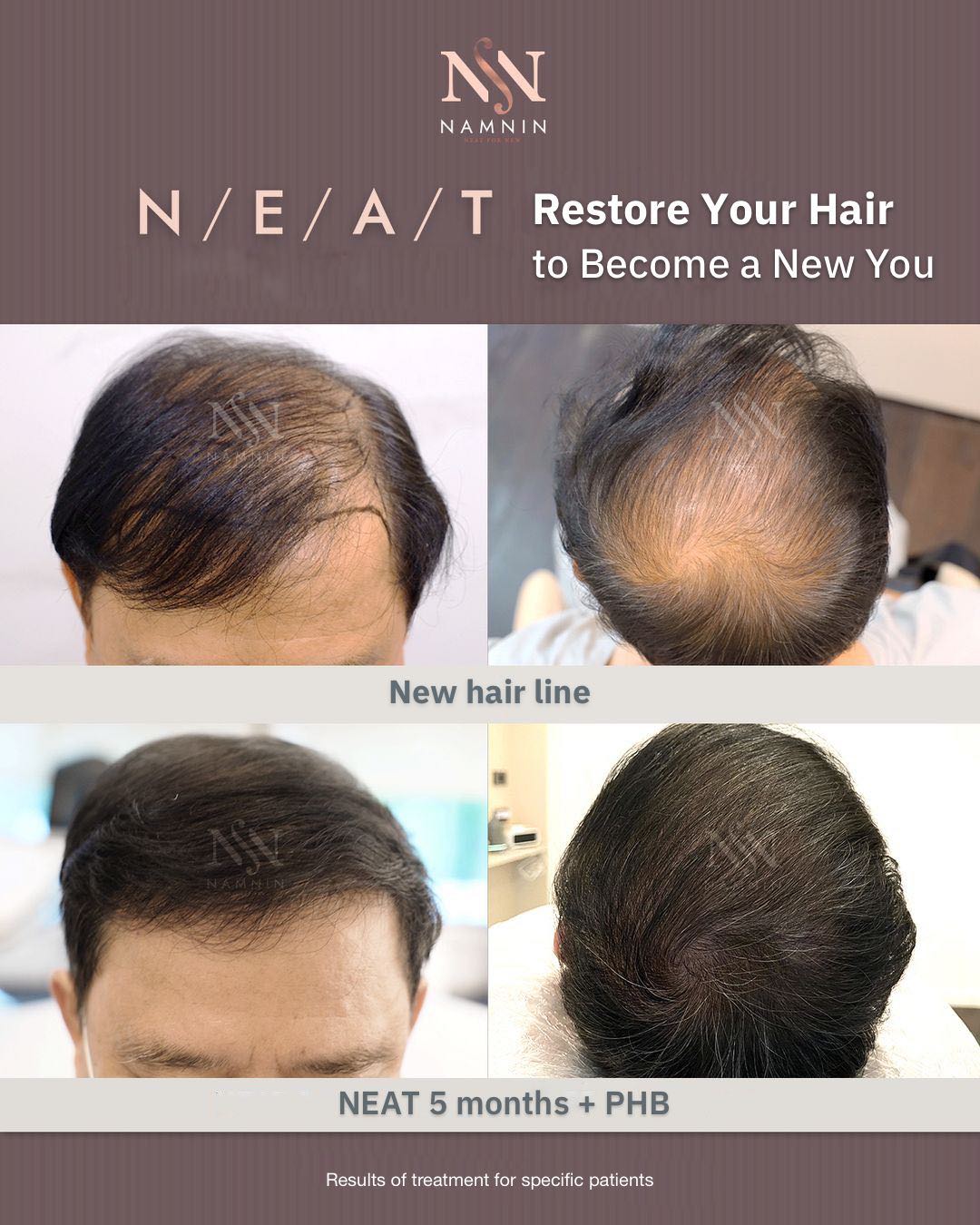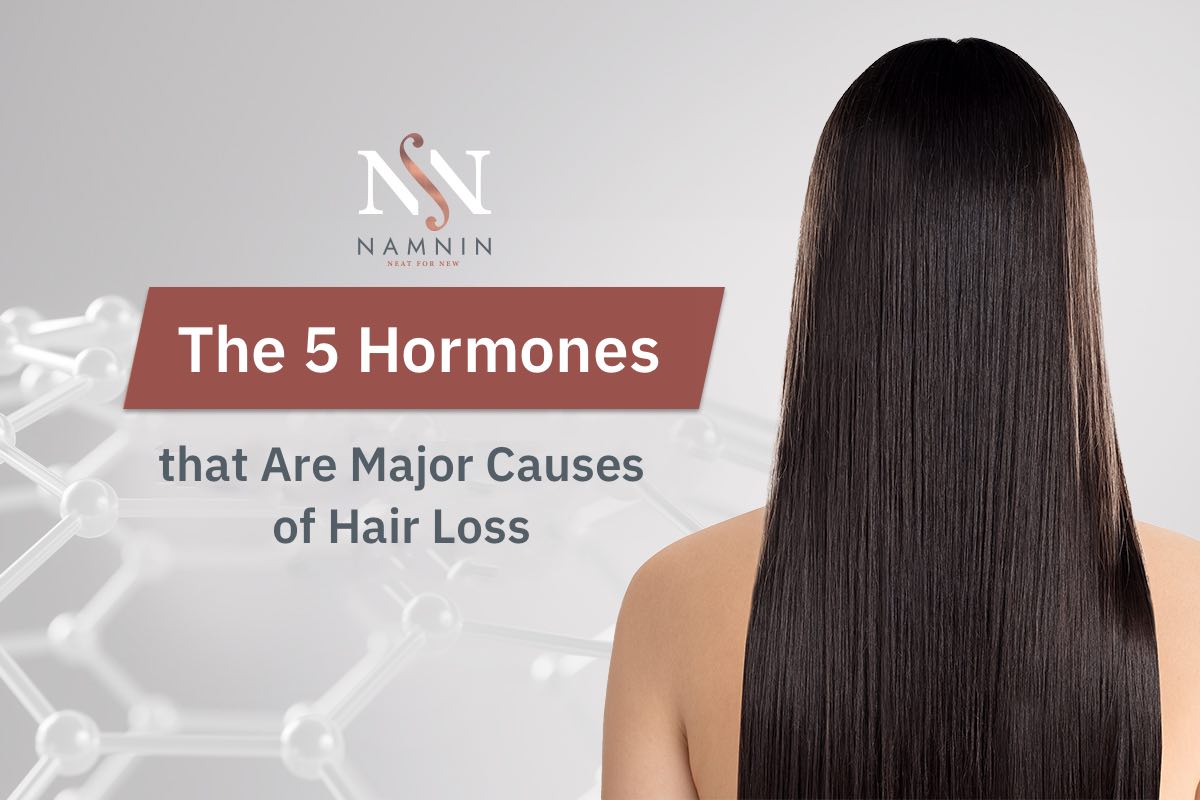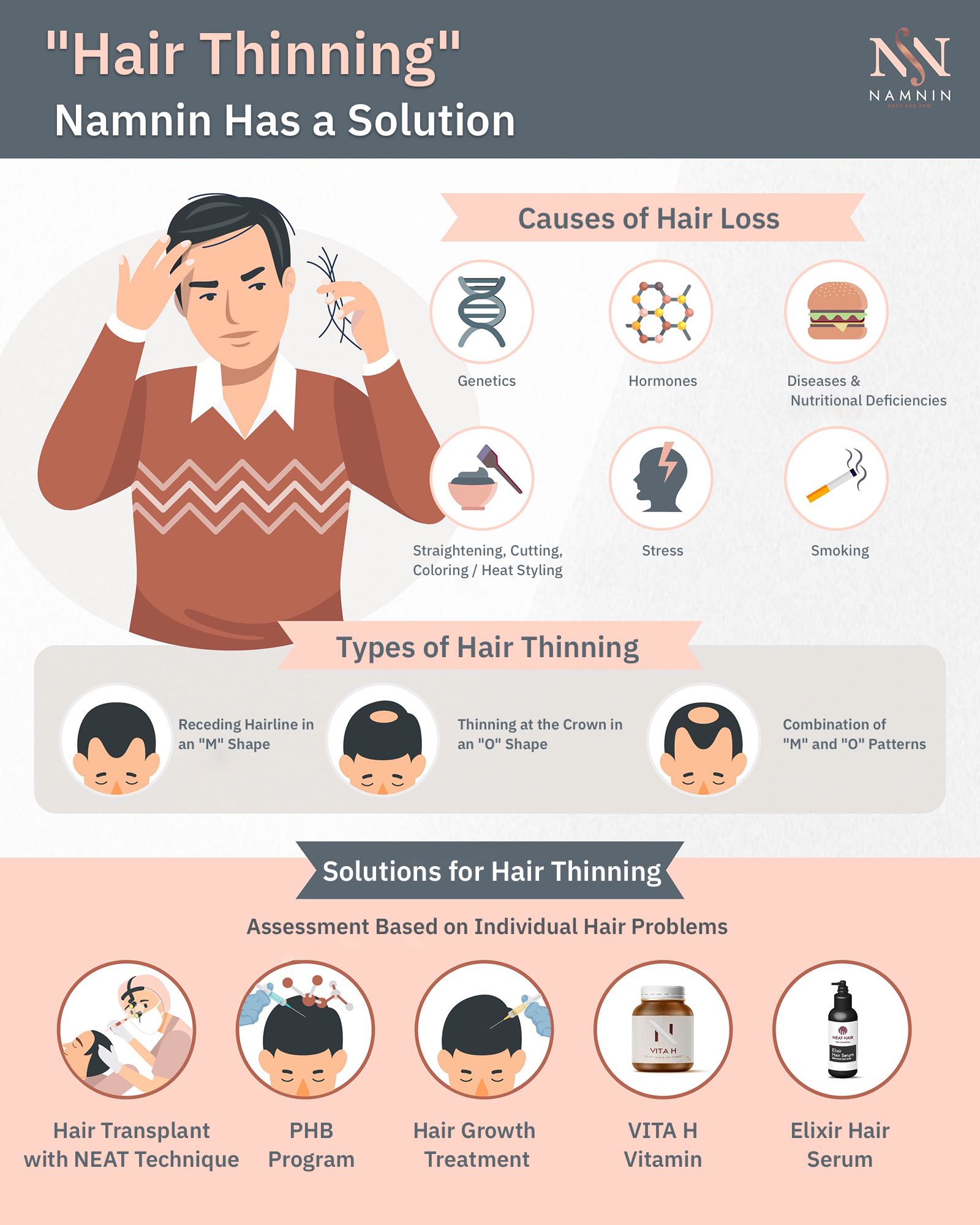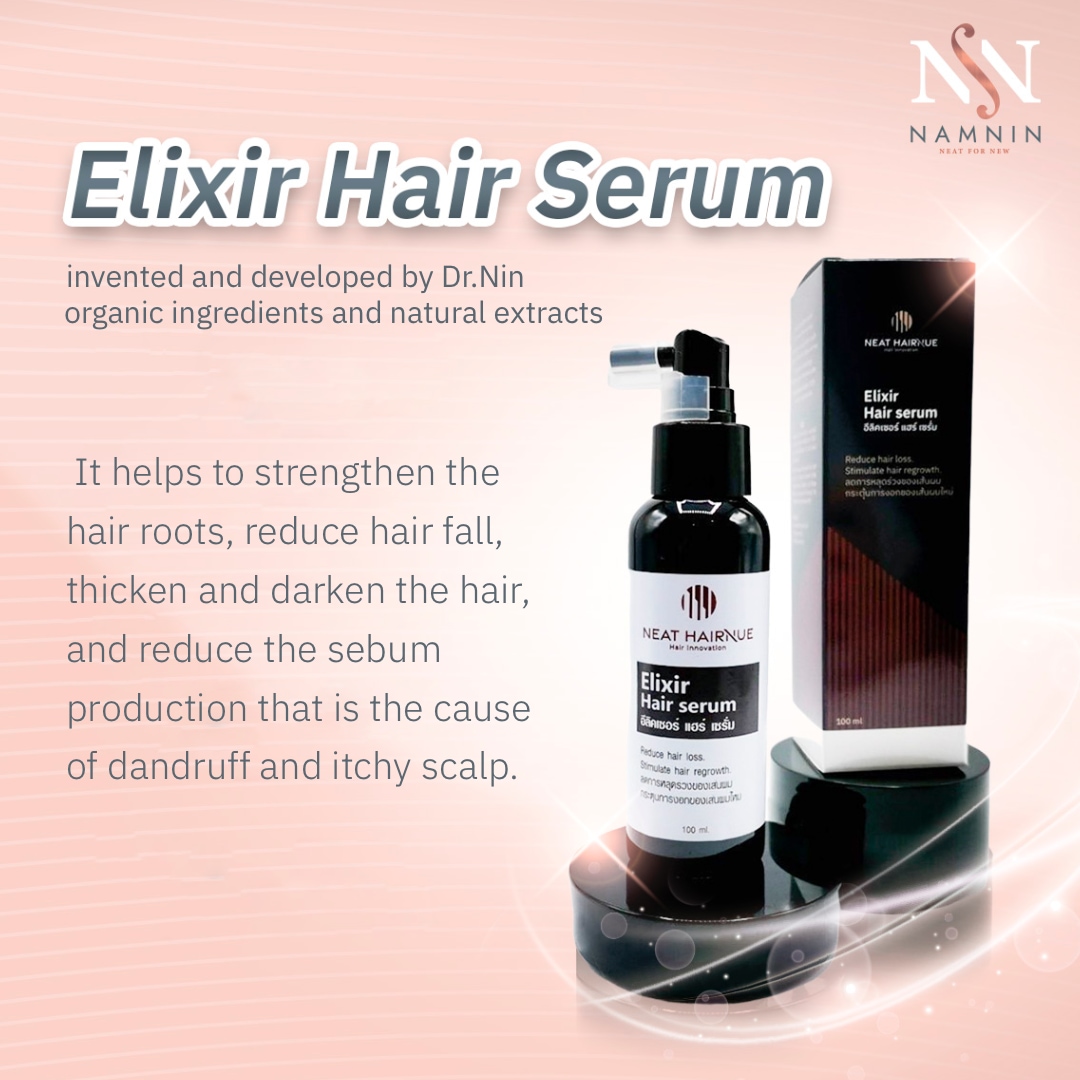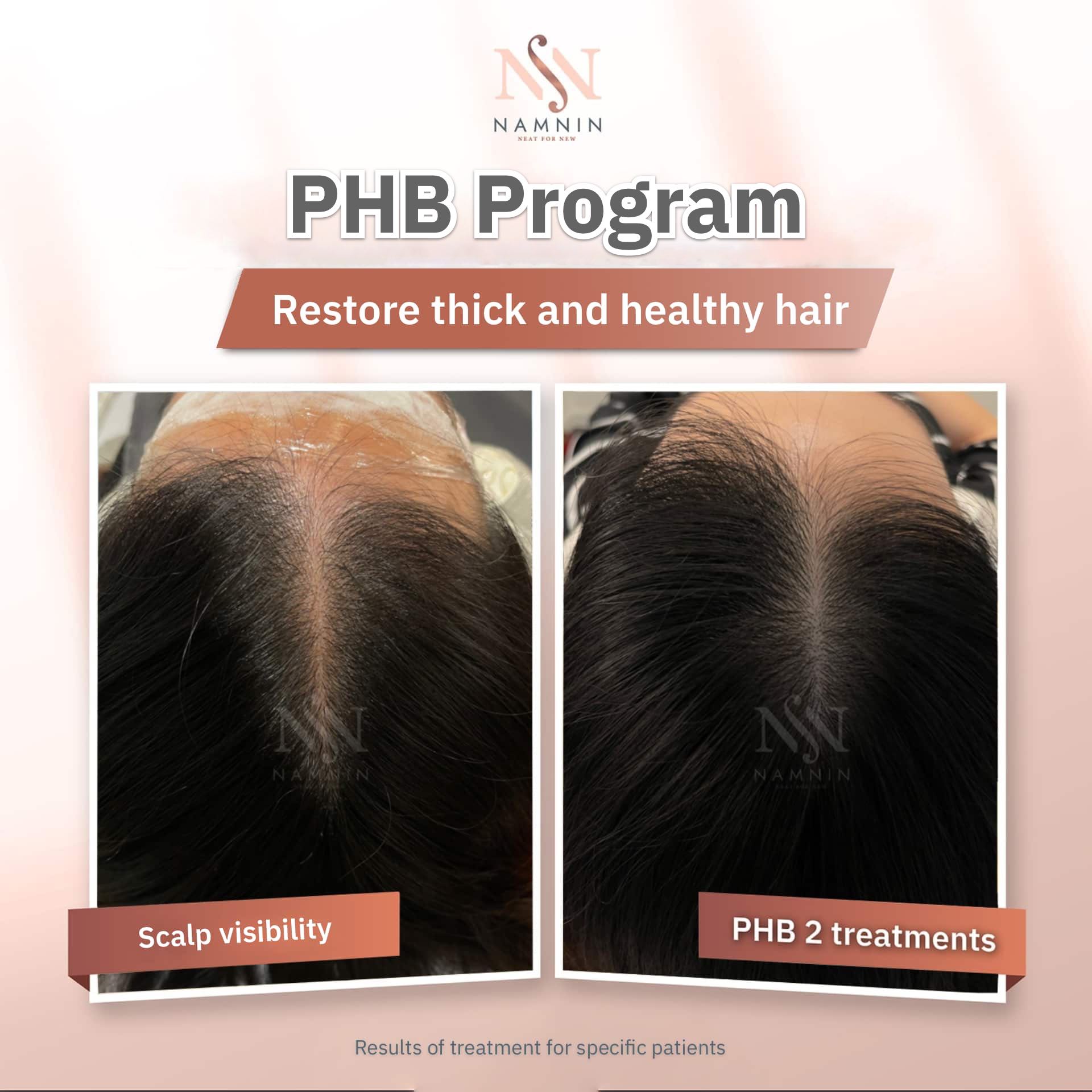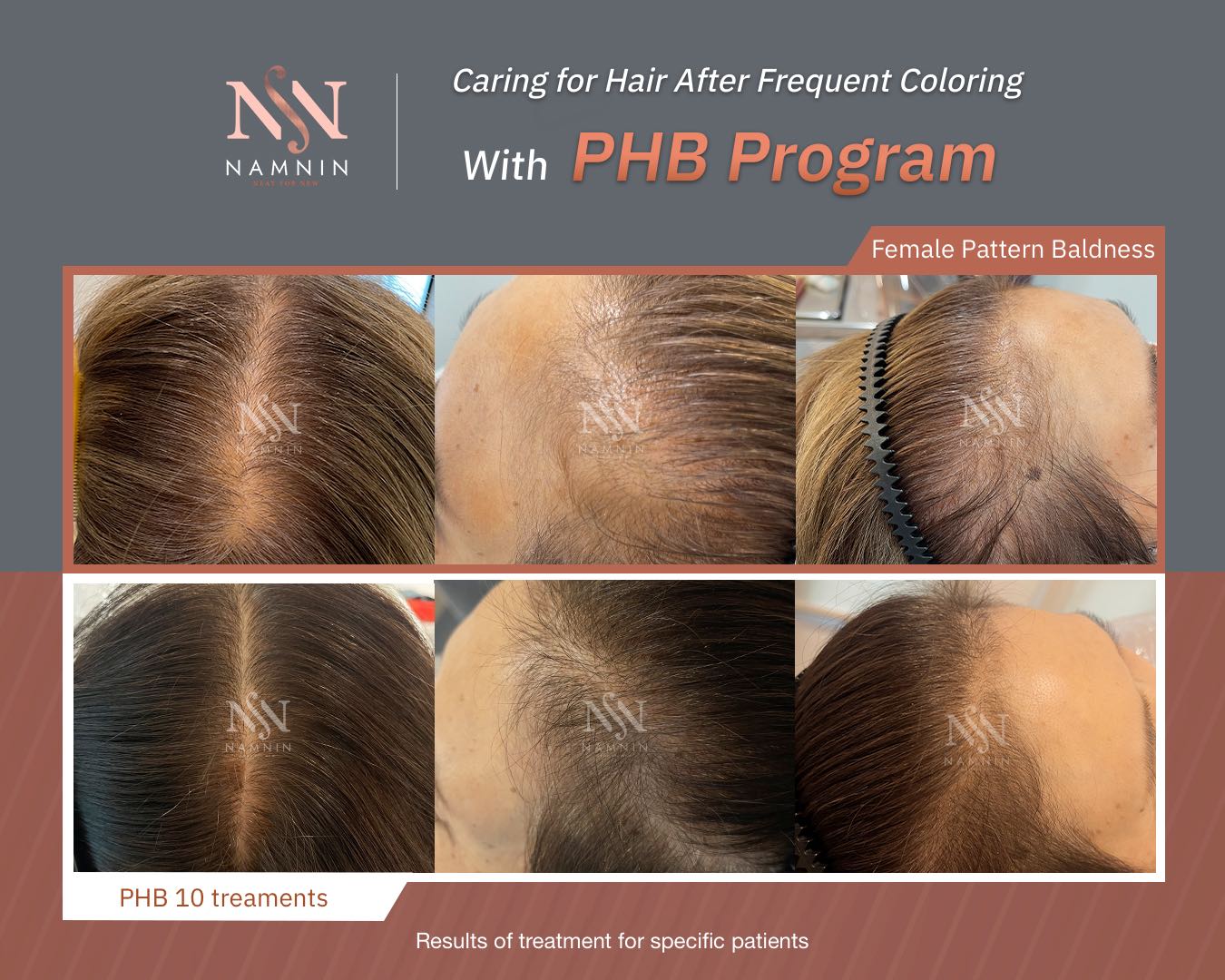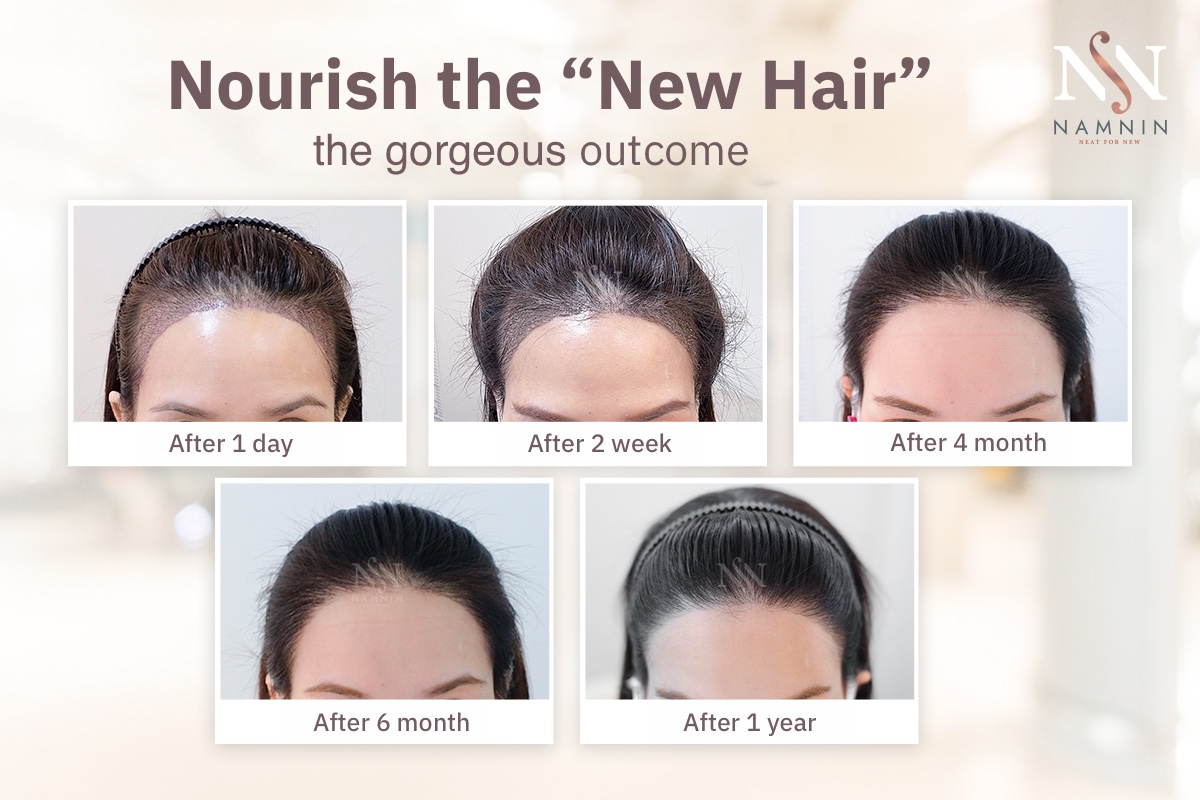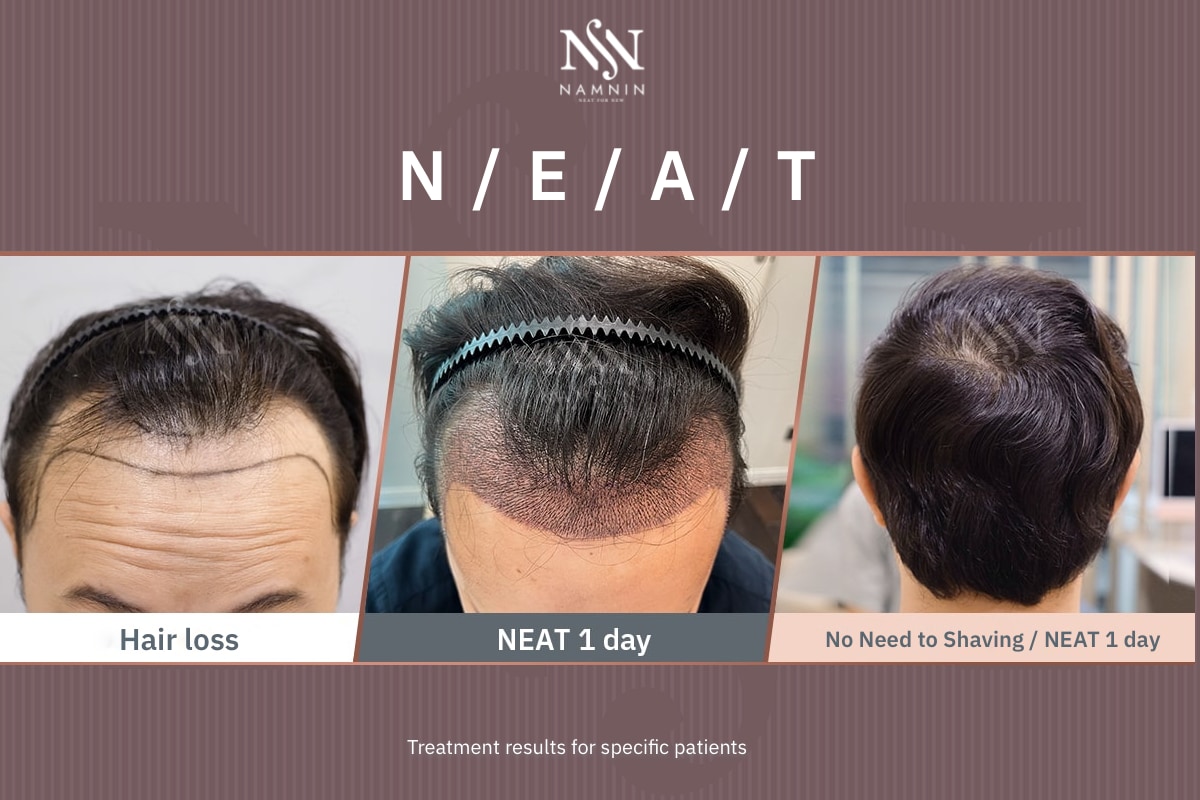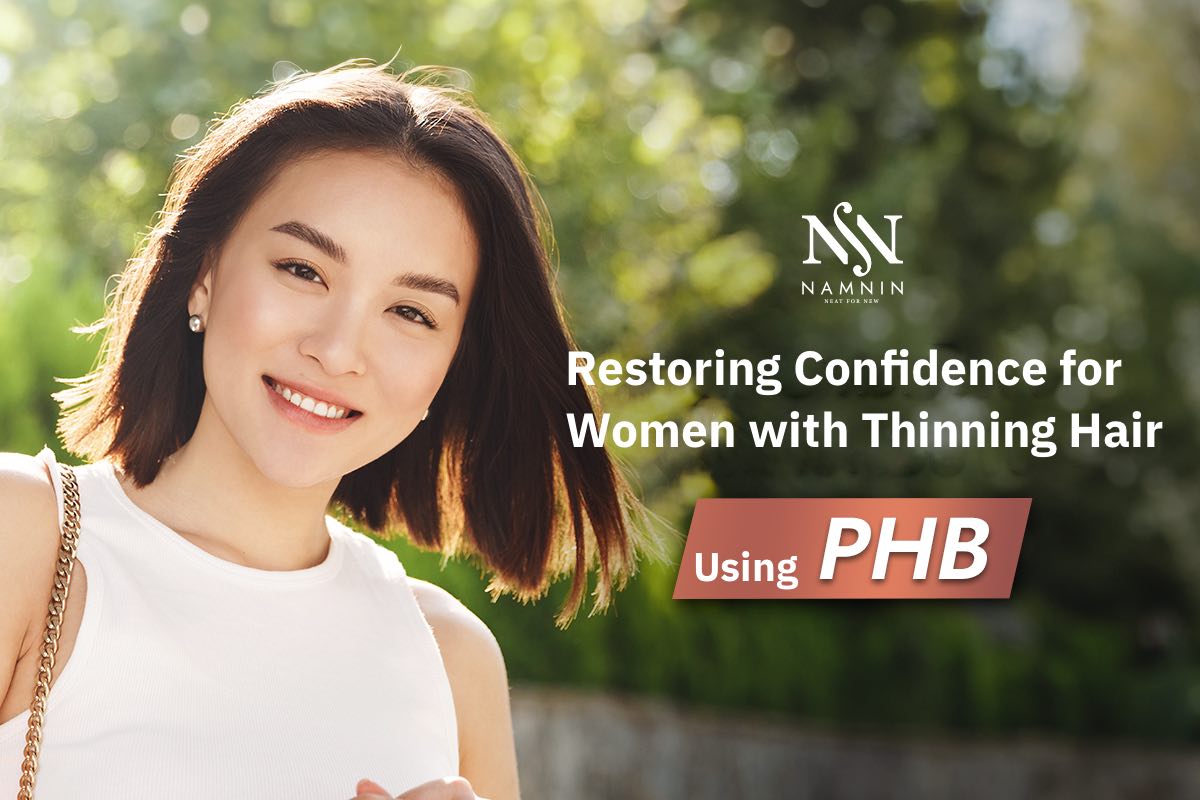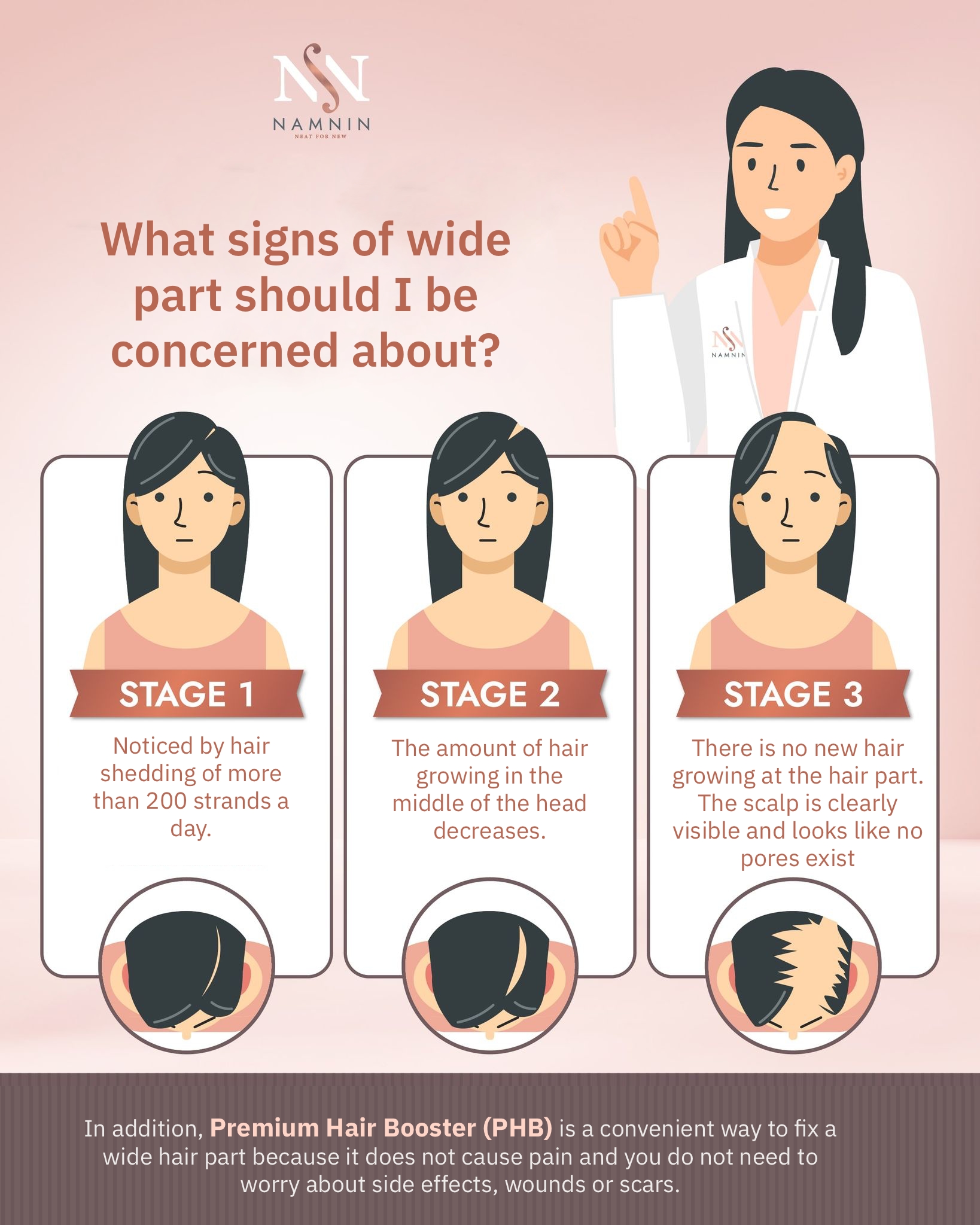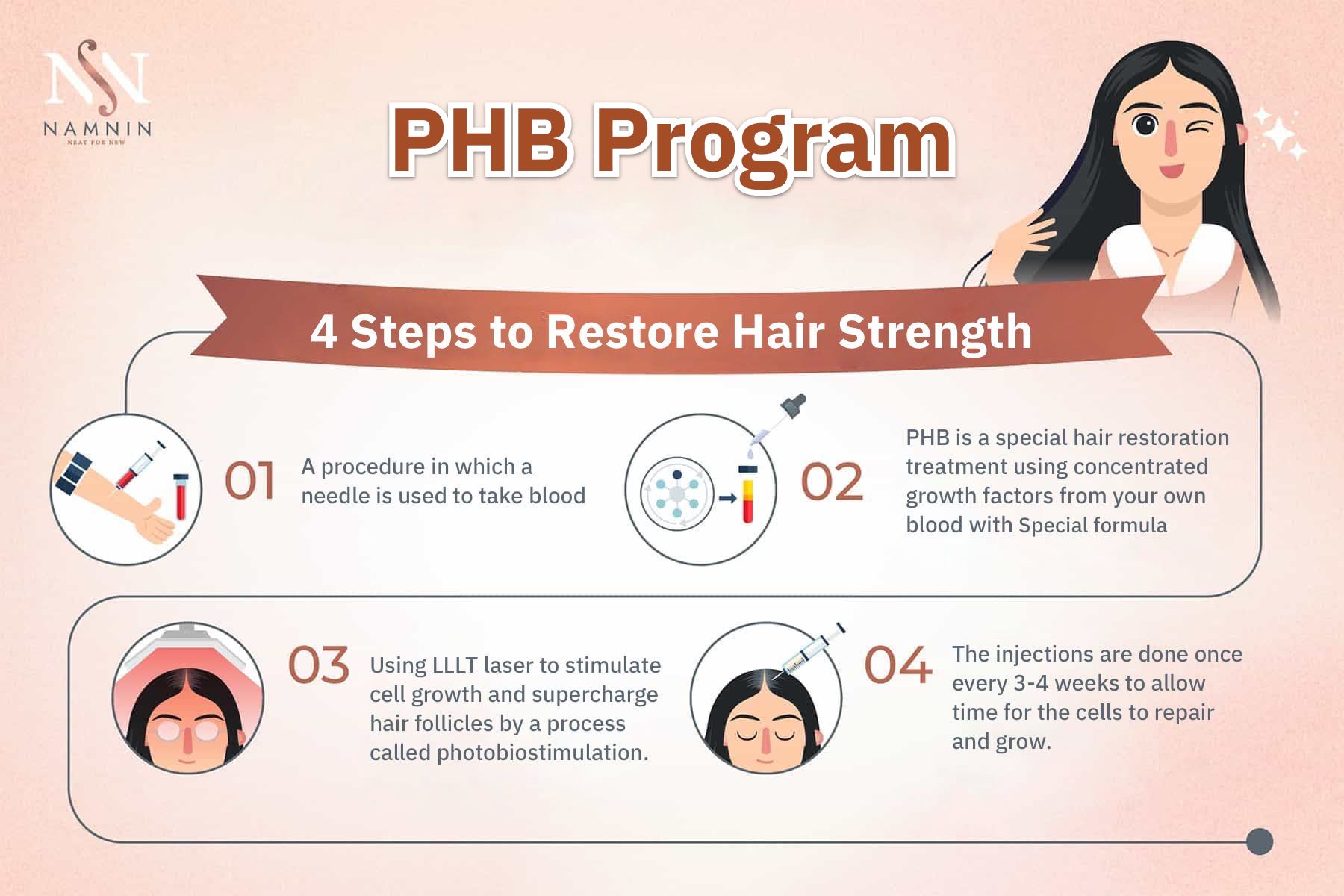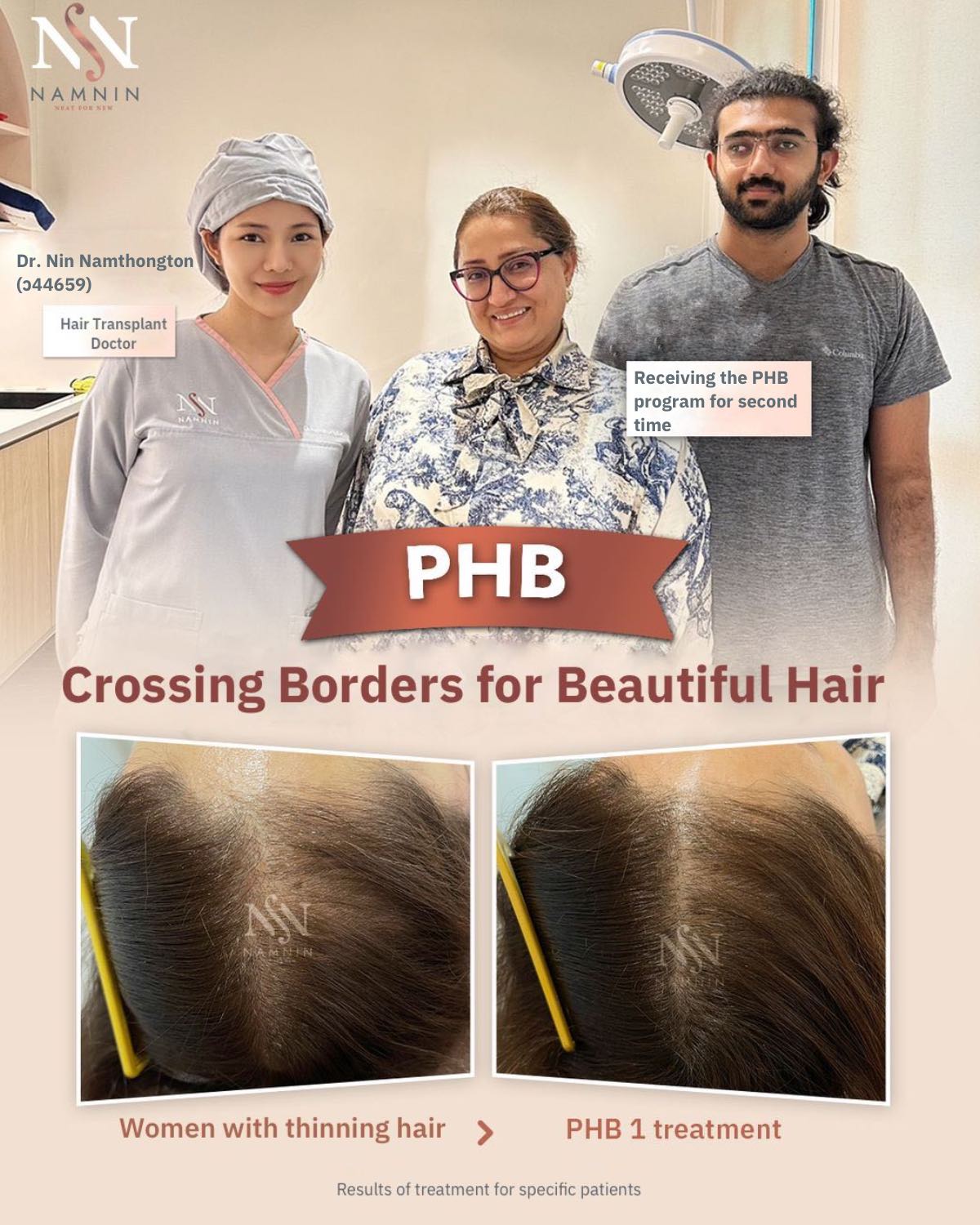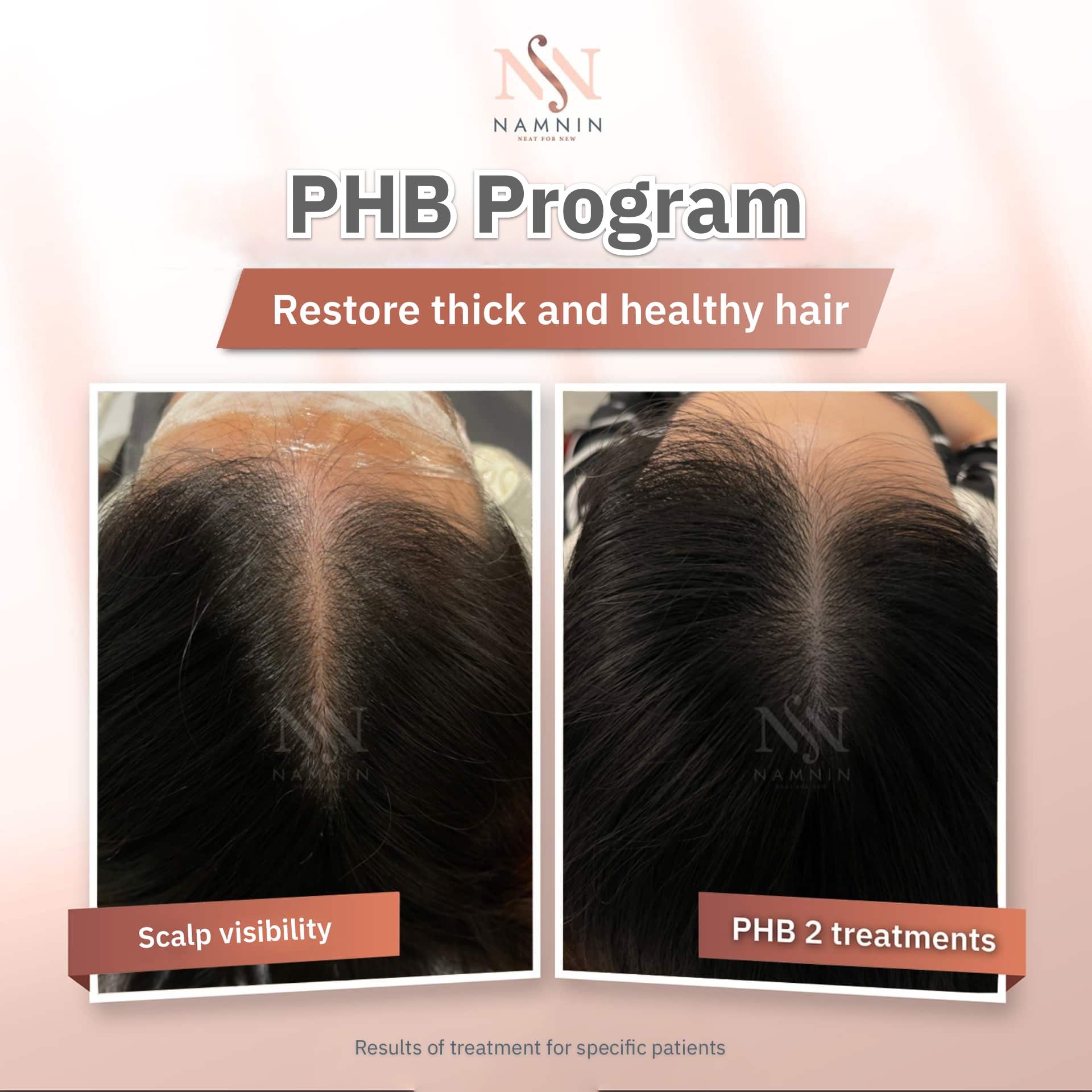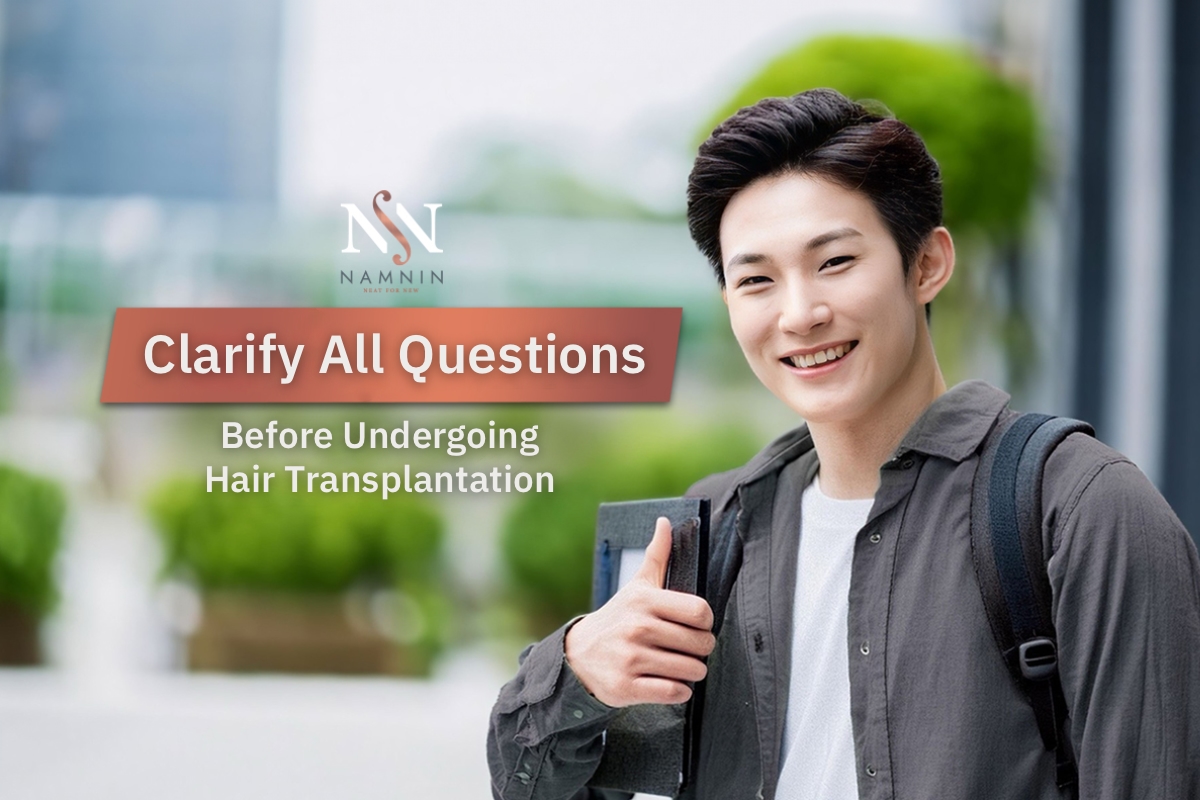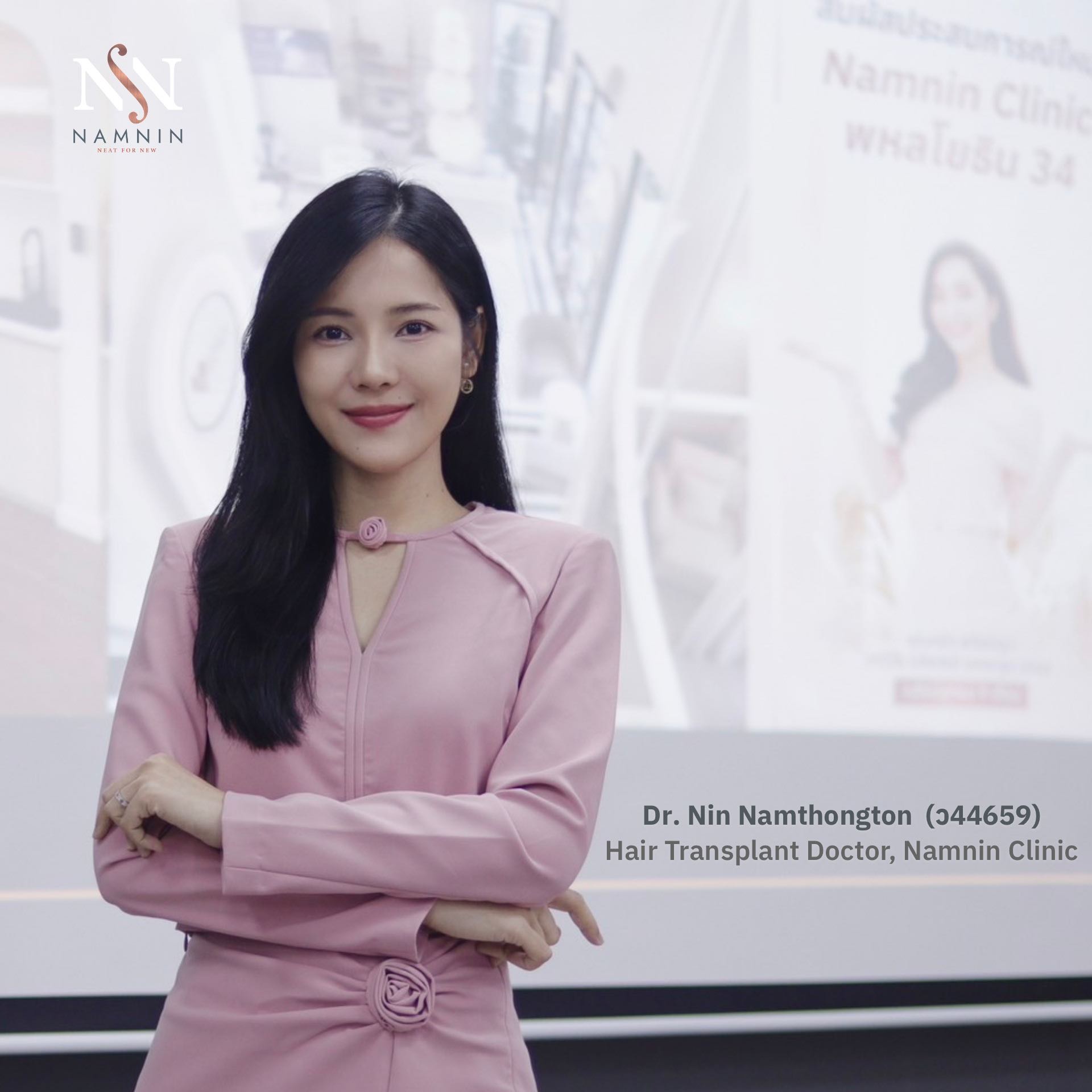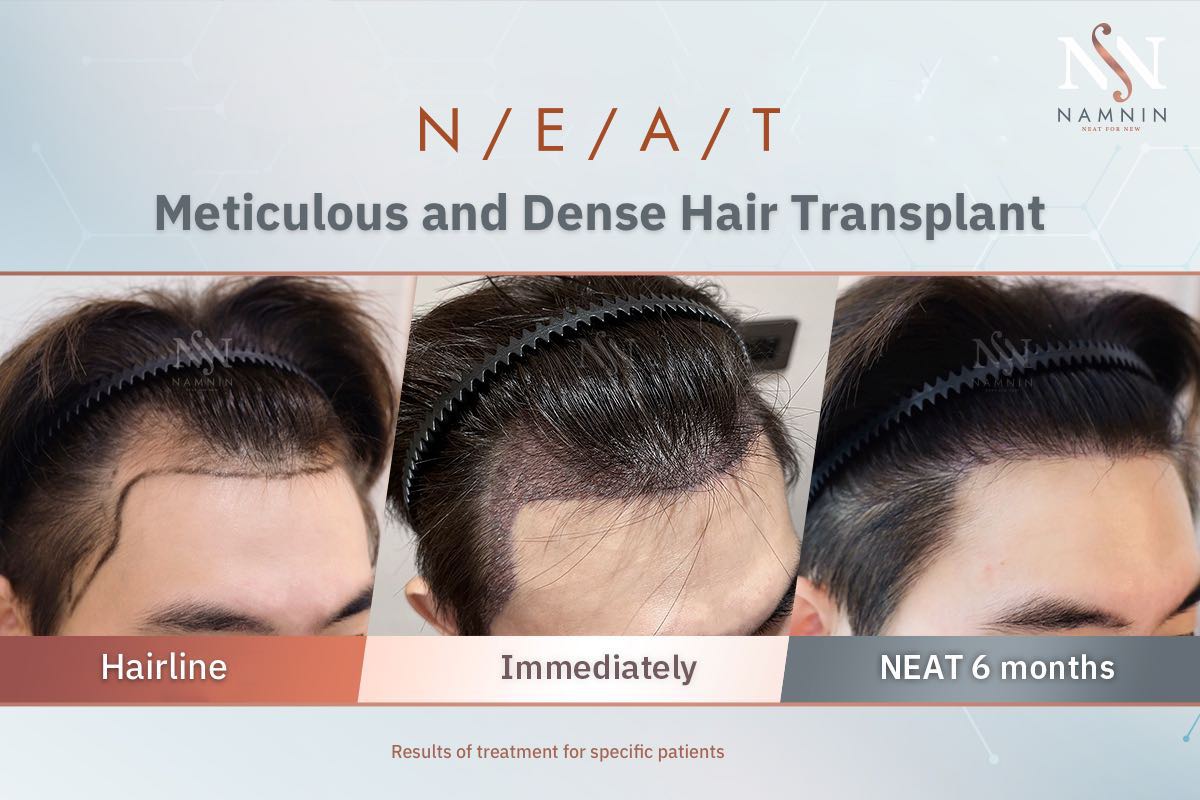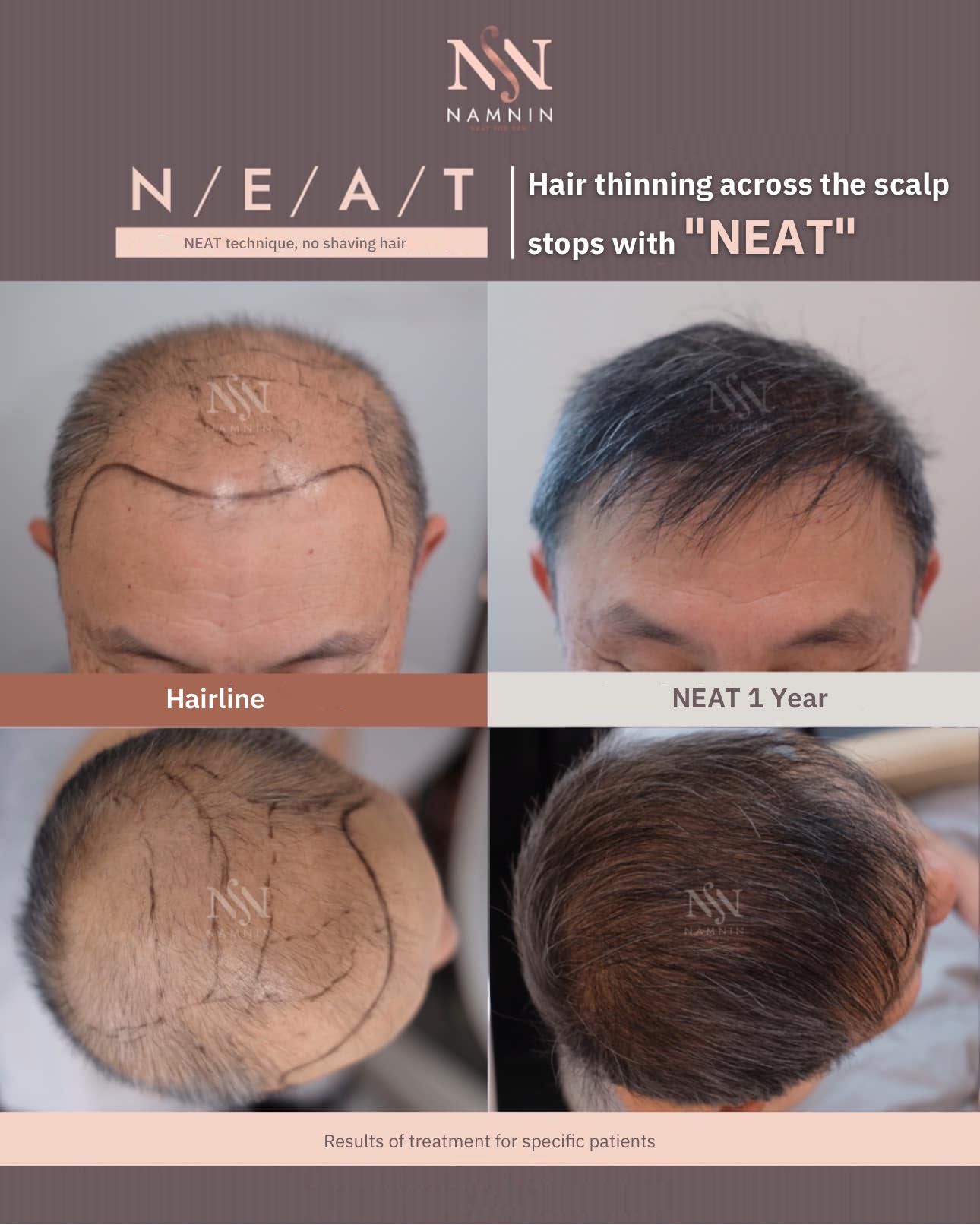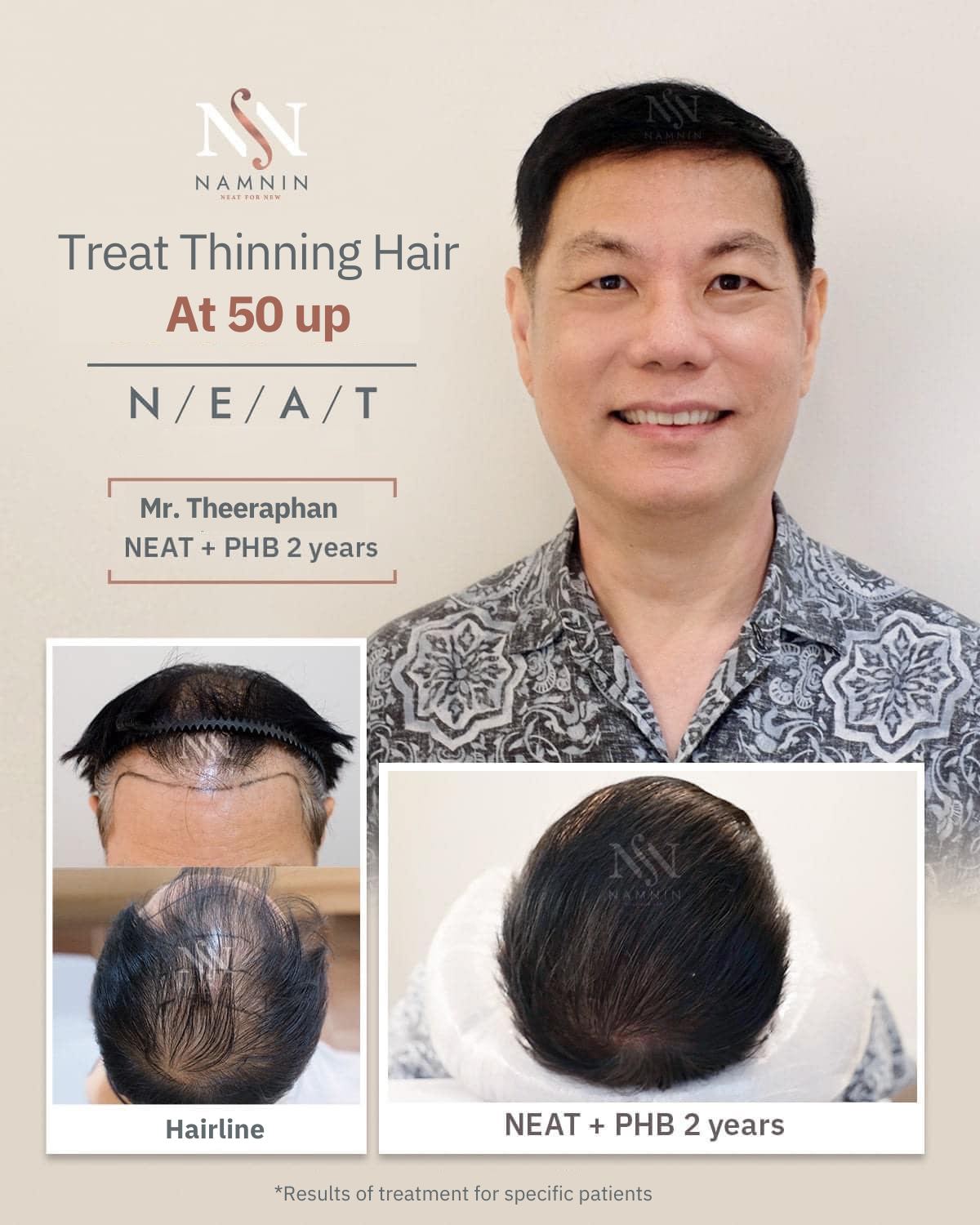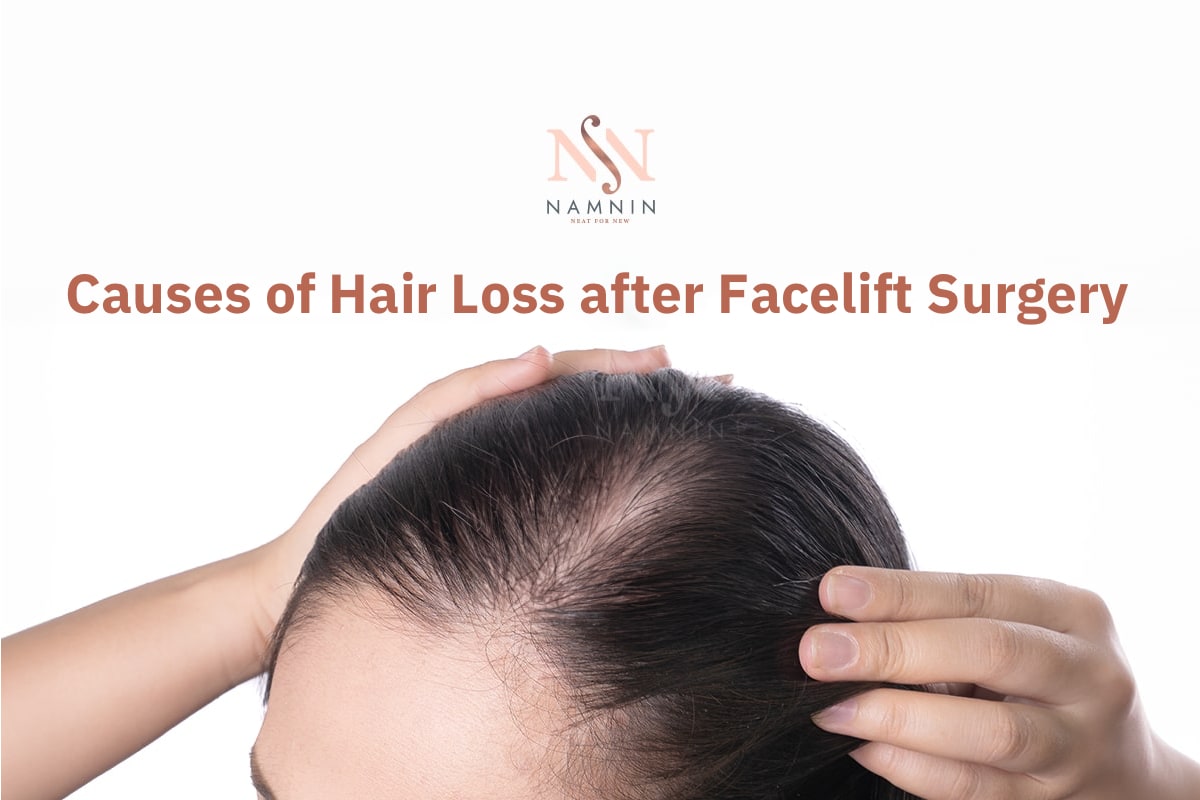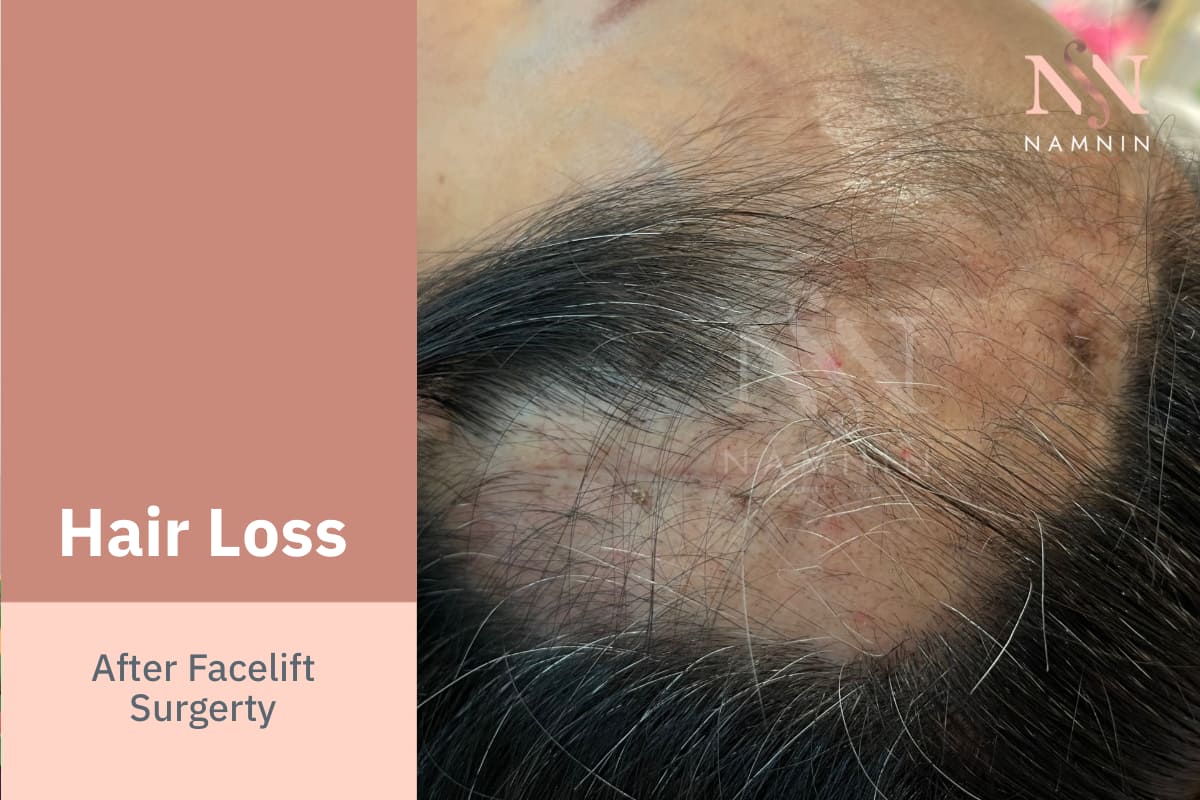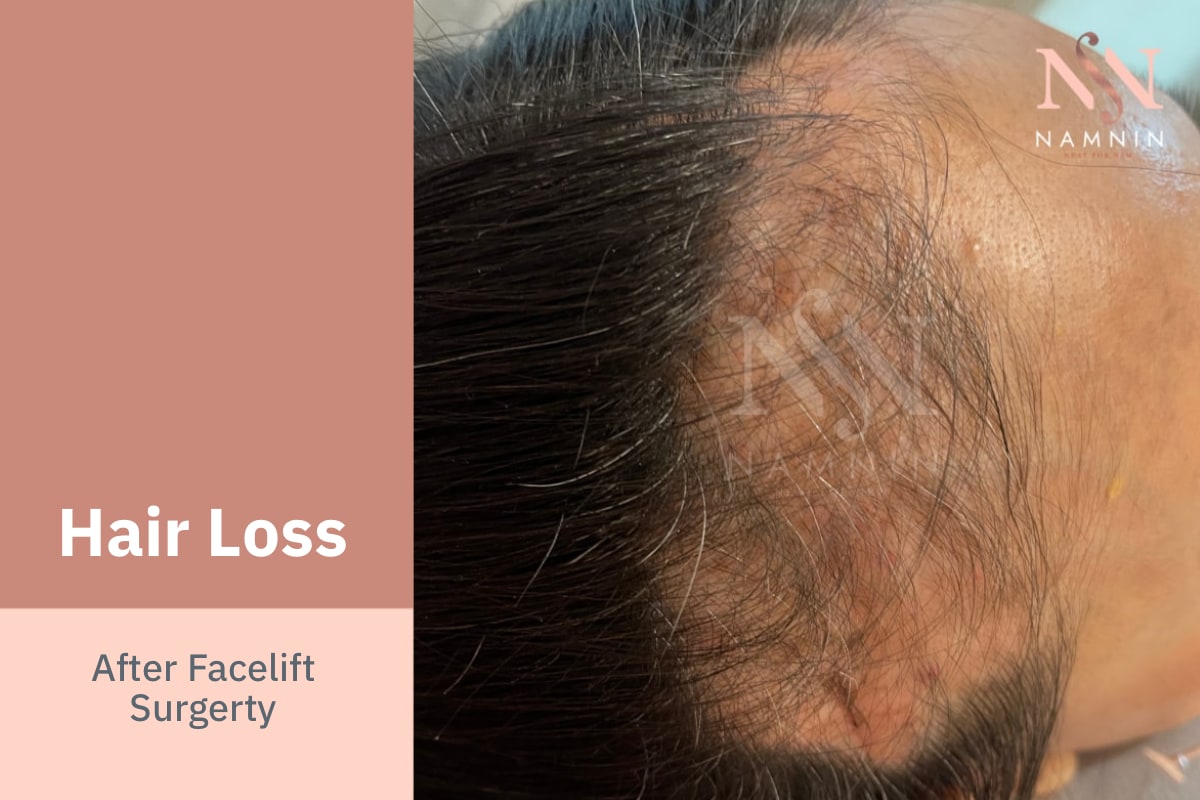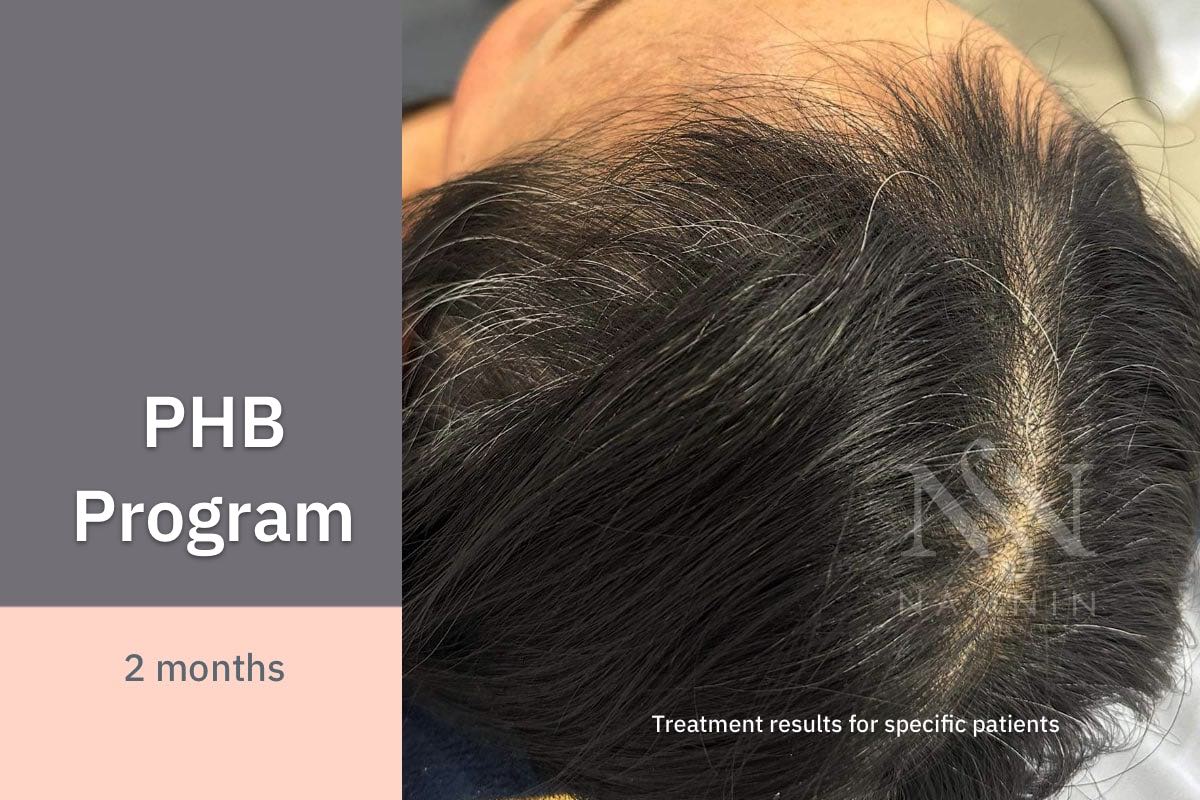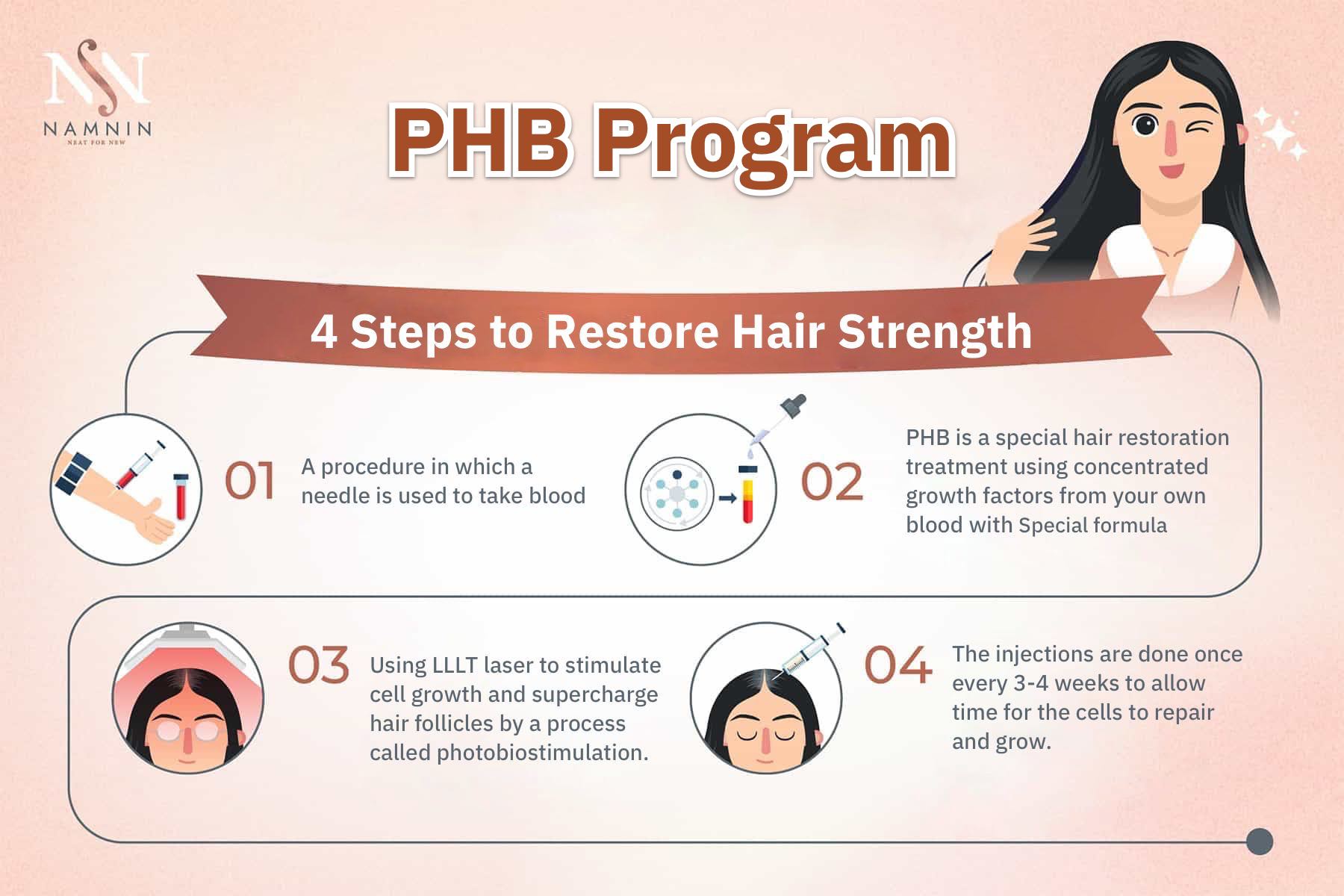"Understanding the 5 Hormones that Cause Hair Loss You Should Know"
On a daily basis, it is normal for our hair to shed, typically ranging from 50 to 100 strands per day as part of the hair growth cycle. However, as one ages, combined with risk behaviors that contribute to weakened hair follicles, the hair growth cycle tends to shorten. This can lead to increased hair loss beyond the normal range, ultimately resulting in widespread thinning of the hair.
Did you know? In addition to aging and certain lifestyle behaviors that can weaken hair follicles and lead to increased shedding, hormonal factors also play a significant role. Hormones are an important cause of hair loss, comparable to other factors. Today, we will explore the hormones in the body that contribute to hair loss. What hormones are involved, and what treatment options are available for hormone-related hair loss? Let’s read on together!
5 Hormones that Contribute to Hair Loss Problems
1. DHT Hormone
The hormone most commonly known as a primary cause of hair loss and thinning is DHT, or dihydrotestosterone. This hormone is predominantly found in males, but it can also be present in females, albeit in lower quantities.
The DHT hormone has the function of regulating hair and body hair growth. However, when this hormone becomes imbalanced or abnormal, it often adversely affects the hair and scalp. It inhibits the growth of new hair while also preventing existing hair from receiving adequate nutrients. This leads to weakened hair follicles and subsequently results in hair loss.
2. Estrogen Hormone
Estrogen is a female sex hormone that helps regulate various bodily functions in women, ensuring they operate normally and effectively. However, when the levels of this hormone are lower than normal or become imbalanced, it can negatively impact overall health.
One common issue arising from estrogen imbalance is hair loss and weakened hair follicles. This hormonal disruption can also lead to hair that is thin, flat, frizzy, and difficult to style. Such abnormalities in estrogen levels are often observed in women during menopause and postpartum mothers.
3. Cortisol Hormone
Cortisol, commonly known as the stress hormone, is released by the body in response to stress. This hormone can have numerous adverse effects on health, particularly concerning hair growth. Elevated levels of cortisol shorten the hair growth cycle, ultimately leading to hair loss.
4. Thyroid Hormone
Hair loss related to thyroid hormones can affect anyone, regardless of gender. When the thyroid gland functions abnormally, it can disrupt the sebaceous glands in the body, leading to increased oil production on the skin, particularly on the scalp. Excess oil accumulation on the hair and scalp can clog hair follicles, weaken them, and result in noticeable hair loss.
5. Insulin Hormone
We may be familiar with insulin as the hormone that regulates blood sugar levels and is associated with diabetes. However, this hormone also negatively impacts hair follicle function and can contribute to increased hair loss. This is due to various reasons, including:
- Blood Sugar Regulation: Insulin plays a crucial role in transporting glucose into cells for energy use. However, when insulin levels are abnormal—whether too high or too low—blood sugar levels become unstable. This instability is a risk factor for various diseases, including hair loss.
- Blood Circulation: Prolonged high blood sugar levels can damage various organs, including the scalp, and affect blood circulation to the hair follicles. This leads to insufficient nutrient delivery to the follicles, weakening them over time.
- Inflammation: Chronic high blood sugar levels can trigger inflammation throughout the body, including the scalp. This inflammation can damage hair follicle cells and increase the likelihood of hair loss.
Guidelines for Preventing and Treating Hormone-Related Hair Loss
When experiencing increased hair loss beyond the norm, it may be a sign that hormonal imbalances are occurring in your body. Fortunately, there are prevention and treatment methods for hormone-related hair loss, which include:
1. Modify Lifestyle Habits
Changes in certain hormone levels can result from inappropriate daily lifestyle behaviors. For example, stress can lead to elevated cortisol levels, while a diet high in sugar can increase insulin levels. By avoiding these detrimental behaviors and making lifestyle adjustments, you can help alleviate issues related to hair loss and thinning.
2. Use Medications for Hair Loss as Prescribed by a Doctor
If you are experiencing hair loss due to hormonal issues and have received an appropriate diagnosis from a physician, the doctor will typically prescribe medications to help regulate hormone levels to normal ranges. Additionally, you may also use hair loss treatments to strengthen hair follicles and stimulate new hair growth concurrently. Options include medications such as finasteride, minoxidil, etc.
3. Choose Hair and Scalp Health Products
In addition to modifying daily lifestyle habits, to continuously nourish the health of your hair and scalp, we recommend trying hair and scalp care products. For example:
- ELIXIR HAIR SERUM BY NEAT HAIRNUE
A special formula serum developed by Dr. Nin, specifically designed to nourish hair for individuals experiencing thinning. It helps reduce hair loss while promoting thicker and stronger hair.
This is a hair-nourishing vitamin from Namnin that combines the benefits of various natural extracts. It helps reduce oiliness and inflammation of the scalp, decreases hair shedding, and provides essential nutrients to the hair, ensuring that new growth is thicker and stronger.
4. Receive Treatment Programs to Strengthen Hair Follicles
For those who wish to see faster results, you can opt for treatment programs designed to strengthen hair follicles, such as the PHB (Premium Hair Booster) program at Namnin Clinic. This treatment program involves a special injection formula administered throughout the scalp, specifically designed to address issues of thinning hair and increased shedding. Even if you are experiencing significant hair loss and have insufficient hair grafts for transplantation, this method can help restore your hair density and fullness.
5. Hair Transplantation
If you are experiencing hair loss due to hormonal factors, resulting in widespread thinning that significantly affects your confidence, a permanent hair transplant can be an effective solution. This method addresses hair thinning efficiently by using healthy hair follicles from the back of the scalp and transplanting them to areas with thinning or no hair. This results in strong, natural-looking hair, allowing you to regain fullness and density once again.
Summary
There are various hormones that can cause hair loss. To ensure the most effective and targeted treatment for hormone-related hair loss, Namnin Clinic recommends consulting with a specialist to diagnose the underlying causes of your hair loss. This includes identifying which specific hormone is involved and determining the most appropriate treatment options available.
Because hair loss and thinning can become increasingly difficult to treat if left untreated for too long, it can cause emotional distress each day. Therefore, seeking prompt treatment increases the likelihood of restoring your hair to its original thickness. Additionally, the cost of treatment is generally lower when addressed early compared to when the problem has escalated.
